TURKEY TRAVEL BLOG
Istanbul, cappadocia, ephesus and more...


Ottoman Empire Attractions in Istanbul
One of the most famous empires throughout history is without a doubt, the Ottomans. At one stage, they ruled nearly half the world and their traditions, religion and beliefs spread across their kingdom.
Their capital that was Constantinople is now known as Istanbul and it is the ideal destination to gain an insight of the Sultans, their entourages, their families and historical timeline. The Ottoman landmarks that cover the city include palaces, mosques, castles and much more.
Top 5 Ottoman Empire Attractions in Istanbul
The grand topkapi palace.
At least half a day is needed to explore this palace and its large extensive grounds. As the hub of the Ottoman Empire, when they first invaded Constantinople in 1453, the complex grew to become a fully functioning city.
It was the nerve centre for many sultans who occupied it for 400 years until the new, modern and more westernized Dolmabahce Palace was built. Areas to explore include the kitchens, circumcision rooms, jewellery and armoury exhibitions, although the area gaining the most admiration is the décor of the harem.
The Majestic Blue Mosque
Built between 1609 and 1616 by the Ottoman Empire’s most favoured architect, Mimar Sinan, the Blue Mosque is often the first attraction that tourists visit. Taking its name from blue stained glass windows and exquisite Iznik tiles, its most quirky characteristic is the six minarets instead of the normal four.
Rumeli Castle
This landmark is more iconic than anything. It was used by the sultan Mehmet the 2 nd to prepare his invasion of Constantinople in 1452. Restoration took place in 1953 and although the interiors are available for viewing, most visitors appreciate seeing the exterior while on a tour of the Bosphorus .
Grand Bazaar
As one of the biggest shopping centres in the world, the Grand Bazaar is a maze of hundreds of streets and thousands of shops. In true Ottoman fashion, traders are grouped together according to the product they sell. Built in 1461, don’t be surprised to lose your way within the bazaar unless you are with a knowledgeable guide.
The Westernized Dolmabahce Palace
As the last home of the Ottoman Empire, Dolmabahce Palace is a sick contrast when comparing the lush décor with the fact that at the time of its construction, the Ottoman Empire was nearly broke and classed as the “sick man of Europe. “
Separated into the harem (for women) and Selanik (for men) areas, it has 258 rooms but one in particular is favoured because it was the death place of Mustafa Kemal Ataturk, the founder of the Modern day republic of Turkey.
All these Ottoman landmarks can be seen on our daily and package tours of Istanbul.

- Living In Croatia
- Croatian Recipes
- Balkan Recipes

Home > 8 Ottoman Palaces In Istanbul & How To Get To Each One
8 Ottoman Palaces In Istanbul & How To Get To Each One

Written by our local expert SJ
Sarah-Jane has lived in Croatia for 10+ years. SJ, as she is known, has been traveling the Balkans & beyond since 2000. She now shares her passion for traveling with her husband & kids.
Here is my guide to the best palaces in Istanbul that we suggest you visit. These palaces of Istanbul are sure to delight, showcasing the grandeur and complexity of what was once the residence of the Ottoman sultans and the capital of the empire.
Read on to discover fascinating facts, delve into the history, and learn how you can reach each one by public transport.
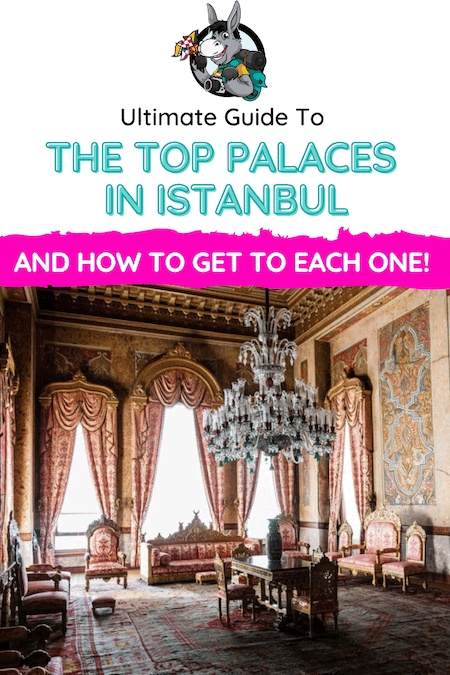
Today, we are traveling to Istanbul , one of the most popular cities in the world. The city, which has hosted many nations and countries for centuries, is the capital of many cultures and civilizations and is home to millions of people. Beautiful Istanbul sits across two continents and is a crossing point of Eastern and Western culture.
If we try to describe Istanbul fully, it would be necessary to write volumes of books about this interesting city. Instead, this article will only discuss the Istanbul palaces we know you want to add to your Turkey travel itinerary.
Skip Ahead To My Advice Here!
1. Topkapı Palace – Topkapi Palace
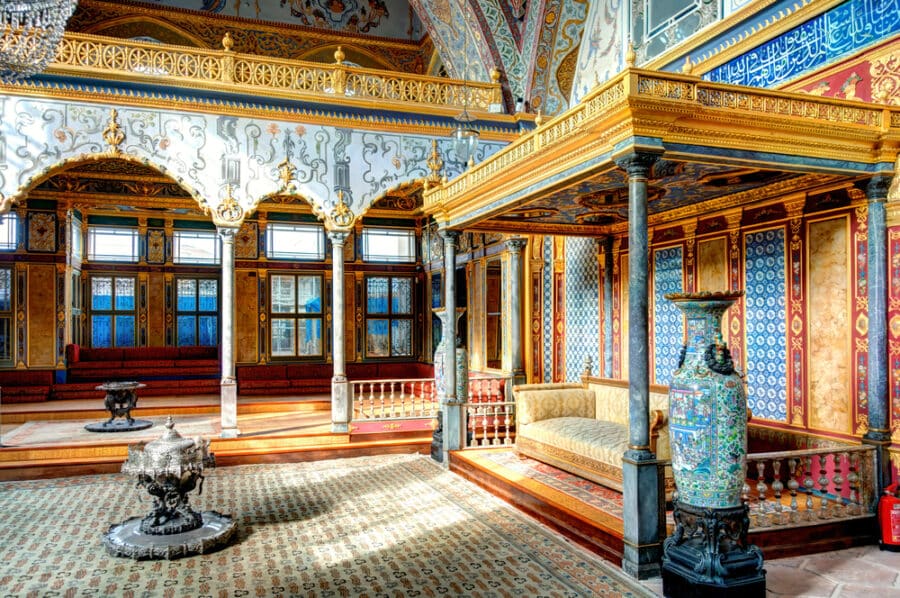
After Fatih Sultan Mehmet (II. Mehmet) conquered Istanbul, he had Topkapi Palace built, which was used as a castle during the Byzantine period. Thus, the first Ottoman palaces in Istanbul emerged.
Once A Royal Residence
Topkapi Palace stands out with its slightly different architecture from that period’s Eastern and Western cultures. The palace has four central courtyards with other functions. For example, the second courtyard was used as the administrative center at that time.
If you want to learn in detail what is what and which part is used for what, you can take a guided tour by paying extra. You can visit the palace independently, but we recommend you take a guided tour.

Find local tour options here.
One of the most important features of Topkapı Palace is that it was the place where the Ottoman sultans lived until the 17th century. After the founding of the Turkish Republic in 1924, the palace was converted into a museum. In 1985, this spot became a UNESCO World Heritage Site as part of the “Historic Areas of Istanbul.”

Fun palace facts: Kösem Sultan, one of the most powerful and influential women in Ottoman history, was the Valide Sultan to her sons Murad IV and Ibrahim I and her grandson Mehmed IV. She lived in the Topkapı Palace and later in the Old Palace (Eski Saray).
What We Loved At Topkapi Palace
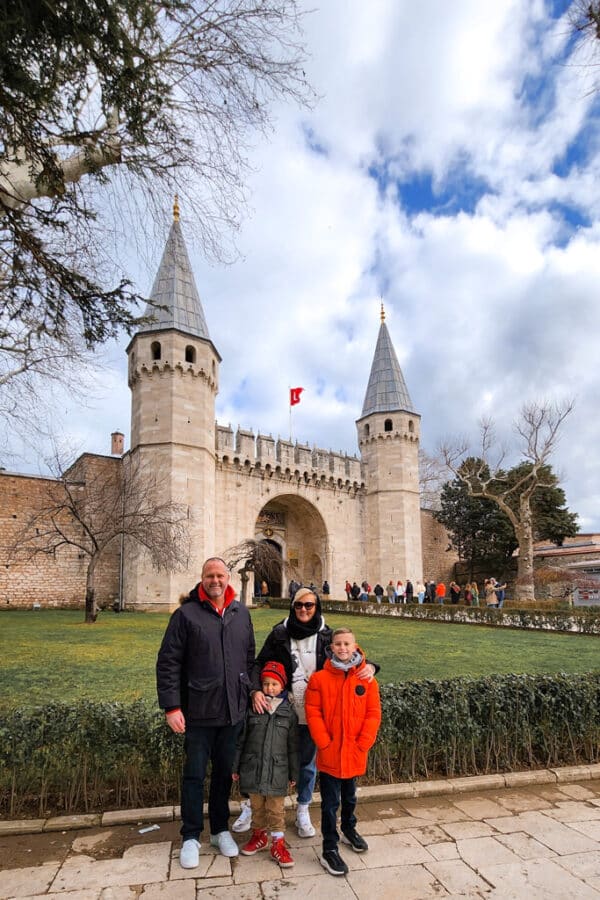
- Located close to Topkapı Palace: There are many popular things to see near Topkapı Palace, such as the Blue Mosque , Grand Bazaar, Hagia Sophia, Basilica Cistern, and the Archeology Museum
- How to get to Topkapı Palace Istanbul: You can easily get to Topkapı Palace by public transportation. You can take the T1 tram; it takes only 5 minutes to walk from Sultanahmet stop to Topkapı Palace
2. Çırağan Sarayı Palace – Çırağan Palace Kempinski
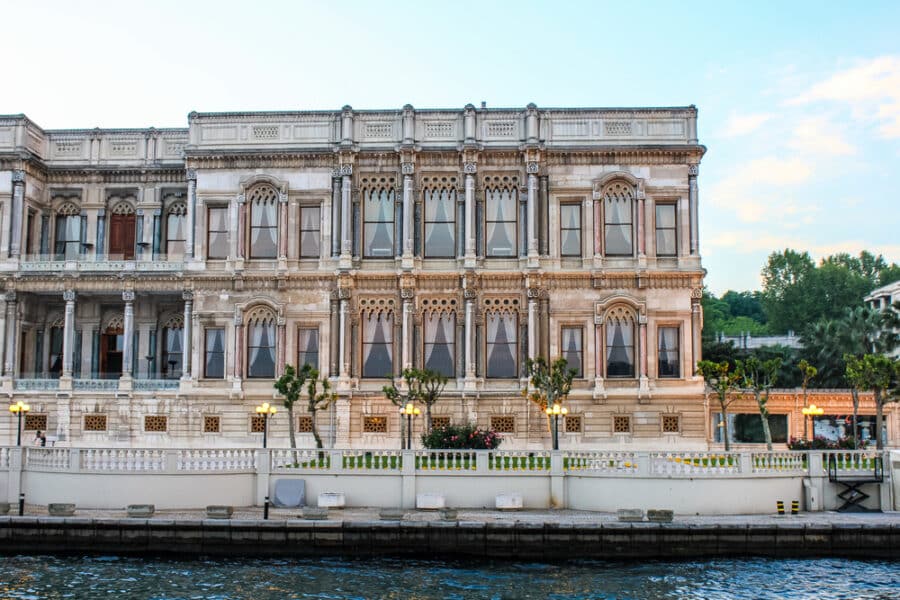
Çırağan Palace is among the prettiest palaces in Istanbul. There are many reasons we recommend you visit this palace; the most interesting reason we recommend a trip to this Istanbul palace is that here you have the opportunity to stay in this palace.
Çırağan Palace gives you the opportunity to travel in time . This palace was built at a time when every Sultan wanted to live in his own house instead of his parent’s home. You can experience things that even the Sultan could not experience in this palace, which was built during the reign of Sultan Abdulaziz. Sultan
Suite is ranked 14th on CNN’s list of “The 15 most expensive hotel suites in the world”. It comes then as no shock that Çırağan is the most expensive place for accommodation in Istanbul.

- Why else you should head to Çırağan Palace Istanbul? From here, you can also enjoy a unique view of the Bosphorus . It’s also the ideal atmosphere for weddings or other parties
- Located close to Çırağan Palace: Once at the palace, you’ll notice that it is very close to other Istanbul palaces; you can take the ferry to Beylerbeyi Palace, walk or take a taxi to Dolmabahçe Palace and Yıldız Palace
- How to get to this Istanbul palace : Jump on bus numbers 129T, 22, 30D, 42T, 57UL, DT1, or U1. You can take the Metro and look for lines M2 and M7.
Brands We Use And Trust
3. beylerbeyi palace.
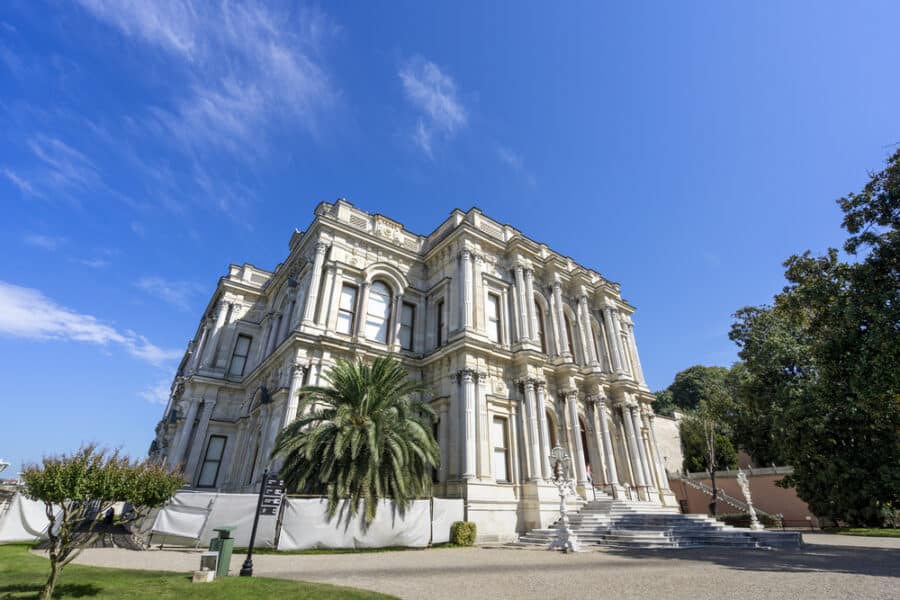
You can be enchanted by stepping into this palace built in the 19th century. The word Beylerbeyi means lord of the aghas, and I think that the reason is that it is one of the best palaces of Istanbul.
The palace is located on the Bosphorus, a spectacular part of Istanbul which connects Asia and Europe. It is the last palace where the Ottoman sultans lived, as it was the place where Abdulmecid was put under house arrest. Sultan Abdulmecid II lived here under house arrest.
The construction of the palace was started during the reign of Sultan Mahmud, but it was Sultan Abdülaziz who turned it into its present form. He demolished the building and had it rebuilt after a fire.
There is a reason why Turkish President Ataturk loved to host guests at Beylerbeyi Palace, even in the early days of modern Turkey; from magnificent gardens to detailed ornate ceilings, anyone who loves architecture should not miss visiting the magnificent summer residence as a relic of the empire.
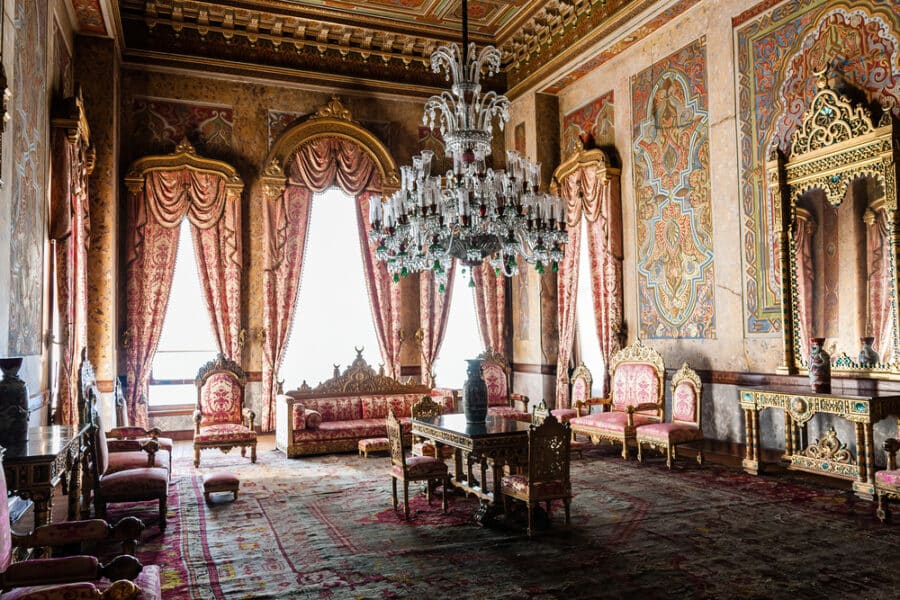
How to get to Beylerbeyi Palace Istanbul: You can get to this Istanbul palace in four different ways; bus, train , Metro, and cable car. You can use buses 14M, 15B, 15F, 251, 34AS, and 34G. You can board the Marmaray train, M5 for the Metro, or jump on Minibus C-115 or Minibus and C118 for the cable car.
4. Dolmabahçe Palace – Dolmabahce Palace

This palace was built because the Sultan thought Topkapı Palace was old and wanted to move to a new one. The Sultan also wanted this newly built palace to rival many European palaces.
Dolmabahçe Palace was used in two different periods, 1856-1887 and 1902-1922. During the Republican period, this palace was converted into the Presidential Palace. Mustafa Kemal Atatürk, the founder and leader of the Republic of Türkiye, used the palace as a summer residence and wrote some of his important works here. Another feature of this Turkish palace is that leader Mustafa Kemal Atatürk passed away in this palace.
What is impressive in this palace in Istanbul is that the crystal chandeliers weigh several tons and also that Dolmabahçe Palace witnessed the late Ottoman period and the early modern era. This palace is not only interesting because of its physical and visible features but also because the palace was in operation over both the Ottoman period and the Republican period.
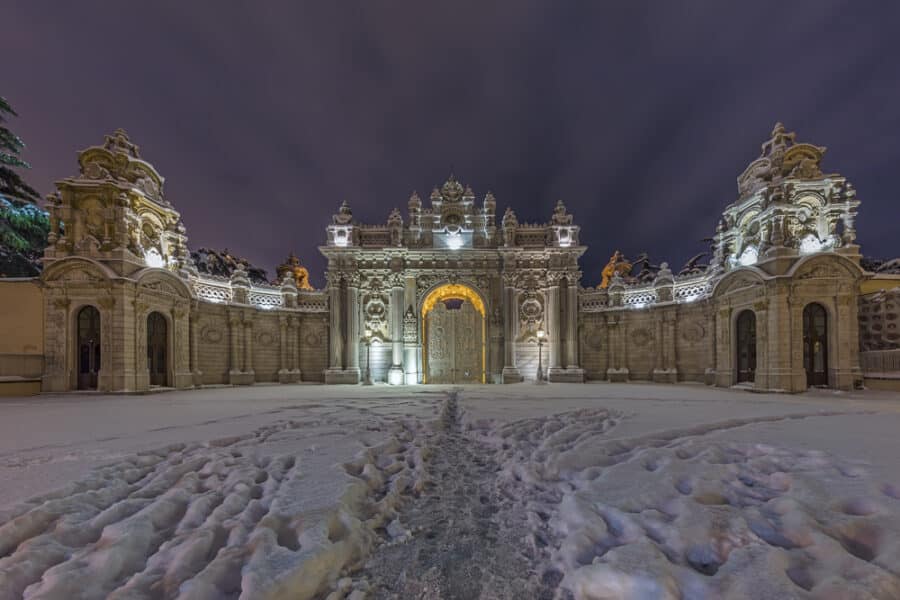
How to get to the Dolmabahce Palace: located in the Beşiktaş district of Istanbul, on the European coast of the Bosphorus, the cheapest way to get to the palace is by tram; however, the fastest way to get here is by taxi.
5. Yıldız Palace – Yildiz Palace Museum
The name of this palace in Istanbul translates to Star Palace. In addition to being recognized by UNESCO, this palace has an architecture that combines the west and east. It can be said that the palace, which was built by the Italian architect Raimondo D’Aronco, was influential in the unification of this east-west culture.
Yıldız Palace is also close to Dolmabahçe Palace, but the palace does not face the Bosphorus . Although certain mansions date back to Sultan Abdülaziz’s reign, Abdülhamid used this building between 1876 and 1909. In those years, the Sultan expanded the mansions and created a small city with an opera house, carpentry shop, and even an imperial porcelain factory.
Suppose you are interested in music, art, and literature. In that case, I recommend you visit Yıldız Palace because the palace has a library that exhibits books and photographs, which you should definitely see.
How to get to Yıldız Palace Istanbul: Situated in Beşiktaş, Istanbul. You can take a bus, Metro, ferry, and taxi to get there with ease.
6. Küçüksu Palace – Küçüksu Kasrı
Technically a pavilion.
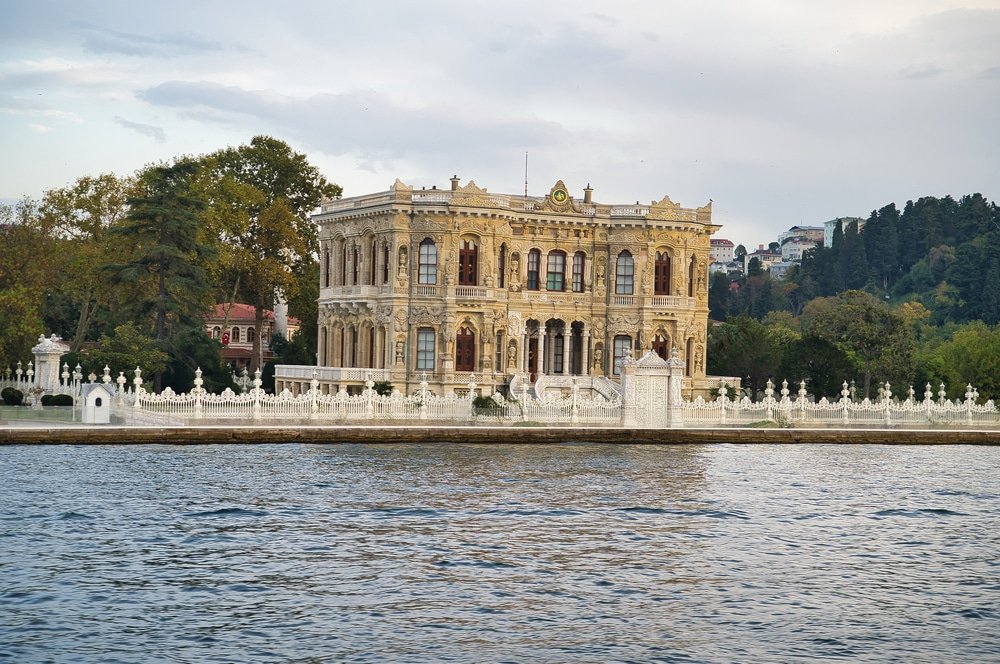
Küçüksu Palace, built in the mid-19th century by the Sultan, stands as a testament to the architectural marvels along the Bosphorus strait on the Asian side of Istanbul.
Originally used as a hunting lodge and a resting place by several sultans, this summer palace invites you to travel back in time with its European-style furniture, crystal chandeliers and mirrors alongside ceiling decorations and marble that speak volumes of the opulent lifestyle.
It’s one of the palaces in Europe where you can immerse yourself in the splendor of the last residences of the Ottoman elite.
- How to get to Küçüksu Palace Istanbul: Getting there is straightforward: hop on a bus or a metro to the Anatolian part of Istanbul and enjoy a scenic walk or a short taxi ride to this historical gem.
7. Ihlamur Palace – Ihlamur Kasrı
Ihlamur Palace, ordered by Sultan Abdulmecid, sits in a large park of flowers and serves as a prime example of palaces and pavilions designed for leisure and relaxation.
Nestled in Beşiktaş, this summer residence of the Sultan Abdülmecid features lush gardens and two main pavilions that offer a serene escape from the hustle and bustle. It was a favored lodge and a resting place, reflecting the blend of Ottoman and European decorative arts.
- How to get to Ihlamur Palace Istanbul: Easily accessible by metro and bus lines serving Beşiktaş, Ihlamur Palace stands as a vibrant reminder of the Ottoman Empire.
8. Aynalıkavak Palace – Aynalıkavak Kasrı
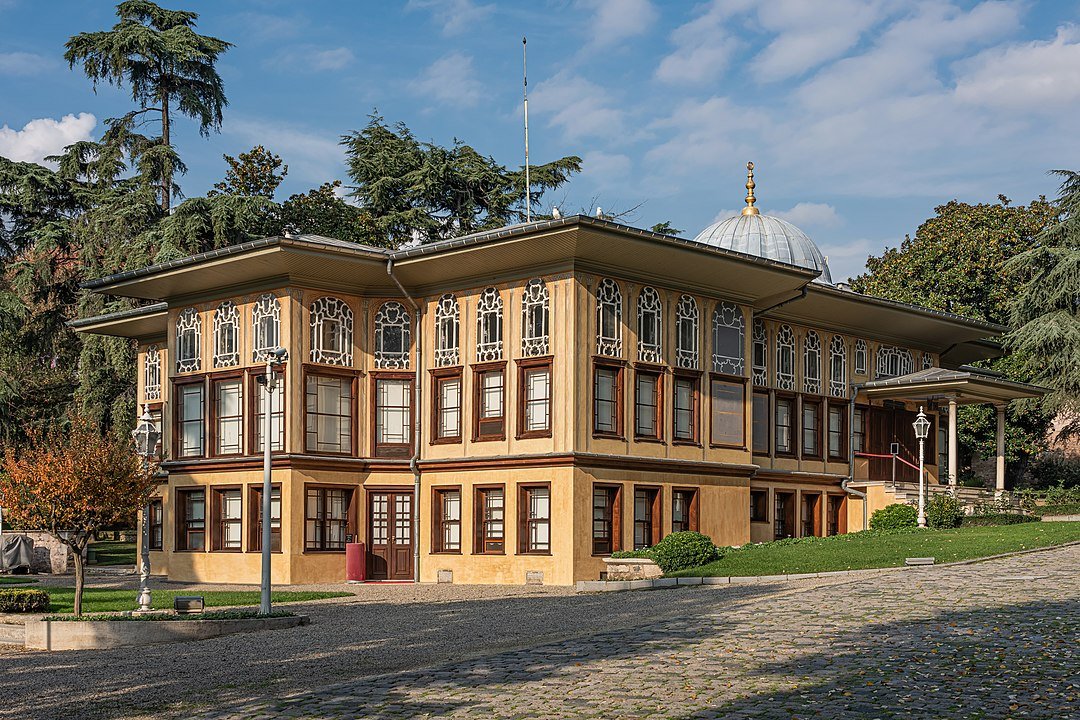
Aynalıkavak Palace, once a residence of the Sultan of the Ottoman Empire, now serves as a cultural beacon in the Hasköy neighborhood on the Golden Horn’s shores.
This palace was the first to be built with the intention of hosting cultural events and concerts, opening as a museum to the public. Its architecture and gardens were the brainchild of an Ottoman governor, showcasing shipyard palaces’ grandeur.
As one of the last residences of the Ottoman dynasty, it played a pivotal role as a resting place and venue for high society events.
- How to get to Aynalıkavak Palace Istanbul: To reach this historic spot, take a bus towards Hasköy and enjoy a stroll through one of Istanbul’s less explored areas.
Move This Adventure To Your Inbox & Get An Instant Freebie

No spam. Unsubscribe at any time.
Istanbul’s Beautiful Palaces FAQs

How many palaces are there in Istanbul?
Istanbul is home to a significant number of palaces, each with its unique history, architectural beauty, and cultural significance. These residences were the homes of Ottoman Sultans.
What is the significance of the palaces along the Bosphorus?
The palaces along the Bosphorus strait were the places that Ottoman Sultans used as residences, and they showcase traditional Ottoman architecture.
What is the Ihlamur Pavilion?
The Ihlamur Pavilion is a traditional Ottoman pavilion located in Istanbul. It was initially built as a lodge and resting place for several sultans.
How can one get to the Palace of Kempinski Istanbul?
Palace Kempinski Istanbul can be accessed by various modes of transportation, such as taxis and public transport. Jump on bus numbers 129T, 22, 30D, 42T, 57UL, DT1, or U1. You can take the Metro and look for lines M2 and M7.
Which Sultan ordered the construction of the first palace in Istanbul?
Sultan Mehmed II, also known as Mehmed the Conqueror, ordered the construction of the first palace in Istanbul. Known today as Topkapi Palace.
What can visitors expect to see in the palaces in Istanbul?
Visitors to the palaces in Istanbul can expect to see traditional Turkish architecture, ceremonial halls, audience halls, Turkish baths, and rooms used by the Ottoman Sultans.
Are the palaces in Istanbul open to the public?
Yes, some of the palaces in Istanbul have been converted into museums and are open to the public for visitation and exploration of Ottoman history. All of the ones in this guide can be visited all year round.
Now that you have a list of the palaces of Istanbul tell us which one of these Istanbul palaces you will set foot in first.
- The Do’s And Don’ts To Visiting Türkiye
- Best Places To Visit In Turkey For Every Type Of Traveler
- How To Get From Istanbul To Cappadocia
- Best Nightlife In Istanbul
- Day Trips To Take From Istanbul
- Greek Island Day Trip From Southern Türkiye
- Best Beaches To Visit In Turkey
- Ephesus, UNESCO World Heritage Site
- How To Get From Pamukkale To Cappadocia
Leave a Reply Cancel reply
Your email address will not be published. Required fields are marked *
Save my name, email, and website in this browser for the next time I comment.
This site uses Akismet to reduce spam. Learn how your comment data is processed .
Subscribe To Unlock Your FREE Customizable Travel Packing List & All Our Best Tips!
Unlock Your FREE Customizable Travel Packing List!
Subscribe Now For Instant Access To Stress-Free Packing
Buy & Save 30% Now
Early Summer Sale 30% Off. Buy Your Pass Now!
Starting from just €29 per day!

14 Must-Visit Palaces and Mansions of Istanbul: A Guide
Throughout history, Istanbul acted as the capital of many empires because of its unique location between two continents. Because of this, there are still countless historical sites in the city, particularly palaces and mansions from the Ottoman Empire. If you want to learn about these luxurious accommodations and/or visit them, here are the **best palaces and mansions in Istanbul*.
- Topkapi Palace: As it is one of the most known places in Istanbul, Topkapi Palace gathers hundreds of thousands of visitors every year. Built in the eastern side of the Fatih district, this palace overlooks both the Bosphorus and the Golden Horn. Since it is easily the most important palace in the Ottoman history, you will find many interesting and significant Ottoman relics inside, such as weapons, armors, paintings and engravings.
- Yildiz Palace: Built in the year 1880, Yildiz Palace was the last Ottoman Palace that was ever built. It was used by Sultan Abdulhamid II and was converted into a luxury casino after the foundation of Republic of Turkey. It later became a guest house for statesmen. Today, it is a museum complex with multiple parts. Inside, you can find the state apartments, the Sale Kiosk, Malta Kiosk, Cadir Kiosk, Yildiz Theatre, Opera House and the Imperial Porcelain Factory.
- Dolmabahce Palace: After the Topkapi Palace, Dolmabahce Palace is the second most famous historical Ottoman palace in Istanbul. Built in the late Ottoman era, this place is one of the most luxurious buildings you can see. The palace has 285 rooms and 46 halls, 6 baths and 68 toilets. It was established on an area of 110,000 square meters. Plus, the interior is made out of very expensive materials like crystal and gold. In its period, it was one of the most important **Ottoman palaces in Istanbul**.
- Ciragan Palace: Located between the shores of Besiktas and Ortakoy, Ciragan Palace was once an Ottoman palace that was taken down and rebuilt many times. The one we know today was completed during Sultan Abdulaziz’s reign in 1871. Like many other Ottoman palaces, the materials used in Ciragan Palace are rare and expensive, like porphyry, marble and mother-of-pearl. Today, it is one of the most luxurious hotels in Istanbul under Kempinski.
- Beylerbeyi Palace: As one of the few Ottoman palaces that was built in the Asian side of Istanbul, Beylerbeyi Palace has a significant place in the Turkish history. Built in the year of 1865 by the famous Armenian architect Sarkis Balyan, this magnificent place was used to host foreign statesmen, like Serbian Prince, King of Montenegro, Shah of Iran, French Empress, mainly in the summer years. After he was dethroned, Sultan Abdulhamid II was held here until his death in 1918. While it is less known than other imperial palaces, it is definitely one of the most significant **historical palaces of Istanbul**.
Choose Your Pass
Choose from one of Istanbul Tourist Pass® options below providing Free access to 100+ Top Attractions, Tours and essential Local Services with over 80% savings.
2 Days Pass
Child(5-12), order total.
- Tiled Pavilion Museum: Tiled Pavilion is the first building Mehmet the Conqueror built inside the Topkapi Palace complex. Completed in the 1472 according to the inscription on the entrance, it was mainly used by the sultans for pleasure. It takes its name from the special Iznik tiles it was made from. Inside, you can get a closer look of the many Islamic relics that were decorated with the same Iznik monochrome art style. It is definitely one of the top attractions in Istanbul.
- Adile Sultan Pavilion: This pavilion was built in 1858 by Sarkis Balyan as a gift to the Sultan Abdulmecid’s sister Adile Sultan. But the after seeing that the original building sustained a lot of damage, Sultan Abdulaziz rebuilt the pavilion and the building we know today was created. Its Oval Hall has a capacity of 500 people. Plus, it has a meeting room for 200 people, 17 seminars rooms for 30 to 50 people, a cocktail area of 1300 m2 and a garden with a capacity of 1000 people.
- Ihlamur Pavilion: Made from cut stone by Nigogos Balyan during the reign of Sultan Abdulmecit, Ihlamur Palace is one of the two buildings in the area. It is also known as the Merasim Pavilion. The other building, the Maiyet Pavilion, has a much simpler design. Today, you can tour the magnificent garden of this place and enjoy a great Turkish breakfast inside, for a surprisingly cheap price.
- Tophane Pavilion: Located in the Tophane neighborhood near the Nusretiye Mosque, this pavilion was also built by Sultan Abdulmecid. It was designed by the English architect William James Smith. Its parallel location to the sea, decorations on its exterior, the penwork ceiling decorations and the marble fireplaces are amongst its most attractive characteristics.
- Malta Kiosk: This luxurious kiosk is inside the Yildiz Park where you can find the Yildiz Palace. It was built in 1871 by Sultan Abdulaziz in the backyard of the Ciragan Palace. Its most striking feature is the large room with a marble pool adorned by a fountain with a swan motif in front of the sea. The windows of the rooms, which are accessed by stairs on both sides of the pool room, are made of yellow, red, blue and white glasses.
Seaside Mansions
- Recaizade Mahmut Ekrem Mansion: Recaizade Mahmut Ekrem is one of the most significant authors of Turkish literature. This is the mansion he grew up and got married in. Even though it became a corn oil factory in the 1950s, it was restored to its earlier form in 1988.
- Deli Fuad Pasha Mansion: This mansion is located in Istinye Cove and gets its name from the Fuat Pasha, an Ottoman soldier. He had the “Deli” (mad) title because of his brave actions during battles. He bought the mansion after he returned to Istanbul from his exile in Damascus and was the fourth owner of the mansion.
- Mediha Sultan Mansion: Built by Mustafa Reşit Pasha in 1830, this mansion was used as shelter by Damat Ferit Pasha when he allied with the invader forces during the War of Independence. Today, its harem section is used as a hospital while the part for the men is a social facility for Istanbul University.
- Yusuf Ziya Pasha Mansion: Famously known as “The Haunted Mansion” among Turkish people, this building was built by Yusuf Ziya Pasa, an Ottoman statesman. According to rumors, Yusuf Ziya Pasha wanted to impress the woman he loved and keep her away from other people’s sights. After its construction came to a halt during WW1, its 2nd and 3rd floors remained empty for decades. After Yusuf Ziya Pasha passed away, people believed that both Yusuf Ziya Pasha’s and his lover’s souls were still living inside the mansion. Some workers even say that they saw a female ghost in the mirror of the woman’s room. Today, it is owned by Borusan as both an office and a museum, and one of the greatest **mansions in Istanbul**.

Latest Posts

Nightlife in Istanbul: Best Nightclubs, Unique Places, and More in 2023
Istanbul is a surprising city full of wonders. Some of them are historical, some are natural but all of them are unique. This amazing cosmopolitan city has vibrant and rich nightlife as well! So it is fair to say that you're in luck if you appreciate...

Most Popular Historic Mosques You Must Visit in Istanbul
Istanbul is one of the most culturally rich and diverse cities in the world thanks to its deep history which is comprised of many empires, cultures, and religions. Because of this, you can find numerous historically significant sites here, from churc...

A Brief History of Galata Tower
Galata Tower, an architectural gem standing tall in Istanbul, proudly overlooks the bustling neighborhoods of "Beyoglu" and "Karakoy" from its strategic location. Its captivating allure, especially when illuminated by colorful lights at night, has ma...

Where to go in Istanbul with family
Where to go in Istanbul with family If you booked your flight and soon are coming to Istanbul with your children and wondering where to go in the city, we would like to let you know beforehand that there are plenty of great places to visit. Moreover...

August in Istanbul
What to do in August Dear guest, Istanbul lover-to-be! You finally arrived in one of the most popular cities around the world, we hope you throughly enjoy it! Whilst you just arrived, we have few recommendations and tips for making your experience e...

Where to Stay in Istanbul with Family
Where to stay in Istanbul with family You finally booked your flight, and are eager to see the beauty of Istanbul within days from your flight. For your trip here, you rightfully want to stay at one of the best hotels in Istanbul for families that w...

4 Best Indian restaurants in Istanbul
Indian cuisine is widely loved across the globe for its rich ingredients, intoxicating aromas, and fresh blend of spices. Its historic staple diet consisting of whole-wheat flour, rice, and vegetables makes it unique and flavoursome. Travellers, espe...

3 Best Nightclubs in Istanbul
Istanbul, a city full of zest, has so much to offer to its visitors from across the globe. Whether you're interested in its historic architecture, deep-rooted culture & heritage, delicious food, or the city's flashy nightlife, there's something f...

Istanbul Branches of World-Famous Eateries
If one had but a single glance to give the world, one should gaze on Istanbul. Alphonse de Lamartine Istanbul is full of surprises in every corner. The city can surprise you with its colours, sounds, and amazing views as well as t...

Restaurants in Istanbul: Where to Eat in Istanbul Old Town
Istanbul is not only the meeting point of cultures but also of cuisines! There are various options to taste delicious food from all over the world in the city. While visiting the magnificent Hagia Sophia or taking great Instagram photo...

1 2 3 4 5 4.8 out of 5 stars
Istanbul Tourist Pass® has an average rating of 4.8 /5 from 1393 reviews
How it works?
Istanbul tourist pass®, work with us, other links, popular attractions.
- Hagia Sophia
- Topkapi Palace
- Dolmabahce Palace
- Basilica Cistern
- Turkish & Islamic Arts Museum
- Blue Mosque
- Grand Bazaar
- Galata Tower
- Maiden's Tower
- Suleymaniye Mosque
- Bosphorus Dinner Cruise
- Whirling Dervishes Show
- Madame Tussauds
- Sea Life Aquarium
- Zippline Nakkastepe
- Istanbul Airport Shuttle
- Istanbul Transportation Card
- Private Airport Transfer
- Unlimited Internet Access
- Whatsapp Instant Support
- View All 100+
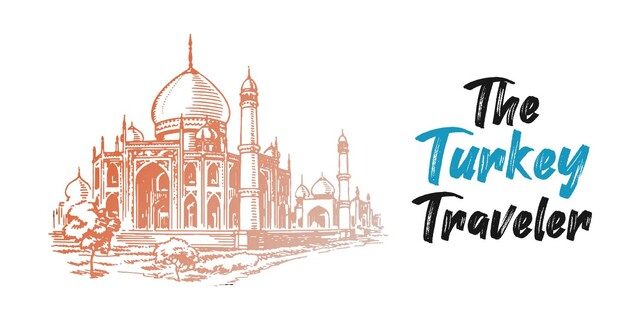
9 STUNNING Palaces in Istanbul
Co-Founder of The Turkey Traveler. Globetrotter, Adventurer, and Frequent Traveler to Turkey!
This website uses affiliate links. For more information, click here .
Istanbul is known for being the impenetrable capital of the former Byzantine, Roman, and Ottoman Empires.
Bordering Europe and Asia, this historic city has been home to several leaders and Sultans, each making claim to this land and defending it with every tooth and nail.
These Sultans have each left their mark in history, but more so, left some beautiful palaces in Istanbul for tourists to see and enjoy.
While there are technically only five palaces in Istanbul, there are also small pavilions that served a function to the royal family that are worth adding to any Istanbul itinerary.
Palaces in Istanbul
Let’s begin by looking at the five main palaces in Istanbul; from the Ottoman residences of the Topkapi Palace, Beylerbeyi Palace, and the Dolmabahçe Palace to the summer houses and presidential palaces. These are the biggest and most beautiful palaces in the city.
Topkapi Palace
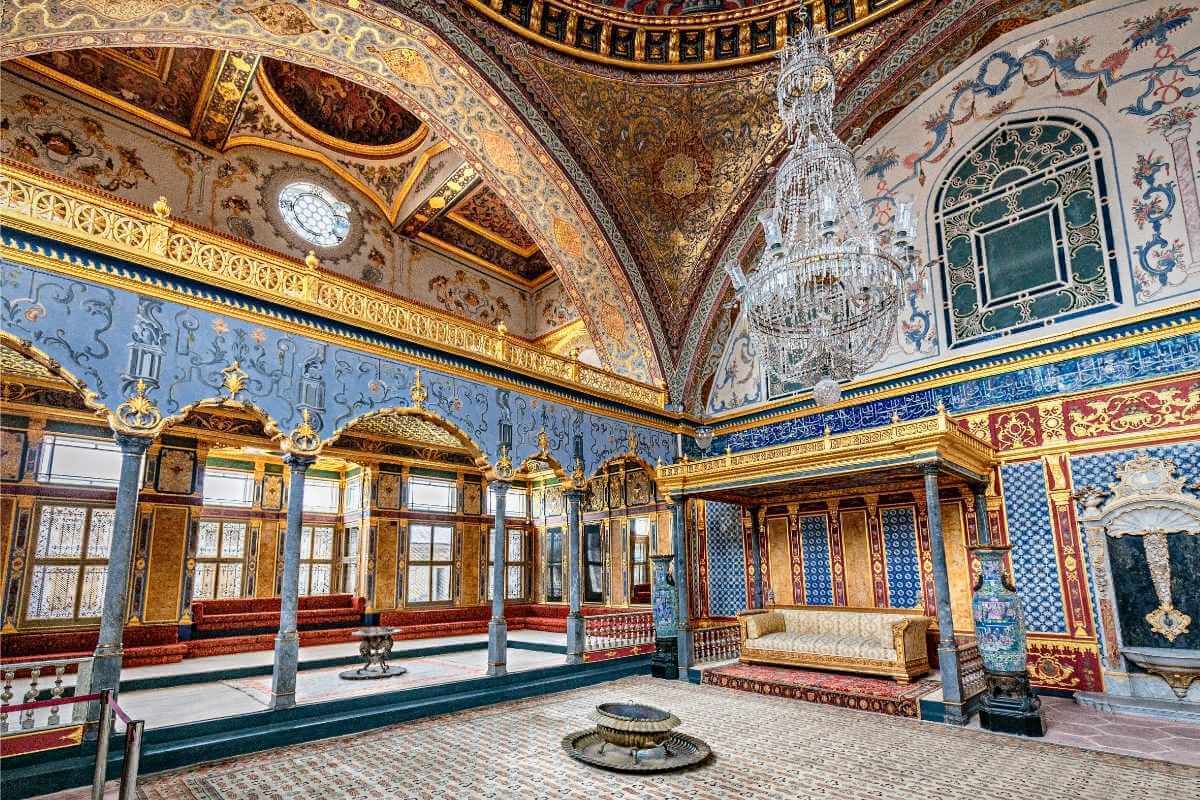
The Topkapi Palace is one of the largest palaces in Istanbul. It’s so big that it’s divided into 15 sections. The complex has four main courtyards and several smaller buildings, including a harem where female members of the family lived.
State officials and important government workers also lived in the palace complex, including the Grand Vizier.
The palace was built by the order of the Sultan Mehmed the Conqueror in 1459, just six years after capturing Constantinople. The palace served as the Ottoman Sultans’ residence and court during the 15th and 16th centuries.
Over the years, the palace has been renovated and expanded after it was damaged in an earthquake in 1509 and a fire in 1665.
After the Ottoman Empire ended in 1924, the palace was turned into a museum by the new Turkish Republic. The museum has a large collection of clothes, weapons, religious artifacts, and manuscripts.
Only a few important rooms are open to the public, including the Ottoman Imperial Harem and the treasury , where the Spoonmaker’s Diamond and the Topkapi Dagger are kept.
Since the 17th century, the Ottoman sultans have preferred to use the Dolmabahçe Palace as their residence, but Topkapı was still the city’s treasury. It was added to the UNESCO World Heritage Site list in 1985 .
- Hours: 10am – 4pm, Wednesday – Monday (closed Tuesdays)
- Address: Cankurtaran, 34122 Fatih, İstanbul, Turkey
Dolmabahçe Palace
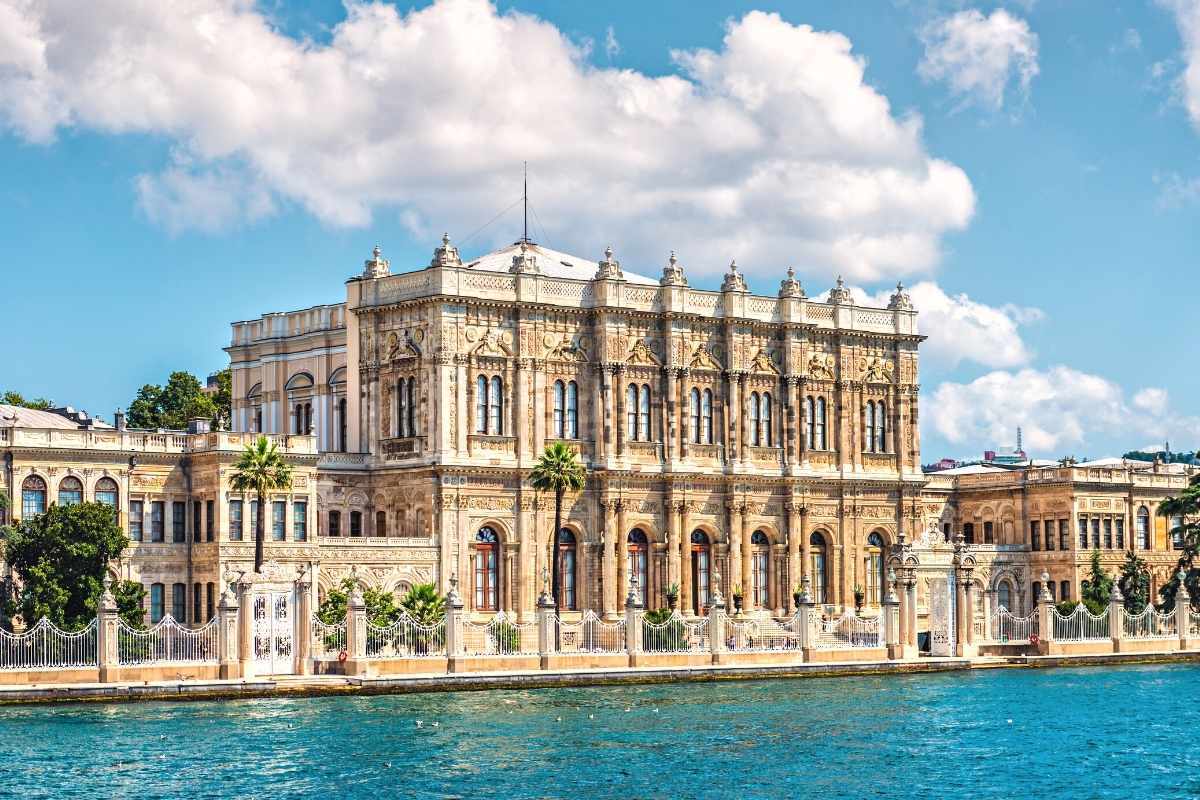
The Dolmabahce Palace is the largest, most expensive, and most intricately designed palace in Istanbul. Located on the European side of Istanbul in the Besiktas district, it was the main administrative center for the Ottoman Empire since the 19th century. Today, it is regarded as one of the top landmarks in Istanbul to visit.
Consisting of 285 rooms and 46 halls, the entirety of this palace is now open for tourists to visit. It is said that one of the largest Bohemian crystal chandeliers is kept in the palace, as well as the largest diamond.
The palace was fabricated using Baroque style architecture, with hints of Rococo, Neoclassical and traditional Ottoman styles.
It was designed by architect Garabet Balyan and is said to have cost the city five million Ottoman gold lira ($1.9 billion in 2021 value). This placed a huge financial burden on the city which lost a quarter of the yearly tax revenue because of it.
It was the family home of 6 sultans over the years. The last Sultan to live in the palace was Caliph Abdülmecid Efendi.
- Hours: 9am – 4pm, Tuesday – Sunday (closed Mondays)
- Address: Vişnezade, Dolmabahçe Cd, 34357 Beşiktaş, İstanbul, Turkey
Beylerbeyi Palace
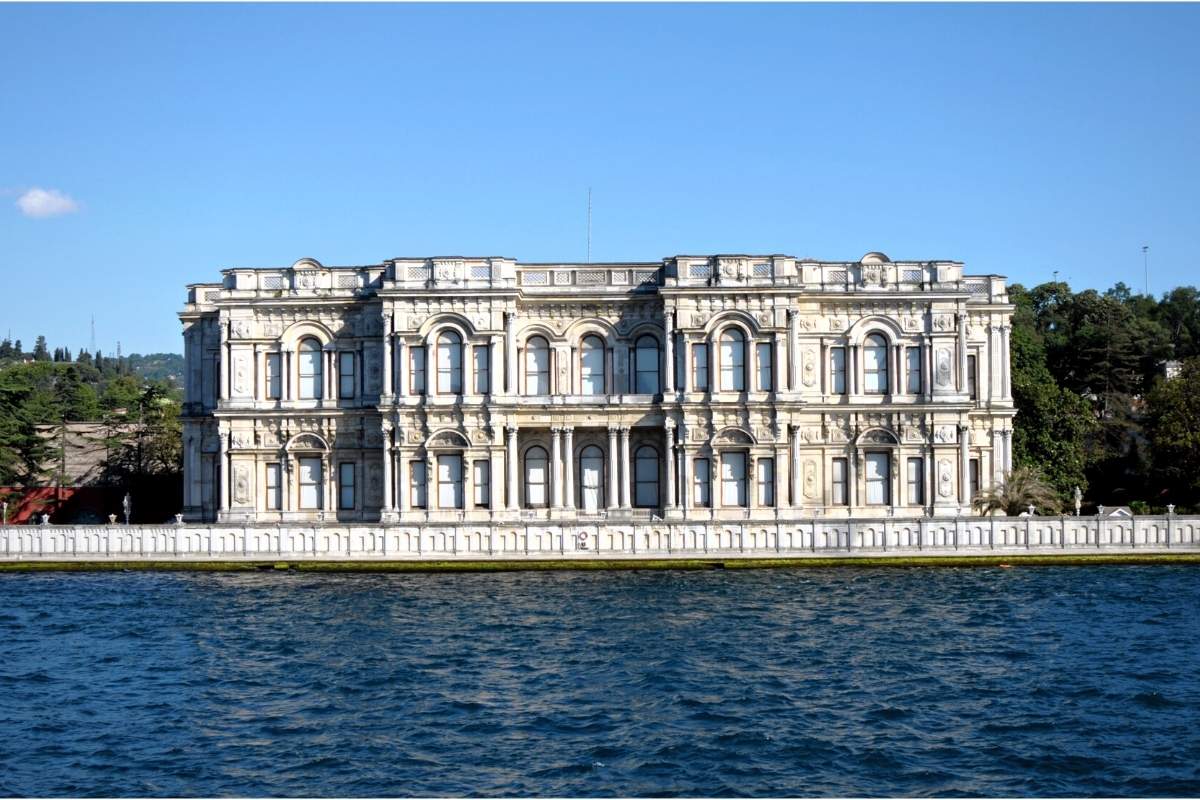
The Beylerbeyi Palace was the final palace to take residence from the royals since it was where Sultan Abdulmecid II was placed under house arrest.
Located on the Bosphorus strait on the Asian side of Istanbul is the ornately decorated Beylerbeyi Palace.
It was commissioned by Sultan Abdülaziz in the middle of the 19th century as the Sultan’s summer residence, after the original palace, built by Sultan Mahmud, burned down.
It was a place where the sultan could entertain his foreign visitors, such as the Austrian Emperor Franz Joseph, Prince Nikola of Montenegro, the German Emperor Wilhelm II, and Empress Eugénie of France.
It was said that Eugénie loved the palace so much that she had a window recreated for her bedroom in Tuileries Palace that was inspired by the palace.
The palace is an architectural piece of beauty that spans over 70 acres. With its manicured gardens and ornamental decor throughout the interior, including the array of oil paintings and expensive crystal chandeliers, anyone visiting the Beylerbeyi Palace will leave with awe.
- Hours: 9am – 5pm, Tuesday – Sunday (closed Mondays)
- Address: Beylerbeyi, Beylerbeyi Kavşağı, 34676 Üsküdar, İstanbul, Turkey
Yildiz Palace
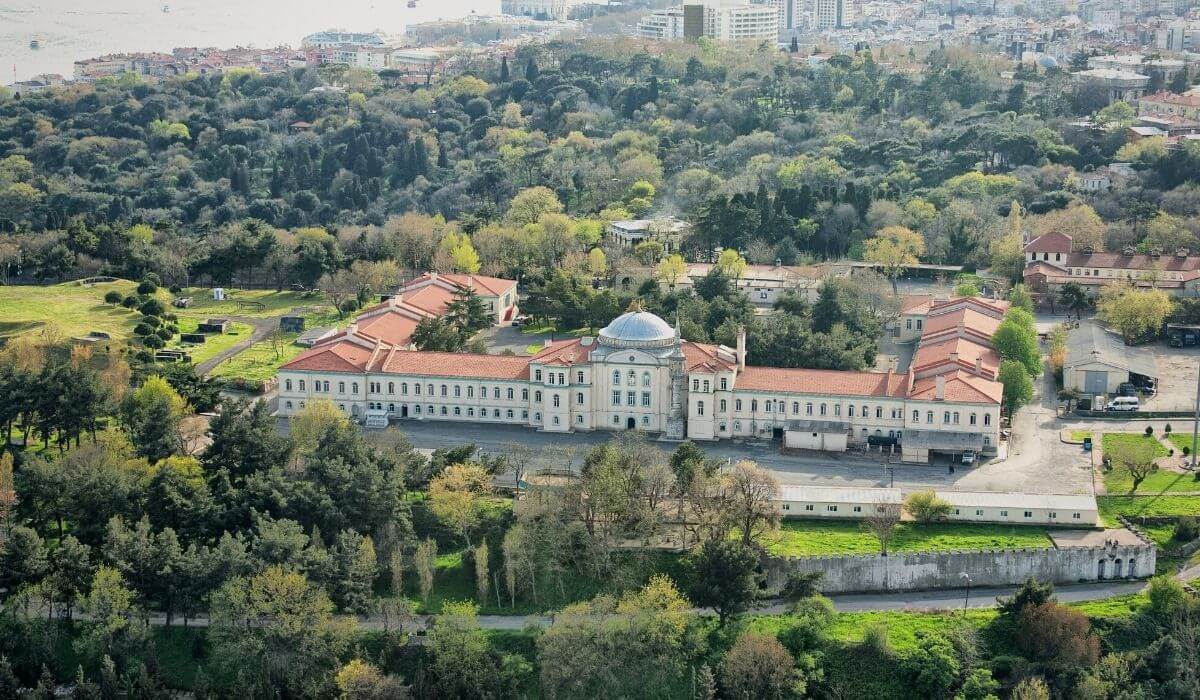
Yildiz Palace in Istanbul is the last palace to be built by the Ottoman sultans. It was built by Sultan Salim III for his mother after the Islamic conquest at the end of the 18th century.
The palace is located on top of a hill in Yildiz Park and it is said the construction took 12 years and was funded by financial loans.
The palace is made up of several different pavilions and villas, including a porcelain factory and opera house.
The main building was sadly destroyed in 1910 in a fire and only the exterior walls remain of the original building. After the fire, it was reconstructed and the addition of a luxury hotel was added to the site.
The main building was often used as a casino, guest house, and museum before it was transformed into the main residence for the Turkish president.
- Address: Yıldız, Yıldız Sarayı Müzesi, 34349 Beşiktaş, İstanbul, Turkey
Çırağan Palace

The Ciragan Palace was constructed in the 19th century under the rule of Sultan Abdulaziz. It was originally built as an Ottoman Palace but is now a five-star hotel. Facing the shores of the Bosphorous Straight between Beşiktaş and Ortaköy on the European side, it has stunning views of the water and beyond.
Though the palace was built for Sultan Abdulaziz, the 32nd Sultan of the Ottoman Empire, it was constructed by his sons Sarkis and Hagop Balyan and was designed by Armenian architect Nigoğayos Balyan.
The construction took four years (1863-1867) and was the last of the palaces in Istanbul to be built for a sultan, rather than using originally built palaces.
It was built using marble, where a marble bridge connects it to the beautiful Yildiz palace on the hill behind. The interior of the palace took another five years to complete, having been completed in 1872.
Sadly, Sultan Abdulaziz did not live in the palace for long, as he was found dead in 1876 after he was dethroned.
His nephew, Sultan Murad V, took over as Sultan and moved into the Çırağan Palace. He only ruled for 93 days before he was replaced by his brother Abdul Hamid II because of an alleged mental illness.
Murad V lived in the palace under house arrest until his death on 29 August 1904.
Since then, the palace was used for meetings by parliament, but it was sadly destroyed in a fire in 1910. Only the outer walls remained intact.
The gardens were then used as a football field for the club Besiktas J.K, until 1987, when a Japanese company bought the palace and restored it, and added a modern and luxurious hotel to its complex. The hotel opened in 1990 and the restored palace building opened in 1992.
In 2007, the palace was renovated again to resemble the authentic baroque era style it would have had centuries ago.
- Hours: Museum is open daily, 9am – 4pm in Winter, 9am – 6pm in Summer
- Address: Yıldız, Çırağan Cd. No:32, 34349 Beşiktaş, İstanbul, Turkey
Pavilions in Istanbul
Pavilions are like mini palaces, or kiosks, that was built in the 19th century and used by the Sultans as a rest house for when they went hunting or to battle.
Today these stunning palaces have been renovated and turned into open public spaces, such as museums , restaurants, hotels, and parks.
Let’s take a look at the most famous ones…
Ihlamur Pavilion
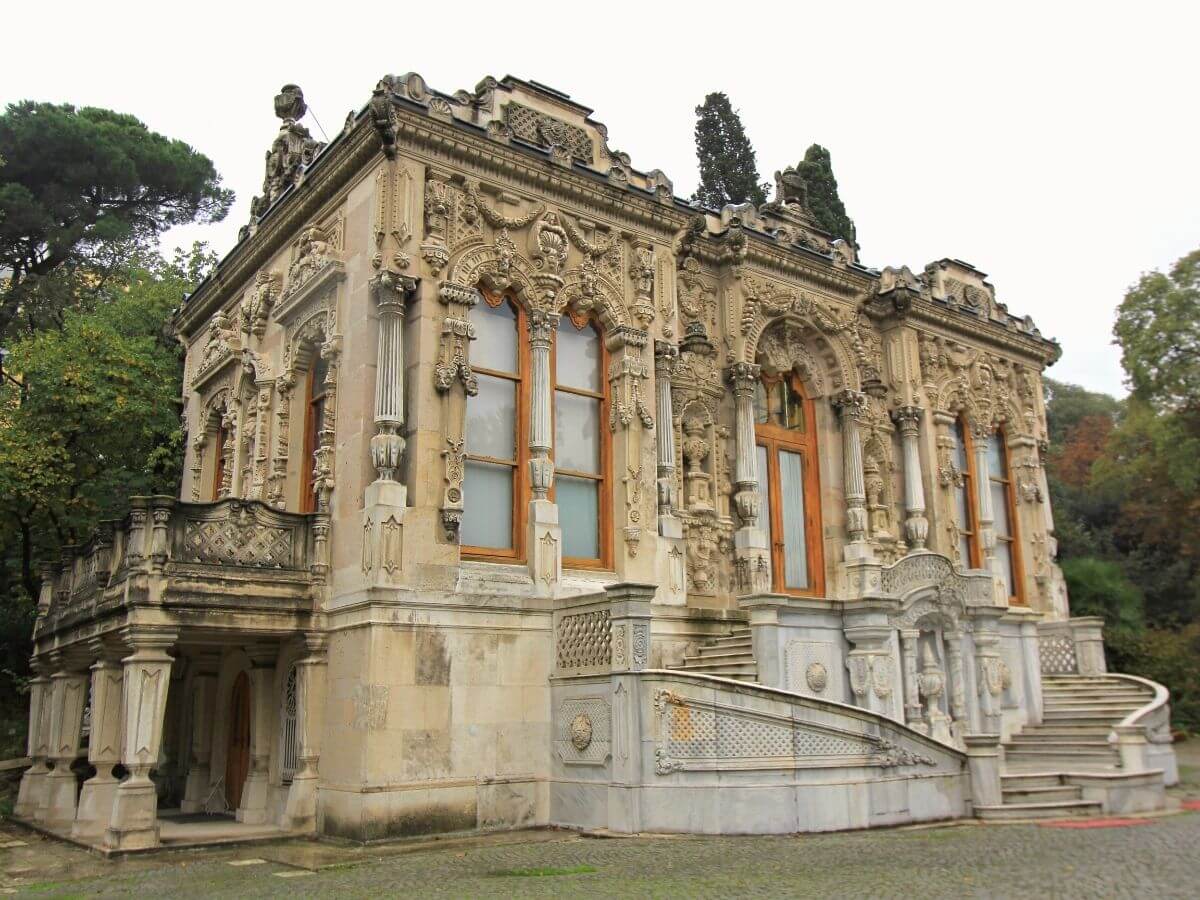
The Ihlamur Pavilion is a former Ottoman summer residence that was constructed during the reign of Sultan Abdülmecid I in 1839-1860. It was used for daily recreation by the Ottoman sultans and also as an office. The Ihlamur Pavilions consist of two main structures.
The first structure is the Ceremony Pavilion, where the Sultan hosts ceremonies, and the other, Retinue Pavilion, for his entourage and harem.
The construction boasts architectural features from the Neo-Baroque movement. The recreational area around the pavilion is known as Hacı Hüseyin Farms, which was later transformed into a royal garden with a wooden mansion to serve as the Sultan’s rest house.
In 1791, Sultan Selim III added several pools and buildings to the garden, which became an area of shooting and training for the sultans. Today, you can still see surviving target stones bearing the date and scores of the shots made by Sultans Selim III and Mahmud II.
- Hours: 9am – 5pm, Tuesday – Sunday (Closed on Mondays)
- Address: Teşvikiye, 34365 Şişli, İstanbul, Turkey
Küçüksu Pavilion
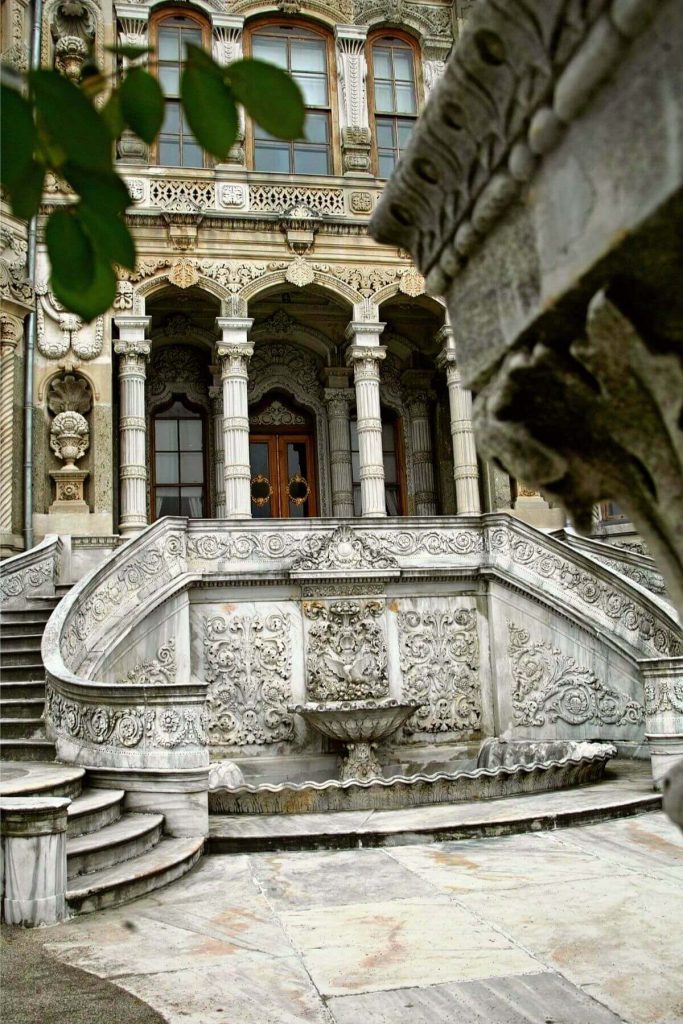
Located on the Asian side of Istanbul between Anadoluhisarı and the Fatih Sultan Mehmet Bridge, is the Kucuksu Pavilion.
It was commissioned by Sultan Abd-ul-Mejid I in 1823 and completed in 1857. The pavilion was built to be a summer house for the Ottoman sultans for short hunting getaways. It was designed by Garabet Amira Balyan and his son Nigoğayos Balyan using traditional neo-baroque architecture.
Kucuksu is also named Littlewater Pavilion or Göksu (Skywater) Pavilion, because of its location on the Bosphorus. The palace has two main stories and a basement, and unlike other pavilions, it has a garden surrounded by cast-iron railings.
The basement was where the kitchen, larder, and servant’s quarters were kept and the upper floors were decorated with traditional Turkish homely touches.
It was decorated with colorful Italian marble, crystal chandeliers from Bohemia, and woven upholstery from Hereke.
When Sultan Abd-ul-Aziz reigned, he added detailed decoration to the façade and some of the garden’s outbuildings were demolished.
In the early Republican period, the pavilion was used as a guesthouse for state officials. Today, the palace is open to the public as a museum.
It was also featured in the James Bond movie, “The World Is Not Enough” as the mansion of Elektra King.
- Address: Göksu, Küçüksu Cd., 34810 Beykoz, İstanbul, Turkey
Aynalıkavak Pavilion
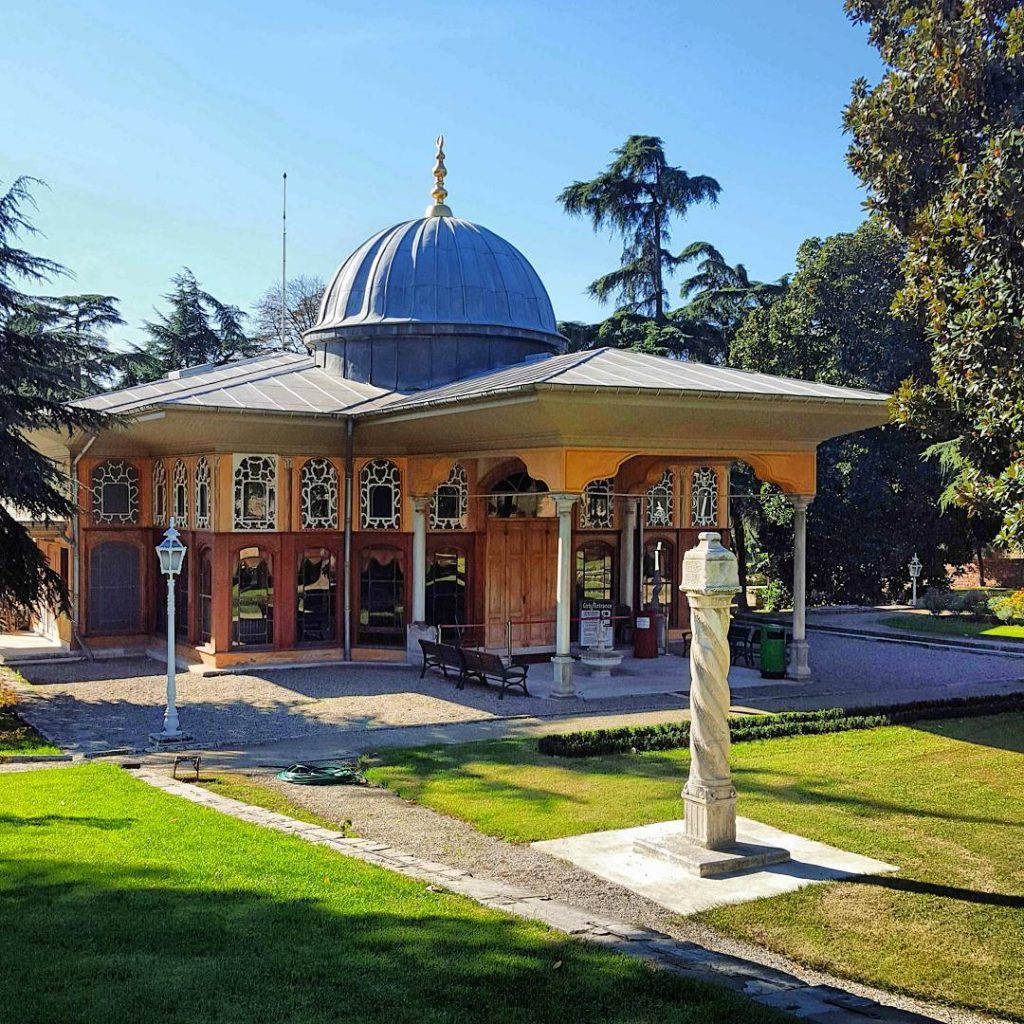
The Aynalikavak Pavilion is one of the most historical pavilions in Istanbul as it was the birthplace of the Ottoman sultan Ibrahim III.
He was one of the Ottoman sultan’s most hysterical figures as he was often called ‘Ibrahim the Mad’ because of his mental state and ‘insane’ behavior. However, historians believe he was more incompetent than mad.
The pavilion was once the fourth largest palace, known as Tersane Palace, in Istanbul. It is located in the Hasköy neighborhood on the European side of Istanbul.
It was constructed by Sultan Ahmed I and has undergone several renovations over time, but now only the Aynalikavak pavilion remains of the original structure.
The architecture of the pavilion dates back to the 18th century. It has only five rooms and an anteroom, plus an audience hall.
Some highlights of the pavilion are the gold gilded monogram of Sultan Selim III on the ceiling of the Divanhane section, plus engraved poems on the windows from famous poets of the Ottoman era. It is said that the grounds are the resting site of emperors during the Byzantine era.
The pavilion showcases some of the best-preserved Ottoman architecture of the present day.
- Address: Keçeci Piri, Donanma Cd., 34440 Beyoğlu, İstanbul, Turkey
Beykoz Mecidiye Kasrı Pavilion
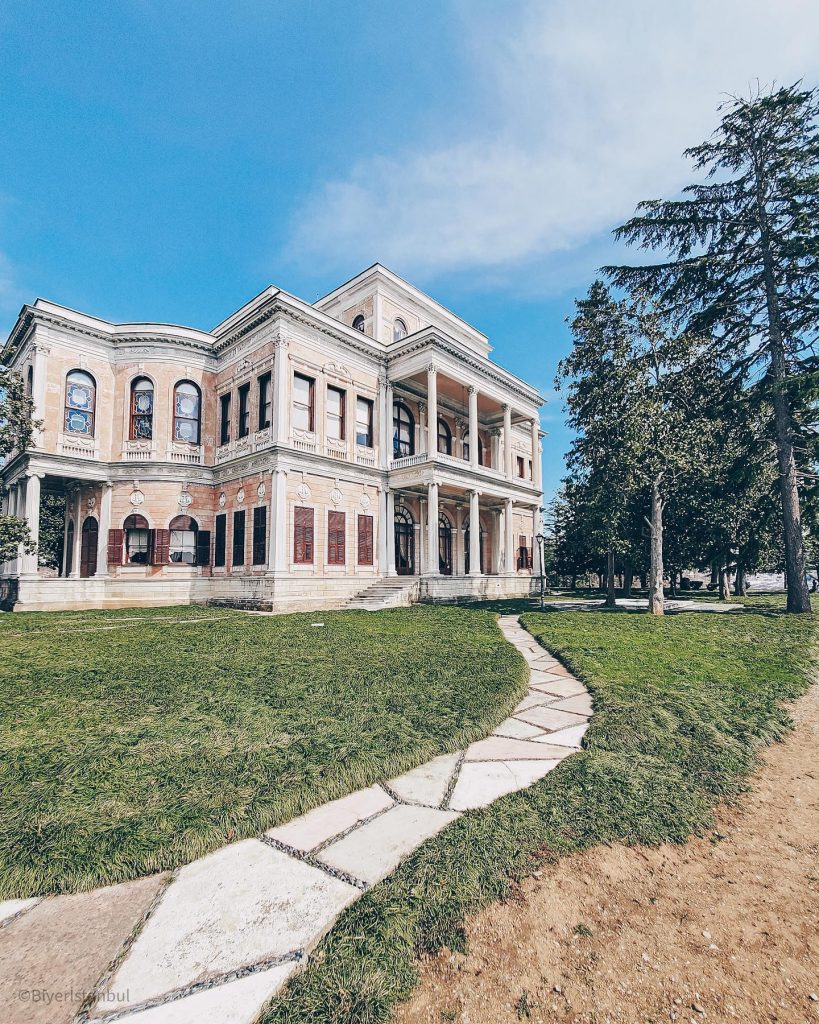
The Beykoz Medidye Kasei Pavilion, or Beykoz Palace, is one of the oldest pavilions in Istanbul and was built by an Egyptian Governor, Mehmed Ali Pasha, in 1854.
It was built as a gift to Sultan Abdülmecid, but it was said that he did not show appreciation for it. Instead, his son, Sultan Abdulaziz, frequently visited it.
During the first year of its construction, Mecidiye Pavilion was used as a boarding pavilion, before it turned into daily accommodation and official receptions and events, such as wrestling games and hunting activities.
The Mecidiye Pavilion is located on approximately seventy thousand square meters of land, surrounded by a grove of magnolia, pine, and linden trees.
As one of the first masonry buildings on the Bosphorus, the mansion is the perfect example of grandeur and elegance in Istanbul.
- Address: Yalıköy, Beykoz Kasrı, 34820 Beykoz/İstanbul, Turkey
Palaces in Istanbul FAQs
Which is the biggest palace in istanbul.
The Dolmabahçe Palace is the biggest palace in Istanbul.
How many palaces are there in Istanbul?
Technically there are five palaces, but there are pavilions (mini palaces) that were used as summer residences and guest houses for the Sultans. There are five palaces and four pavilions.
Can you go inside the palaces?
Yes, you can go inside all of them. Only some rooms may be off-limits to visitors, but the best rooms are open to tourists.
Final Word on Palaces in Istanbul
So there you have it, nine of the top palaces and pavilions in Istanbul!
From the iconic Dolmabahçe Palace, the largest palace in Turkey, to the tiny and quaint Kucuksu Pavilion, you can see there is a huge array of palaces in Istanbul.
No matter when you visit Istanbul, you had better make sure you add a few of these to your itinerary.
Do you have a favorite palace or pavilion on our list? Let us know in the comments!
Co-Founder of The Turkey Traveler
Sean Lau is a professional travel blogger and writer with adoration for Turkey. Originally from the USA, Sean frequently travels to Turkey to explore every nook and cranny. From bustling bazaars of Istanbul to the tranquil beaches of Antalya, Sean has seen it all. He hopes to share his first-hand knowledge, insider insights, and personal anecdotes to inspire fellow travelers to visit Turkey, especially to his favorite destinations – Istanbul and Cappadocia.
Leave a Comment Cancel reply
Save my name, email, and website in this browser for the next time I comment.
AFFILIATE DISCLOSURE
This website uses affiliate links, meaning I may earn a commission if you make a purchase through a link at no extra cost to you. TheTurkeyTraveler is a participant in the Amazon Services LLC Associates Program. As an Amazon Associate, I earn from qualifying purchases. For more information, see our full affiliate disclosure .
© 2024 The Turkey Traveler

22 Top-Rated Tourist Attractions in Istanbul
Written by Jess Lee Updated Dec 26, 2023 We may earn a commission from affiliate links ( )
Author Jess Lee has been a regular Istanbul visitor for twenty years and used to run tours in the city. She lives in Turkey.
Coveted by empires across the centuries, straddling both Europe and Asia, Istanbul is one of the world's great metropolises.
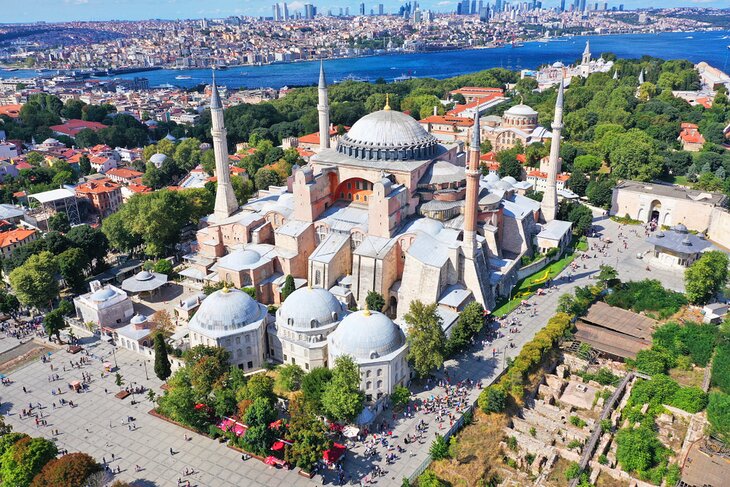
Founded around 1000 BCE, the colony of Byzantium grew into the Byzantine Empire's great capital of Constantinople and after the Ottoman conquest of the city, retained its glorious place as the heart of their empire.
The city (officially renamed Istanbul after the founding of the Turkish Republic) is liberally scattered with glorious remnants of its long and illustrious history, and the tourist attractions here will impress even the most monument-weary visitor.
As well as the big four (the Hagia Sophia Mosque, Topkapı Palace, the Blue Mosque, and Grand Bazaar), leave enough time to explore the other sights.
Although many of the most popular and best places to visit are located in, or near, the old city district of Sultanahmet, there is a dazzling array of other things to do throughout the farther reaches of the city.
Plan your trip with our list of the top attractions and things to do in Istanbul.
See also: Where to Stay in Istanbul
1. Admire the Hagia Sophia (Aya Sofya) Mosque
2. explore topkapı palace (topkapı sarayı), 3. visit the blue mosque (sultan ahmet cami), 4. head underground at the basilica cistern (yerebatan sarnıçı), 5. stroll the hippodrome, 6. check out the collection in istanbul archaeology museum, 7. shop in the grand bazaar (kapalı çarşı), 8. admire the architecture of the süleymaniye mosque, 9. sample turkish produce in the spice bazaar (mısır çarşısı), 10. soak up the splendor of dolmabahçe palace, 11. see the frescoes of the chora church (kariye cami), 12. visit the museum of turkish and islamic arts (türk ve islam eserleri müzesi), 13. view the little aya sofya (küçük aya sofya), 14. admire the tilework of the rüstem paşa mosque, 15. walk the ramparts of yedikule fortress (yedikule hisarı), 16. climb up galata tower, 17. cruise the bosphorus strait, 18. take in the art at istanbul modern, 19. visit the historic fatih mosque, 20. view the pera museum's ottoman-era art, 21. stroll istiklal caddesi and taksim, 22. explore the district of üsküdar, where to stay in istanbul for sightseeing, tips and tours: how to make the most of your visit to istanbul, map of tourist attractions & things to do in istanbul, istanbul, turkey - climate chart.
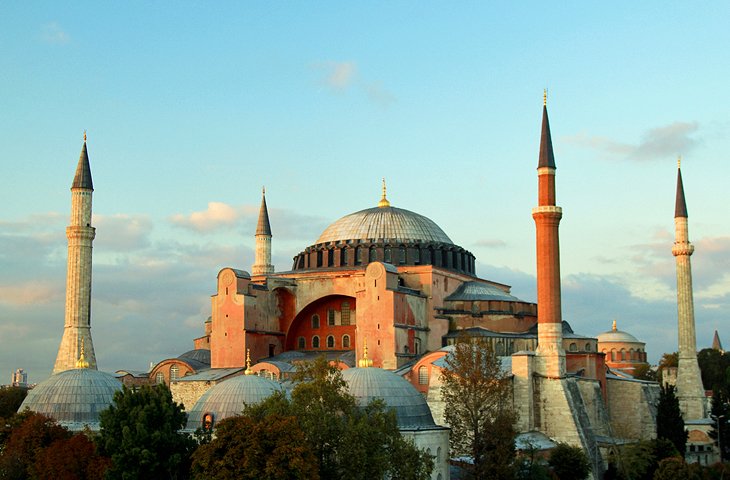
Highlights: Ancient architecture, deep religious significance, and glittering mosaics
It's said that when the Byzantine Emperor Justinian entered his finished church for the first time in CE 536, he cried out " Glory to God that I have been judged worthy of such a work. Oh Solomon, I have outdone you! "
The Hagia Sophia (Aya Sofya in Turkish) was the emperor's swaggering statement to the world of the wealth and technical ability of his empire.
Tradition maintained that the area surrounding the emperor's throne within the church was the official center of the world.
Through its conversion to a mosque, after the Ottoman armies conquered Constantinople, to its further conversion into a museum in the 20th century and its reconversion back into a working mosque in 2020, the Hagia Sophia has remained one of Istanbul's most cherished landmarks.
Address: Aya Sofya Meydanı, Sultanahmet
- Read More: Exploring Aya Sofya (Hagia Sophia): A Visitor's Guide
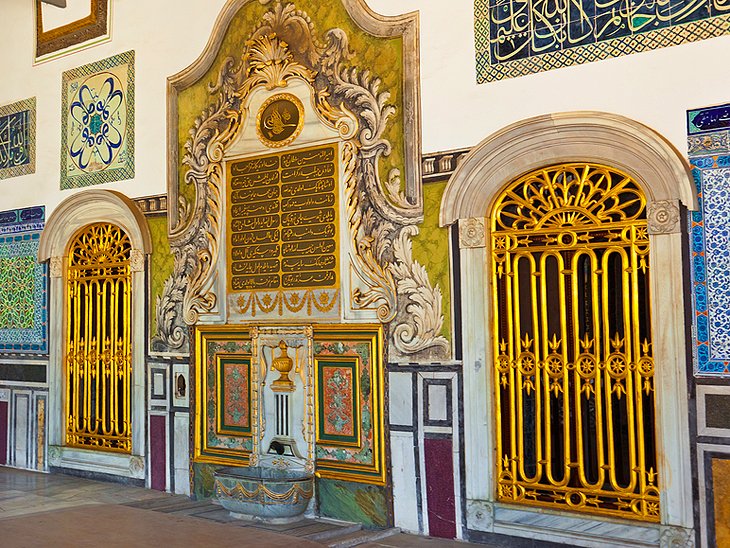
Highlights: Ottoman-era finery, sumptuous tilework, and the Harem complex
First built by Mehmet the Conqueror in the 15th century, glorious Topkapı Palace , beside the Bosphorus, was where the sultans of the Ottoman Empire lived and ruled from.
The vast complex is a dazzling display of Islamic art, with opulent courtyards lined with intricate hand-painted tilework, linking a warren of sumptuously decorated rooms, all bounded by battlemented walls and towers.
Of the many highlights here, the most popular are the Harem complex (where the sultan's many concubines and children would spend their days); the Second Court , where you can walk through the vast palace kitchens and stand in awe at the dazzling interior of the Imperial Council Chamber; and the Third Court, which contained the sultan's private rooms.
The Third Court also displays an impressive collection of relics of the Prophet Muhammad in the Sacred Safekeeping Room and is home to the Imperial Treasury, where you're greeted with a cache of glittering gold objects and precious gems that will make your eyes water.
To fully see Topkapı Palace, you'll need at least half a day.
Address: Babihümayun Caddesi, Gülhane Park
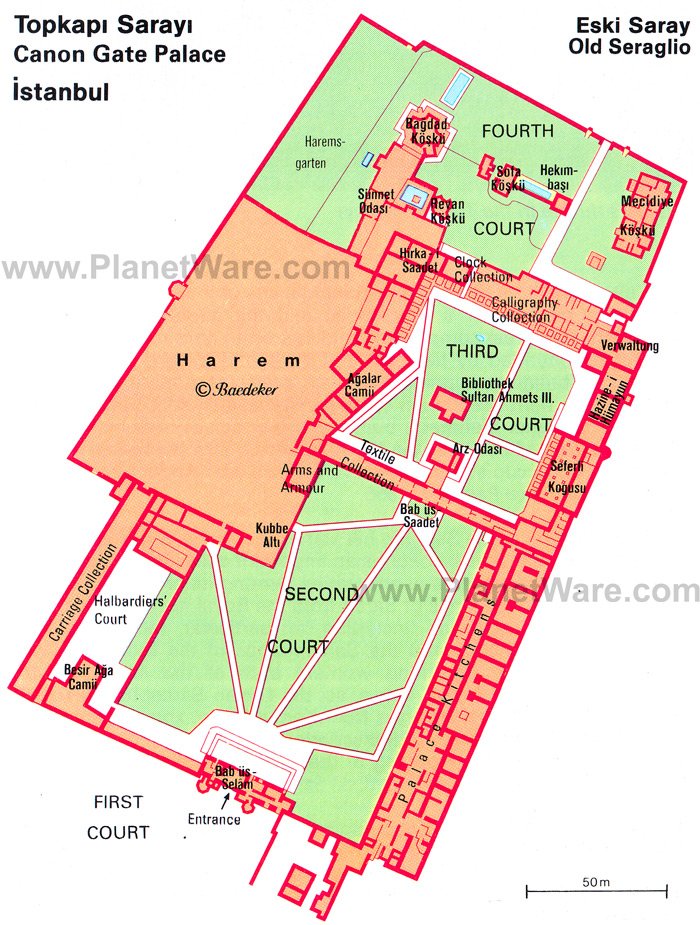
Highlight: Home to Istanbul's famed domed interior of Ottoman tilework
Sultan Ahmet I's grand architectural gift to his capital was this beautiful mosque, commonly known as the Blue Mosque today.
Built between 1609 and 1616, the mosque caused a furore throughout the Muslim world when it was finished, as it had six minarets (the same number as the Great Mosque of Mecca). A seventh minaret was eventually gifted to Mecca to stem the dissent.
The mosque gets its nickname from its interior decoration of tens of thousands of Iznik tiles.
The entire spatial and color effect of the interior makes the mosque one of the finest achievements of Ottoman architecture.
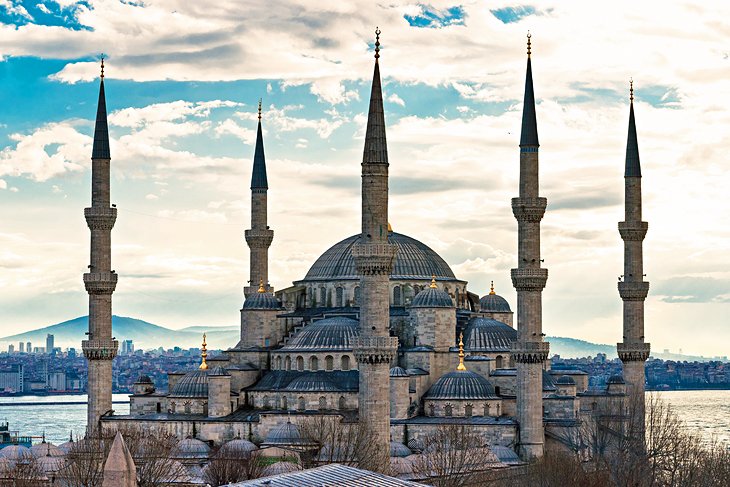
A great sightseeing joy of a trip to Istanbul is wandering amid the gardens sandwiched between the Blue Mosque and the Hagia Sophia to experience their dueling domes in twin glory.
Come at dusk for extra ambience, as the call to prayer echoes out.
Directly behind the Blue Mosque is the Arasta Bazaar; a great place for a shopping stop as the handicraft shops here sell high-quality souvenirs.
Even if you're not interested in a browse, head here to see the Great Palace Mosaic Museum , which is tucked between the Arasta Bazaar and the mosque.
This small museum displays the 250-square-meter fragment of mosaic pavement that was unearthed in the 1950s here. Excellent information panels explain the mosaic floor's recovery and subsequent rescue.

Highlight: Walking amid this atmospheric, majestic, and columned Byzantine-era space
The Basilica Cistern is one of Istanbul's most surprising tourist attractions.
This huge, palace-like underground hall, supported by 336 columns in 12 rows, once stored the imperial water supply for the Byzantine emperors.
The project was begun by Constantine the Great but finished by Emperor Justinian in the 6th century.
Many of the columns used in construction were recycled from earlier classical structures and feature decorative carvings.
The most famous of these are the column bases known as the Medusa stones in the northwest corner with their Medusa head carvings.
A visit here is very atmospheric with the columns beautifully lit and the soft, steady trickle of water all around you.
Address: Yerebatan Caddesi, Sultanahmet
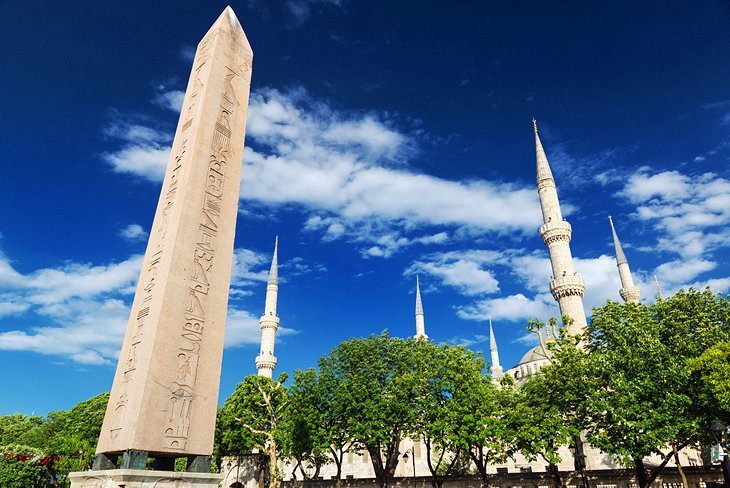
Highlights: Central park area holding relics from ancient Egypt and Greece.
The ancient Hippodrome was begun by Septimius Severus in CE 203 and completed by Constantine the Great in CE 330.
This was the center of Byzantine public life and the scene of splendid games and chariot races but also factional conflicts.
Today, there isn't much of the Hippodrome left to see, except for a small section of the gallery walls on the southern side, but the At Meydanı (park), which now stands on the site is home to a variety of monuments.
On the northwest side is a fountain, presented to the Ottoman sultan by the German Emperor William II in 1898.
Then, heading southwest are three ancient monuments: a 20-meter high Egyptian obelisk (from Heliopolis); the Serpent Column brought here from Delphi by Constantine; and a stone obelisk that originally was clad in gold-covered bronze plating until they were stolen by the soldiers of the 4th Crusade in 1204.
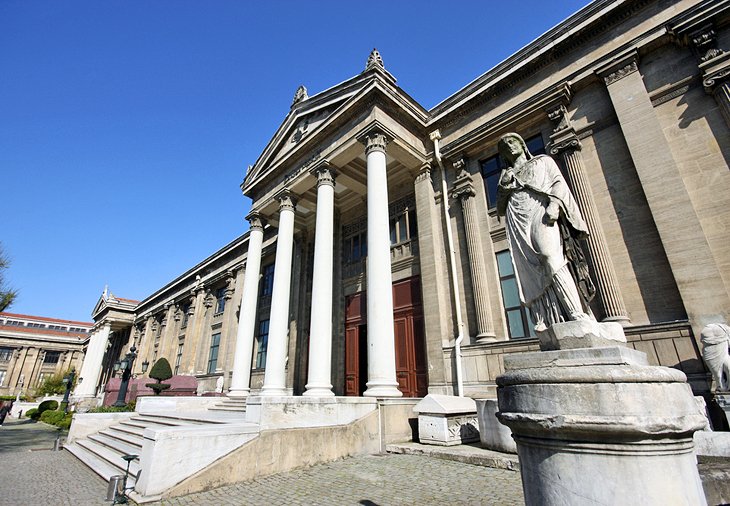
Highlights: Viewing the Sidon necropolis collection, Anatolian sarcophagi, and the Tiled Pavilion
Just a hop, skip, and jump away from Topkapı Palace, and easily visited afterwards, Istanbul Archaeology Museum brings together an array of artifacts from both Turkey and throughout the Middle East, which sweeps through the vast breadth of history of this region.
There are three separate sections in the museum complex, each of which are worthy of a visit.
The Museum of the Ancient Orient displays a collection focused on the Middle East's pre-Islamic art and heritage.
The main Archaeology Museum houses statuary and tombs, including the famed sarcophaguses from Sidon, Lebanon that were unearthed by Ottoman architect Osman Hamdi Bey. Also here, you'll find the Istanbul through the Ages exhibit room, which helps you visualize the city's vast and epic history.
The museum's third building is the Tiled Pavilion, built by Mehmet the Conqueror, which houses a wide range of ceramic art.
Address: Osman Hamdi Bey Yokusu Sokak, Gülhane Park
- Read More: Exploring Istanbul's Archaeological Museum: A Visitor's Guide
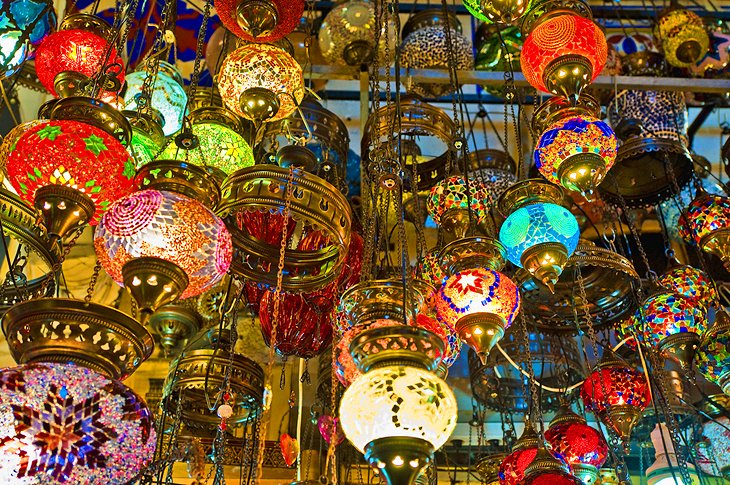
Highlight: One of the world's great shopping experiences
For many visitors, sightseeing in Istanbul is as much about shopping as museums and monumental attractions, and the Grand Bazaar is where everyone comes.
This massive covered market is basically the world's first shopping mall, taking up a whole city quarter, surrounded by thick walls, between the Nuruosmanıye Mosque and Beyazıt Mosque.
The Beyazıt Mosque (built in 1498-1505) itself occupies the site of Theodosius I's Forum and has architecture inspired by the Hagia Sophia.
Entrance to the bazaar is through one of 11 gates from where a maze of vaulted-ceiling laneways, lined by shops and stalls selling every Turkish souvenir and handicraft you could imagine, cover the area.
The various trades are still mostly segregated into particular sections, which makes browsing easier.
Near the bazaar's Divanyolu Caddesi entrance is the Burned Column. This stump (still 40 meters high) of a porphyry column was set up by Constantine the Great in his forum. Until 1105, it bore a bronze statue of Constantine.
Address: Divanyolu Caddesi
Read More: Istanbul's Grand Bazaar: Things to Buy & Shopping Tips

Highlights: Ottoman mosque architecture at its finest and the tomb of Sultan Süleyman I
Sitting high on the hill above Sultanahmet district, the Süleymaniye Mosque is one of the most recognized landmarks of Istanbul.
It was built for Sultan Süleyman I (commonly known as Süleyman the Magnificent; reigned 1520-1566) by the famed Ottoman architect, Sinan, who is responsible for many of the feted Ottoman-era monuments in Turkey including the Selimiye Mosque in Edirne .
The Süleymaniye Mosque's interior, dominated by its soaring 53-meter-high dome is notable for its harmonious proportions and unity of design.
Outside in the tranquil garden area is an interesting Ottoman-era cemetery, which is also home to the türbes (tombs) of the Sultan Süleyman and his wife Haseki Hürrem Sultan (often commonly known outside of Turkey as Roxelana).
Address: Professor Sıdık Sami Onar Caddesi
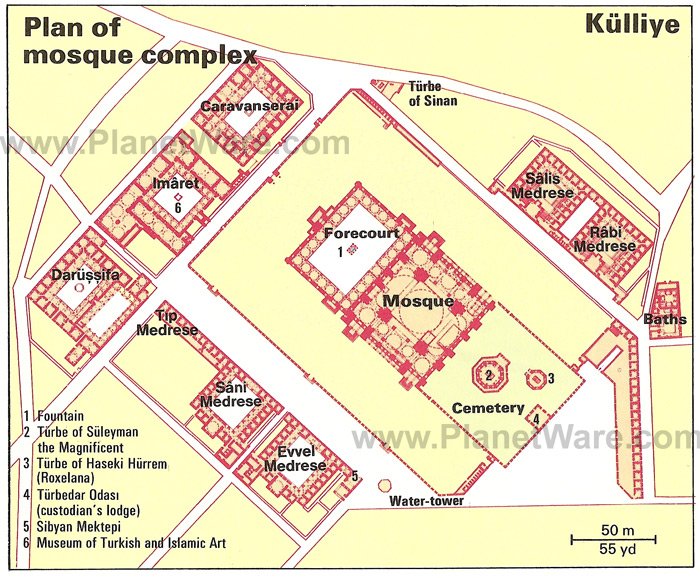
Highlights: One-stop-shop for Turkish flavors and sampling the country's famed sweet treats
The Spice Bazaar is the place to get your foodie fix of lokum (Turkish delight), dried fruit, nuts, herbs, and, of course, spices.
Much of the money that helped construct it came from the taxes the Ottoman government levied on Egyptian-made products, which is why its name in Turkish (Mısır Çarşısı) means "Egyptian Market."
The Spice Bazaar is one of Istanbul's most popular tourist attractions and at certain times of the day gets ridiculously crowded with huge tour groups from the docked cruise ships.
Try to come before 11am or after 4pm to dodge the crowds.
Just next door to the Spice Bazaar's main entrance is the stately Yeni Cami (New Mosque), which was begun in 1615 and finished in 1663 – that's "new" for Istanbul.
It is worthwhile taking a peek inside while you're sightseeing in the area, as the interior is richly decorated with tilework and liberal use of gold leaf.
Address: Yenicami Meydanı, Eminönü
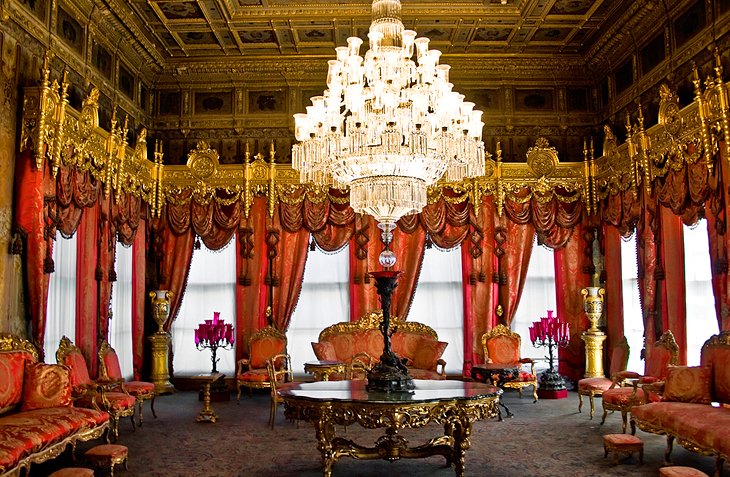
Highlights: Extravagant palace interiors and manicured formal gardens
The sumptuous and ornate Dolmabahçe Palace shows the clear influence of European decoration and architecture on the Ottoman Empire in the 19th century.
Built by Sultan Abdülmecid I in 1854, it replaced Topkapı Palace as the main residence of the sultans.
Dolmabahçe Palace was also used as an official residence during the founding years of the Turkish Republic, and Atatürk (the founder of modern Turkey) died here in 1938.
The formal gardens are punctuated with fountains, ornamental basins, and blooming flower beds.
Inside, the interiors blend Rococo, Baroque, Neoclassical, and Ottoman elements with mammoth crystal chandeliers, liberal use of gold, French-style furnishings, and frescoed ceilings to create a dazzling Turkish Renaissance style of sheer splendor and pomp.
Location: Dolmabahçe Caddesi, Besiktas
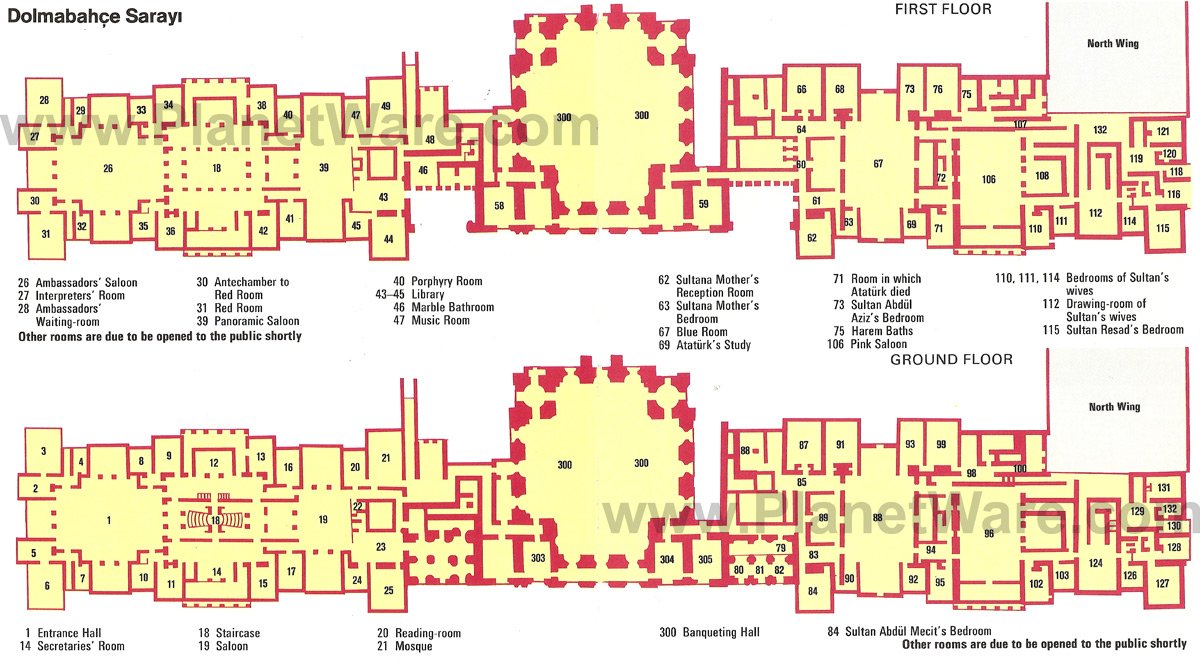
Highlight: Home to a famed collection of late-Byzantine-era frescoes and mosaics
Chora means "country" in Greek, and this beautiful Church (originally called the Church of St. Saviour of Chora) lay just outside old Constantinople's city walls.
The first Chora Church was probably built here in the 5th century, but what you see now is the building's 6th reconstruction as it was destroyed completely in the 9th century and went through several facelifts from the 11th to 14th centuries.
The church was turned into a mosque after the Ottoman conquest of Constantinople and became a museum in 1945. In 2020, it reconverted into a working mosque.
The monument is rightly world-famous for its fabulously vibrant 14th-century mosaics, preserved almost intact in the two narthexes and fragmentarily in the nave, and the frescos along the walls and domes.
These incredible examples of Byzantine artistry cover a wide range of themes, from the genealogy of Christ to the New Testament stories.
Location: Kariye Cami Sokak, Edirnekapı
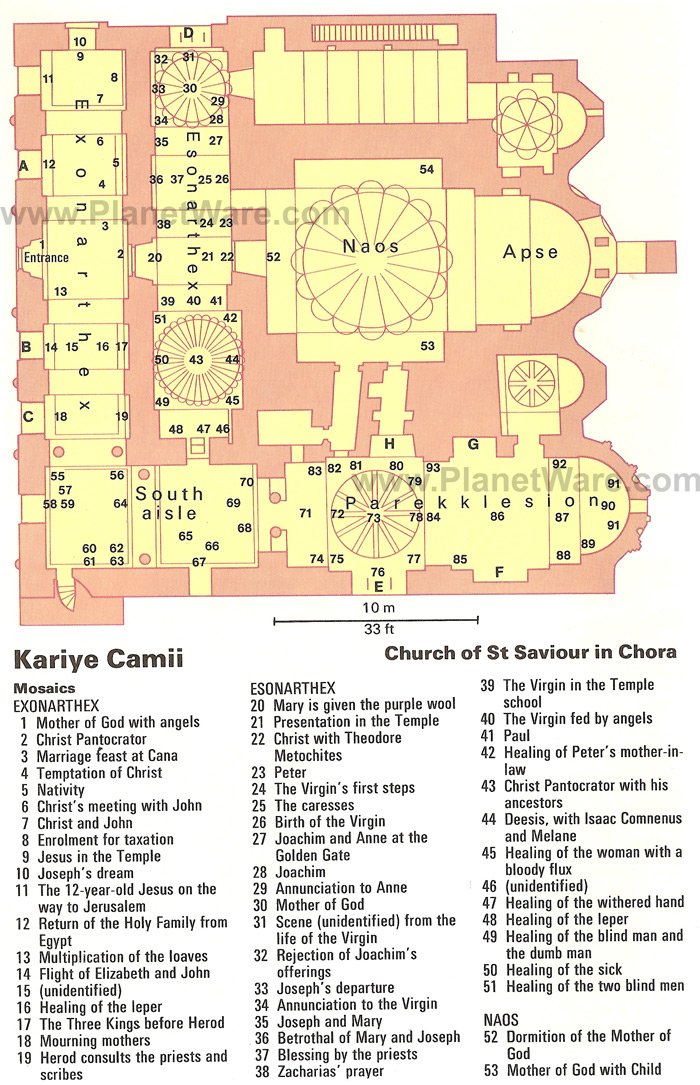
Highlights: World-famous carpet collection; showcase of the wood, ceramic, and stone artistry of the Islamic empires
Housed in the palace of Ibrahim Paşa, who was Grand Vizier for Sultan Süleyman the Magnificent, the Museum of Turkish and Islamic Arts is a must-see attraction for anyone interested in Ottoman and Islamic art.
The carpet collection on display here is vast and is heralded by textile experts as the world's best.
This is a prime place to come have a peek at the dazzling array of styles of Turkish carpets (along with carpets from the Caucasus and Iran) across the centuries before setting out on a shopping mission to purchase your own floor piece.
There are also exquisite ceramics, calligraphy, and wood carving exhibits ranging in date from the 9th century CE to the 19th century.
Address: At Meydanı Caddesi, Sultanahmet
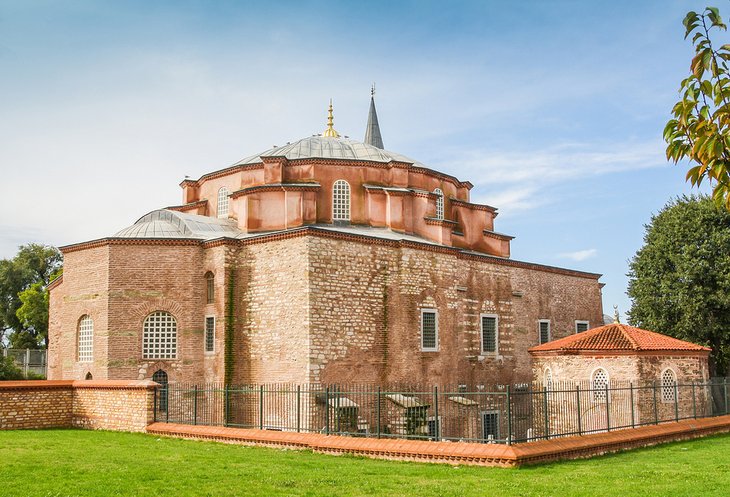
Highlight: Serene church-turned-mosque amid Istanbul's historic core
Before Emperor Justinian built the Hagia Sofia (Aya Sofya) , he had to test out if the building would work structurally, so he built this miniature version first.
Its original name was the Church of Sergius and Bacchus, but the obvious architectural parallels with the Aya Sofya led to its long-held nickname becoming the building's official title.
During the Ottoman era, the church was converted into a mosque and it still functions as a working mosque today.
Although its proportions aren't as grandiose as others in Istanbul, the building has been beautifully restored and is well worth a visit.
The walk here, down narrow alleyways lined with tall Ottoman-era buildings – some lavishly restored and others creaking their way into dilapidation – is a tranquil respite from central Sultanahmet.
Take the time to have a glass of tea in the Little Aya Sofya's peaceful garden to sustain you for further sightseeing exploits.
Address: Küçük Aya Sofya Caddesi , Sultanahmet
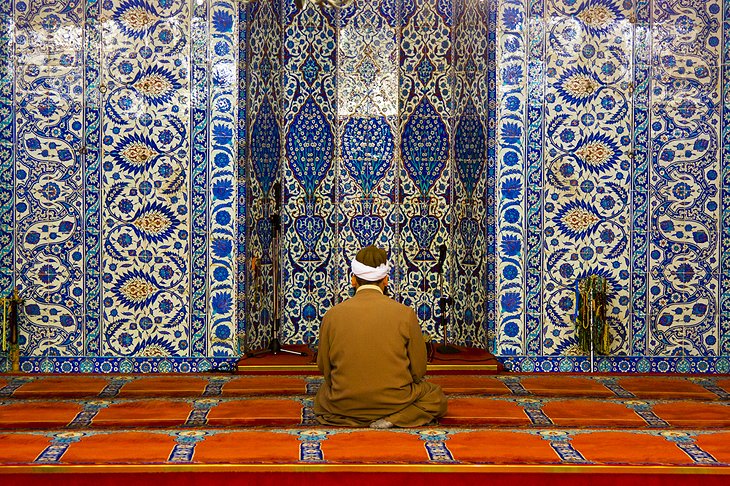
Highlight: An interior of glorious and immaculately preserved ceramic tilework displays
Possibly the most perfectly pretty mosque in Istanbul, the Rüstem Paşa Mosque is home to the most stunningly preserved Iznik tile panels in the city.
Sure the Blue Mosque (Sultanahmet Mosque) may get all the glory, but it's here – covering both the exterior courtyard walls and the mosque interior itself – that you'll find the best examples of these gorgeously intricate hand-painted tiles in blues, reds, and greens.
Even better, as it's less known, you're likely to be able to admire them up close without having to battle any crowds.
Finding the mosque adds to the fun as it's squirreled down a skinny lane lined with market stalls and always bustling with life, near the Spice Bazaar.
Address: Hasırcılar Caddesi, Eminönü
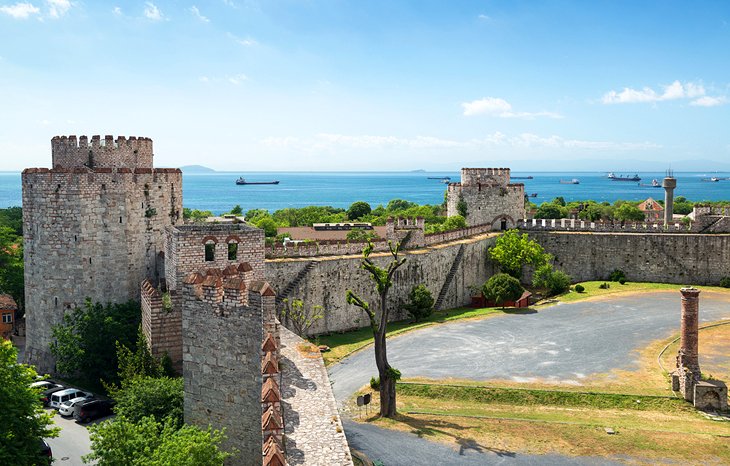
Highlight: Take in the sea views while strolling this preserved section of the city's Byzantine walls
Although it's a bit of a schlep on the suburban train to get out to Yedikule (Castle of the Seven Towers), this commanding fortress is well worth it.
Built in the 5th century by the Emperor Theodosius II, the fortress made up the southern section of Constantinople's defensive walls.
The mammoth arch (blocked up in the late Byzantine period) was known as Porta Aurea (Golden Gate), with doors plated in gold.
When the Ottomans conquered the city, they used the fortress for defense, and later as a prison and execution place.
Yedikule has been restored in recent years, and you can climb up to the top of the battlements for superb views across the Sea of Marmara.
Address: Yedikule Sokak, Yedikule
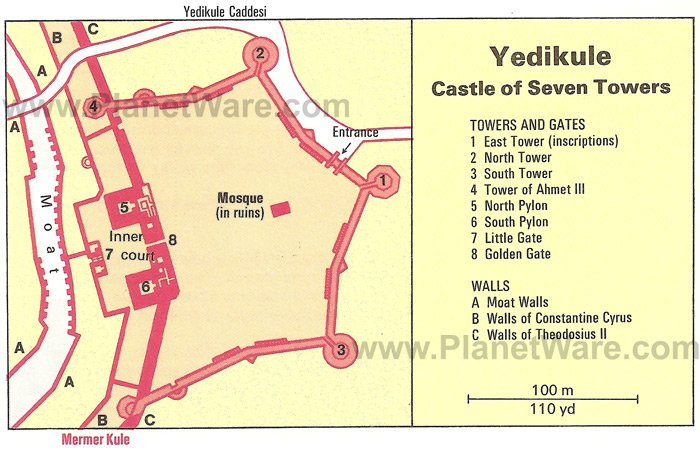
Highlights: Views of this landmark building from the surrounding narrow alleys, and vistas of the historic city center from the top
The Galata Tower , overlooking the Golden Horn, was built by the Genoese in the 14th century. Today it remains one of Istanbul's most recognizable landmarks.
Standing 52 meters tall, the tower was Istanbul's tallest building for centuries. The tower has been restored several times over the years due to being damaged by fire and storms.
Today the observation deck at the top story, and its restaurant, is one of the best places to visit in Istanbul for taking in the iconic skyline views of the central old city.
Be aware, though, that it's a super popular sight, so come early or be prepared to queue.
Address: Bereketzade, Beyoğlu
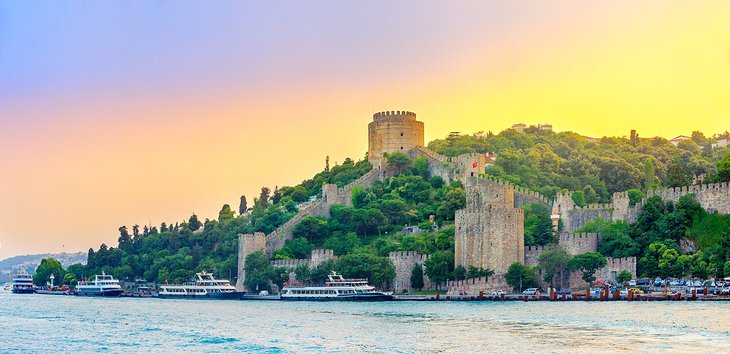
Highlights: Easygoing sightseeing and panoramic city views on one of the world's great straits
For many visitors, a trip to Istanbul isn't complete without hopping aboard a Bosphorus excursion ferry and cruising the city's famed waterway, which connects the Black Sea to the Sea of Marmara.
Istanbul's most iconic views are all from the water, and the Bosphorus excursion ferries are all about sitting back, relaxing, and taking in the scenery.
The most famous ferry tour is the Long Bosphorus Tour, which heads from Eminönü ferry dock daily, all the way up the strait to the village and fortress at Anadolu Kavağı, near the northern mouth of the strait into the Black Sea.
Along the ferry cruise there are shoreside vistas of defensive fortresses, Ottoman-era palaces and mansions, and the Bosphorus' bridges.
The Long Bosphorus Tour takes two hours one-way, stops in Anadolu Kavağı for three hours, and then returns, so you need to set aside a full day of your itinerary if you want to do it.
There is also a Short Bosphorus Tour option that operates daily two-hour afternoon sailings from spring to fall. This return ferry cruise heads up the Bosphorus as far as Rumeli fortress before turning around.
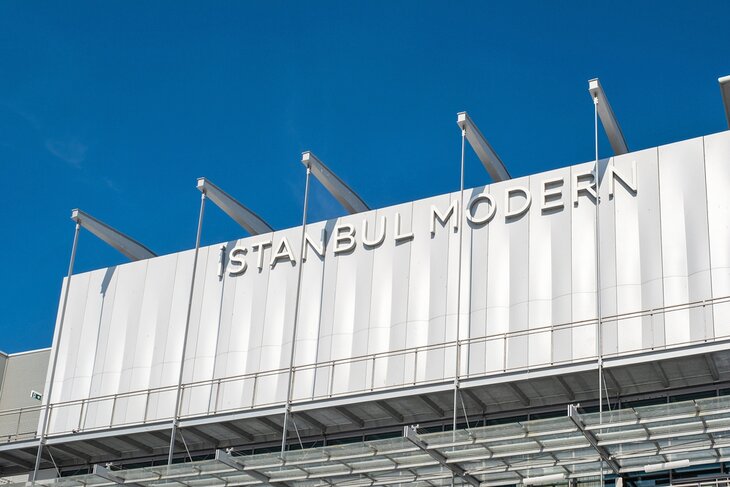
Highlights: Leading center for Turkish contemporary art plus trail-blazing temporary exhibitions
Proving that Istanbul isn't just about historic sightseeing, this thoroughly up-to-the-minute art gallery holds an extensive collection of Turkish modern art with an ever-changing calendar of exhibitions, hosting both local and international artists throughout the year.
This is by far the best place in town to get your finger on the pulse of Turkey's contemporary art scene.
As well as the galleries, the Istanbul Modern has a cinema that hosts a program of film viewings and a library.
The galleries are being temporarily hosted in a historic Beyoğlu building while they wait for the completion of this art museum's new permanent home in Karaköy.
Address: Mesrutiyet Caddesi, No:99, Beyoğlu
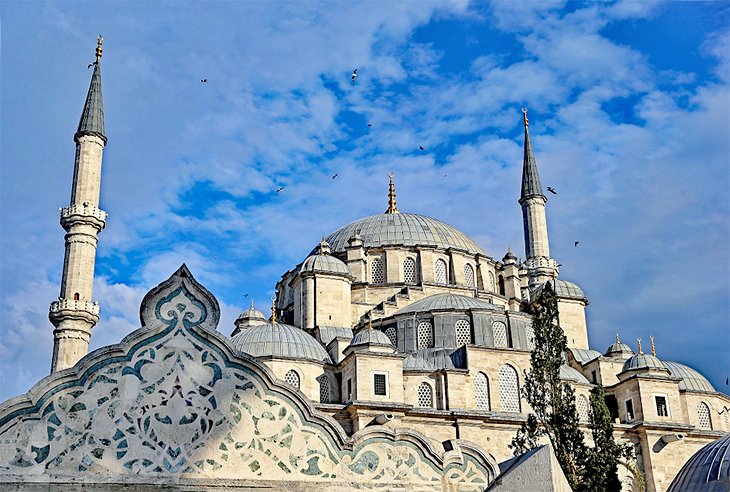
Highlights: Historic Ottoman-era mosque and site of Sultan Mehmet II's Tomb
The district of Fatih is home to this important mosque, which sits on the hilltop site of the first mosque built in the city by Sultan Mehmet the Conqueror, who finally broke through Constantinople's walls, ending the Byzantine era.
The original 15th-century mosque was badly damaged by an earthquake and so was replaced with this grand and imposing building, replete with multiple domes and minarets, in the 18th century.
Being the site of the first of Istanbul's grand imperial mosques to be built, as well as being home to Sultan Mehmet's tomb, it's an important historic building and a popular pilgrimage site.
Location: Fevzi Pasa Caddesi, Fatih
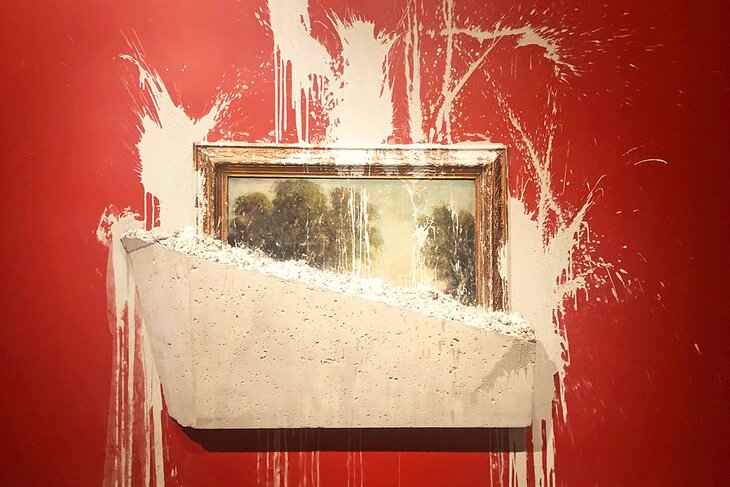
Highlights: Acclaimed collection of Orientalist art and world-class temporary art exhibitions
Istanbul's most famous art gallery is the lovely Pera Museum , which is where art-hounds head to view one of the finest collections of Ottoman-era art in the world.
In particular, the museum contains the well-known paintings of Ottoman artist Osman Hamdi Bey. While the collection also features many other artists who focused their work on the Ottoman world, both local and foreign.
As well as the Ottoman art, the Pera holds a renowned collection of Ottoman-era tile and ceramic work and a vast collection of artifacts from the Ottoman period, as well as pieces from earlier eras.
There's also a program of regularly changing exhibitions, which focus on both historic and contemporary art and often feature some of the international art world's biggest names.
Address: Mesrutiyet Caddesi, Tepebası
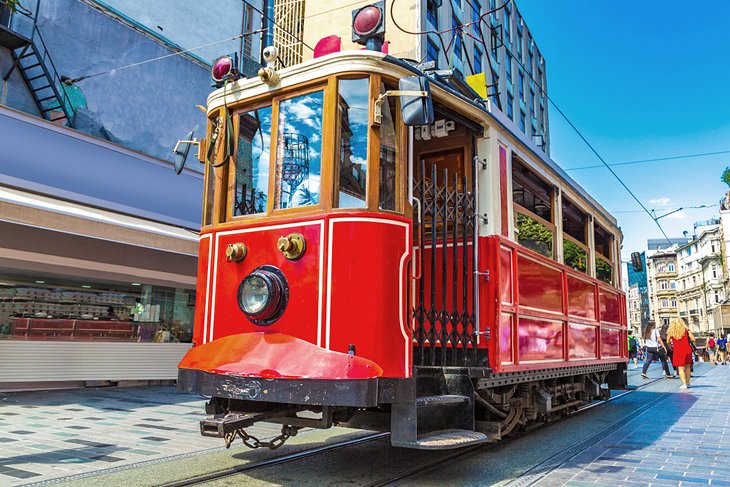
Highlights: Cafe-hopping, a historic tram ride, 19th-century façades, and a dining hub
Pedestrianized Istiklal Caddesi (Independence Street) is a bustling modern shopping street with a wealth of restaurants and cafés.
The lower end of the street can be reached by taking the world's oldest underground railway (the Tünel, constructed in 1875) from near Galata Bridge. There is also a quaintly old-fashioned tramway that runs along its length right up to Taksim Square at the top of the hill.
From Taksim Square, busy Cumhuriyet Caddesi is lined with hotels, shops, restaurants, and high rises. On the east side of the road, just after the square, is Maçka Park, which is home to the interesting Military Museum.
The area around Istiklal Caddesi is home to many churches and old consulate buildings with ornate facades.
Also nearby is Orhan Pamuk's Museum of Innocence . Pamuk is Turkey's most famous author and the winner of the Nobel Prize for Literature. This conceptual-art museum is based around the theme of his novel The Museum of Innocence and is a rather bizarre, kooky, and wonderfully atmospheric experience.
Address: Istiklal Caddesi
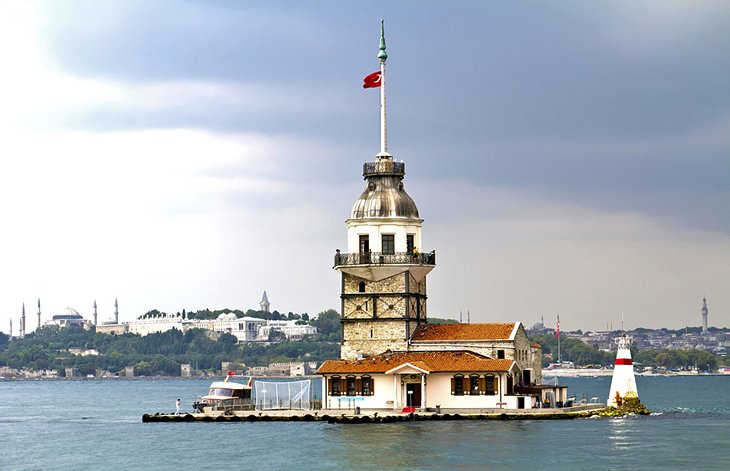
Highlights : Hillside strolls with city views and historic lesser-seen Ottoman mosques
Istanbul's Asian shore is easily reached by ferry from Eminönü dock across the Bosphorus.
On an islet just off the Asiatic shore stands the 30-meter-high Kızkulesi (Maiden's Tower).
Üsküdar was traditionally known as Scutari and has some handsome old mosques, winding lanes, and weathered brown timber houses (particularly between the ferry dock and the large cemetery).
The town, known in antiquity as Chrysopolis, was one of the earliest Greek settlements on the Bosporus.
It was much more exposed to attack by foreign conquerors than Constantinople, with its defensive situation and strong walls, but it was able to draw economic advantage from its exposed situation – until 1800 it was the terminus of the caravan routes that brought the treasures of the East to Constantinople and onwards to Europe.
Of particular sightseeing interest here is the Atik Valide Mosque, which was designed by the famed Ottoman architect Sinan; and the Çinili Mosque, which contains some beautiful Iznik tilework.
If you're planning to see Istanbul's top tourist attractions, the easiest place to base yourself is Sultanahmet (Istanbul's old city district), which is a short stroll from all the city's major historical attractions. The Blue Mosque, Topkapı Palace, and the Hagia Sofia (Aya Sofya) are all within a five-minute walk, and many hotels in the area have stellar views of these buildings, as well as out to the Bosphorus from their rooftop terraces. A tram line runs through Sultanahmet, and public transport is plentiful, connecting the district with other tourist attractions farther afield.
Another popular place to stay is across the Galata Bridge in the Beyoğlu and Taksim districts. These are both lively entertainment areas in the center of modern Istanbul. Below are some highly rated hotels in convenient locations for sightseeing:
Luxury Hotels:
- In a century-old Neoclassical Turkish building, the sunny-hued Four Seasons Hotel Istanbul at Sultanahmet is a mere five-minute stroll from the Blue Mosque, Topkapi Palace, and the Hagia Sophia.
- Decorated in Ottoman style, the boutique White House Hotel Istanbul also lies minutes from these major historical attractions.
- For those who prefer to stay near all the entertainment action in Taksim, the Grand Hyatt Istanbul is a great choice only a few minutes' walk from Taksim Square.
Mid-Range Hotels:
- The elegant Orient Express & Spa by Orka Hotels is an excellent mid-range option within walking distance of the Sultanahmet historical attractions and Sirkeci train station.
- Also in a prime Sultanahmet location is the Osmanhan Hotel , with beautiful views of the Bosphorus.
- In the heart of Taksim, the Artisan Istanbul MGallery offers contemporary comfort close to Taksim Square and Istiklal Street, one of the city's most famous walking streets, lined with cafes, boutiques, and bookstores.
Budget Hotels:
- If you're traveling on a budget, the boutique Sultans Royal Hotel offers great value for money in the heart of Sultanahmet and is known for its friendly, helpful staff.
- The Walnut Shell Hotel is also within walking distance of all the major monuments that make it a prime Istanbul base, and has rooms brimming with color and character.
- Explore the Main Sights: If you have only a day or two set aside for sightseeing, take the Istanbul in One Day Sightseeing Tour . This walking tour will ensure you see the most important attractions, including the Topkapi Palace, Hagia Sophia, the Blue Mosque, and the Grand Bazaar, as well as others. This is a small group tour, limited to 14 people, and includes hotel pickup and drop-off, a traditional lunch, and admission to the sites.
- Private Tours: With more time up your sleeve to see the city, and the option to fully customize what to do and what to see, the private Best of Istanbul Tour offers one-, two-, or three-day Istanbul itineraries with a tour guide.
- Hop-On Hop-Off Tours: The Istanbul Hop-On Hop-Off BusForUs Tour uses a traditional double-decker bus, which stops at the major sites and allows you to tour the city at your own pace. It's also a great way to get familiar with the general layout of the city. Tickets are valid for one day.
The best time to visit Istanbul is, in general, from late spring to early fall — the months of May, June, July, August, and September.
July and August are peak tourism season and bring the hottest weather with long summer days heralding plenty of blue skies and sunshine — great for fitting in plenty of sightseeing. Average temperatures in the city during this period vary between 20 and 29 degrees Celsius. T-shirt weather carries into the evenings for these months, meaning you can slim down your packing requirements.
If you're planning to travel in May, June, or September instead (which are still considered high season in Istanbul), daytime temperatures are usually thoroughly pleasant. For some visitors, its slightly milder temperatures are preferable to July and August for sightseeing, but you will need to pack a warmer layer to throw on after the sun sets. And, remember to bring along an umbrella, as May and September in particular can bring up to eight or nine rainy days per month.
More Related Articles on PlanetWare.com
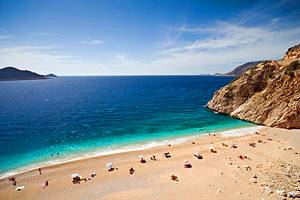
The Coast and More Historic Cities: After an Istanbul sojourn, why not hit Turkey's famed coastline, lapped by the waves of the Aegean and Mediterranean seas. Check out our articles on Bergama and the North Aegean , Fethiye , Antalya, and Kas for inspiration. Turkey has plenty of other historic cities to discover. Konya and Sanliurfa are two of the best and are city guides to these destinations can help you plan your time.
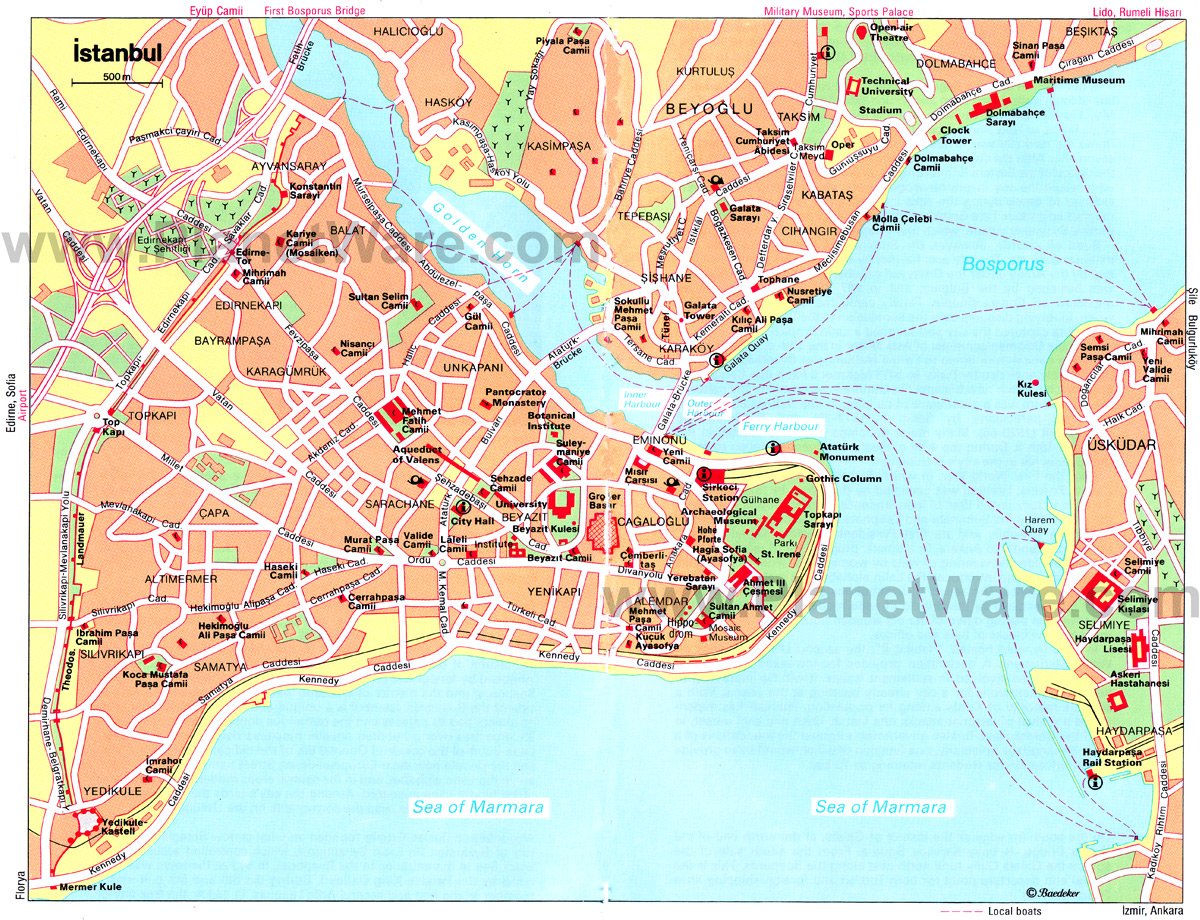
More on Turkey

- Restaurants & Cafes
- Things to Do
- Music & Nightlife
- Art & Culture
- Coca-Cola Foodmarks
- Los Angeles

The 40 best attractions in Istanbul
Our list of Istanbul's top 40 attractions is your gateway to discovering the city's rich historical, cultural, architectural, artistic and natural gems. Let's dive into the heart of Istanbul and discover its treasures
Istanbul connects Europe and Asia and offers a fascinating blend of history and modernity. From the dazzling Hagia Sophia to the lively Grand Bazaar, Istanbul's sights are as colourful and diverse as the city's culture. Whether visiting the city for the first time or having lived here for a long time, exploring Istanbul's top sights is a unique experience. It's not just limited to the famous view of the Bosphorus or its unique historical heritage; it's a vibrant metropolis constantly evolving and full of surprises. The list of Istanbul's top 40 attractions is your gateway to discovering the city's rich historical, cultural, architectural, artistic and natural gems. Let's dive into the heart of Istanbul and discover its treasures.
RECOMMENDED: The best things to do in Istanbul RECOMMENDED: The best hotels in Istanbul RECOMMENDED: The best Airbnbs in Istanbul
What makes the cut? While we've not reviewed every attraction, we've based our list on reviews, editorial insight, and popularity to find you the best attractions. This article includes affiliate links. These links have no influence on our editorial content. For more information, see our affiliate guidelines .
Istanbul’s top attractions

1. Sultanahmet District
What is it? Sultanahmet is the historical heart of Istanbul, encompassing landmarks from the Ottoman and Byzantine eras. This district is home to Haghia Sophia, the Atmeydanı (Hippodrome), Topkapı Palace, the Archaeological Museums, the Museum of Turkish and Islamic Art, and the Blue Mosque.
Why go? Visiting Sultanahmet is essential for experiencing Istanbul's rich history and architectural grandeur. It offers a journey through the city's imperial past, with various cultural and historical sites.

2. Hagia Sophia
What is it? The Hagia Sophia, a cornerstone of Istanbul's historical landscape, was completed in the 6th century by the Byzantine Emperor Justinian I. Originally the largest cathedral in the world, it became a mosque and then a museum. This architectural marvel is famous for its massive dome and exquisite Byzantine mosaics, which include portraits of emperors and religious figures. It also houses unique runic inscriptions from the Viking Age.
Why go? The impressive dome and intricate mosaics give an insight into past civilisations' artistic and cultural heights. This iconic structure is a monument and a testament to Istanbul's historical and spiritual significance - a must-see for anyone passionate about history, art and architecture.

3. Blue Mosque
What is it? The Sultanahmet Mosque, also known as the Blue Mosque, is a remarkable architectural masterpiece from the early 17th century. Located opposite the Hagia Sophia, the Blue Mosque is still an active place of worship, with visits restricted during prayer time. Despite the crowds, the mosque is a significant testament to its time and epitomises the architectural style of the classical age.
Why go? Its iconic status and the opportunity to view its majestic design, especially from the nearby Museum of Turkish and Islamic Art, offer a unique experience to understand Istanbul's rich cultural and architectural heritage.

4. Basilica Cistern
What is it? The Basilica Cistern, known as Yerebatan Sarnıcı, was reopened in 2022 after an extensive archaeological restoration by the IMM. This vast and remarkable underground cistern, built in the 6th century by Emperor Justinian I, is 10,000 square metres and was once an important water source for the city. It consists of 336 marble columns, each 9 metres high and arranged in 12 rows, and is known for its unique architectural elements, including the famous Medusa head sculptures.
Why go? The cistern's striking columns and mysterious Medusa heads are an enchanting experience. Today, the cistern is a museum that not only showcases the historical significance of the cistern but also hosts various cultural and artistic events.

5. Topkapı Palace
What is it? Topkapı Palace is not just a building but a sprawling testament to the luxury and power of the Ottoman Empire. It was the Ottoman sultans' primary residence for over four centuries, a central government seat and a royal court. Today, it is one of the most important museums in Istanbul and displays the rich history of the empire. Visitors can explore the extensive rooms and chambers, each of which tells a different story about the life and reign of the sultans. One of the most valuable exhibits is the 86-carat spoon maker’s diamond, a breathtaking symbol of luxury. The palace also houses an impressive collection of weapons, precious jewellery, and religious artefacts.
Why go? Walking through the palace halls, you feel transported back in time, surrounded by the luxury that characterised the Sultan's reign. The palace offers insight not only into the private lives of the sultans but also into the administrative and ceremonial functions of the empire.

6. Gülhane Park
What is it? Next to the magnificent Topkapı Palace, at the tip of Istanbul's historic peninsula, lies Gülhane Park, one of the city's largest and most beautiful parks. This green oasis is a peaceful retreat in the middle of the bustling old town. Its expansive lawns, shady walkways and picturesque views offer a glimpse into the city's imperial past while providing a tranquil setting for relaxation and leisure. The park's history as part of the Topkapı Palace adds to its appeal and is a vibrant part of Istanbul's rich heritage.
Why go? If you visit the park in spring, you can admire its brightly coloured tulips - a picturesque sight not to be missed. In spring, Gülhane Park is transformed into a spectacular display of colour with thousands of tulips in bloom, a nod to the flower's deep-rooted significance in Turkish culture.

7. Eminönü District
What is it? Eminönü, at the entrance to the Golden Horn, offers a unique insight into the cultural diversity of Istanbul and combines historical architecture with vibrant street life. It's an ideal destination for exploring famous sights such as the Spice Bazaar and Süleymaniye Mosque and experiencing the city's dynamic daily scene. It's an important transport hub that can be reached by ferry and tram, connecting different parts of the city. The neighbourhood is characterised by essential sights such as the Spice Bazaar, Sirkeci Railway Station and the 16th-century Rüstem Pasha Mosque.
Why go? Eminönü is perfect for those who want to dive into the heart of Istanbul's history and experience everyday hustle and bustle.

8. Grand Bazaar
What is it? The Grand Bazaar, one of the world's oldest and largest covered markets, is a monumental testament to Istanbul's rich trading history. This bustling marketplace is more than just a shopping destination; it's a historical marvel. The bazaar's intricate network of lanes and alleys, lined with shops and stalls, offers everything from traditional Turkish crafts to jewellery, textiles, and spices. The architecture of the bazaar, with its domed halls and vaulted passageways, reflects the city's vibrant cultural and commercial heritage.
Why go? Visiting the Grand Bazaar is an experience transcending the mere act of shopping. It's a place to immerse oneself in Istanbul's past and present essence. Even if you're not looking to buy, wandering through the bazaar is like stepping back in time, where every corner holds a piece of history and every shop a story.

9. Çemberlitaş Hamamı
What is it? The Çemberlitaş Hamamı, which was built in 1584 by the famous architect Mimar Sinan, is one of the oldest and architecturally most important hammams in Istanbul. Nurbanu Sultan commissioned it, and it is a testimony to Ottoman bath architecture, which combines functionality, elegance and simplicity. Located close to Istanbul's historical sights, this hamam has separate sections for men and women, each topped by large domes and decorated with marble and intricate inscriptions.
Why go? The Çemberlitaş Hamamı offers an authentic Turkish bath experience steeped in history. The traditional treatments and the tranquil and historic surroundings offer a unique opportunity to relax and immerse yourself in Istanbul's cultural heritage.

10. Spice Bazaar
What is it? The Spice Bazaar, also known as the Egyptian Bazaar, is a lively and historic marketplace in Istanbul. It was built in the 16th century and is a more intimate alternative to the sprawling Grand Bazaar. The bazaar is famous for its many stalls selling spices, sweets, teas, dried fruits and other goods. The Spice Bazaar isn't just a place to shop but also a sensory journey through the rich flavours of Turkish and Middle Eastern cuisine.
Why go? A visit to the Spice Bazaar is an opportunity to immerse yourself in a colourful and aromatic world. It's the perfect place to buy authentic Turkish delicacies, spices, medicinal herbs, and unique souvenirs. Whether for shopping or just to experience the lively atmosphere, the Spice Bazaar is a must-see in Istanbul.

11. Istanbul Modern
What is it? Istanbul Modern is the pioneering museum of modern and contemporary art in Istanbul. Founded in 2004, the museum was initially located in Antrepo No. 4, a former dry cargo warehouse on the banks of the Bosphorus. In 2018, Istanbul Modern entered a new phase: it temporarily relocated to Beyoğlu while the original building underwent an extensive renovation. In 2023, the museum reopened at its new location in Karaköy. The new design, created by the renowned Renzo Piano, draws inspiration from the shimmering waters of the Bosphorus. It offers expanded exhibition spaces, a state-of-the-art auditorium and improved public facilities.
Why go? The new building offers an even better experience for visitors with its innovative design and interactive spaces. Whether you're an art lover or a curious explorer, Istanbul Modern offers you a captivating insight into the evolving history of contemporary art in Istanbul and beyond.

12. Galataport
What is it? Galataport Istanbul, a 1.7 billion dollar development project, has transformed Istanbul's historic harbour into a dynamic urban space. The sprawling 112,000 square metre complex has 230 retail and restaurant units, making it a bustling hub for shopping and dining. Galataport offers many local and international restaurants, major art museums, and cultural events. As a popular attraction in Istanbul, Galataport draws visitors with its unique mix of retail, dining and culture.
Why go? It's a perfect place for families and tourists to explore, offering everything from shopping to arts and entertainment. The harbour redevelopment has also opened up a 1.2 km stretch of coastline in Karaköy, where you can stroll.

13. Pera Museum
What is it? Opened in 2005 in Istanbul's historic Tepebaşı neighbourhood, the Pera Museum is one of the city's cultural highlights. Housed in a beautifully restored 19th-century building, the museum features a mix of temporary global art exhibitions and three permanent collections: 'Oriental Paintings', 'Anatolian Weights and Measures' and ‘Kütahya Tiles and Ceramics'. Founded by the Suna and İnan Kıraç Foundation, the museum is also home to Pera Film, a cinema that screens various independent films and documentaries.
Why go? Visiting the Pera Museum offers a deep insight into historical and contemporary art. The museum's diverse exhibitions and permanent collections provide local and global art insights.

14. Bosphorus Strait
What is it? The Bosporus is a vital strait that not only forms part of the border between Europe and Asia but is also an important sea route. As the narrowest strait in the world used for international shipping, it connects the Black Sea with the Sea of Marmara, which is connected to the Aegean and the Mediterranean through the Dardanelles. With a length of 31 kilometres, the Bosphorus varies in width, with the narrowest point being only 700 metres wide. The strait is bordered by four lighthouses: Rumeli Feneri and Anadolu Feneri in the north and Ahırkapı Feneri and İnciburnu Feneri in the south. This geographical marvel is not only a critical waterway but also a picturesque region of Istanbul that offers classic shoreline promenades, baroque palaces, yalıs (waterfront mansions) and several excellent museums.
Why go? Exploring the Bosphorus offers the opportunity to experience Istanbul's unique geographical location and rich cultural heritage. The Bosphorus is ideal for leisurely exploring, whether walking along its banks, visiting opulent palaces and traditional yalıs or discovering the diverse museums on its shores.

15. Cağaloğlu Hamam
What is it? The Cağaloğlu Hamamı, built in 1741 during the reign of Sultan Mahmut I, is the last great Hamam built in the Ottoman era and a significant historical landmark of Istanbul. Designed by court architect Süleyman Ağa and completed by Abdullah Ağa, the hammam has baroque features and stylistic innovations unusual for classical Ottoman architecture. It was initially built as a çifte (double) public hamam to raise revenue for Sultan Mahmut I's library in the Ayasofya Mosque. The Hamam, covered by a large dome with a glass roof, houses a restaurant, shops, a hairdresser and a shoe shine parlour.
Why go? A visit to the Cağaloğlu Hamamı offers a unique opportunity to immerse yourself in a traditional Turkish bathing experience in a historical setting. This experience is designed to make visitors feel like royalty, like the Ottoman sultans whose portraits adorn the entrance.

16. The Museum of Innocence
What is it? The Museum of Innocence is not just a museum but a living narrative inspired by Orhan Pamuk's novel of the same name. In this innovative space, literature and reality merge and make the setting of the novel tangible. The Museum of Innocence is a captivating destination for anyone interested in Istanbul's cultural and historical diversity. It houses an extensive collection of artefacts, photographs and memorabilia that reflect the novel's bittersweet love story and mirror Istanbul's development since the 1970s.
Why go? This museum is more than just an exhibition of artefacts; it is an exploration of the soul of a city told through the lens of a poignant story. An added attraction for visitors is the novel's unique feature: a ticket printed on the final pages that can be stamped upon entering the museum. This combined experience enriches the visit and makes it a must for literature lovers.

17. Maiden’s Tower
What is it?
The Maiden's Tower (Kız Kulesi / Leander Tower), whose history dates back to 24 BC, is a historic lighthouse and cultural symbol on a tiny island at the southern entrance to the Bosphorus. Due to its location, it is regularly exposed to the elements and the sea and frequently damaged by earthquakes. The tower has been restored several times throughout its long history, most notably after being destroyed by an earthquake in 1509 and later by Mahmut II in 1832. The most recent restoration, which took place from 2021 to 2023, was carried out under the supervision of expert academics. You can reach the Maiden's Tower by private boats that depart from the Üsküdar-Salacak and Galataport piers.
Built on a tiny island about 200 metres from the shore of Üsküdar, the Maiden's Tower offers a unique experience combining history, architecture, and stunning panoramic views.

18. Istanbul Aquarium
What is it? The Istanbul Aquarium, known as the largest themed aquarium in the world, offers a unique journey through different aquatic worlds. The sprawling aquarium covers 22,000 square metres and houses 66 tanks with 7,000 cubic metres of water, in which around 1,500 species and 17,000 marine and terrestrial creatures can be seen. In addition to themed cafeterias and a restaurant with panoramic views, it offers 17 themed areas and a rainforest that takes visitors from the Black Sea to the Pacific.
Why go? The aquarium offers interactive elements, films and visual graphics that enrich the experience and make it more than just an exhibition of marine animals.

19. Rahmi M. Koç Museum
What is it? The Rahmi M. Koç Museum in Istanbul was founded in 2005 and is dedicated to the history of transport, industry and communication. The museum is housed in a beautifully restored 19th-century building in Beyoğlu. It displays a variety of exhibits from the fields of road, rail, sea and air transport, as well as technical and scientific instruments. The collection, mainly from the private collection of Rahmi M. Koç, is complemented by interactive learning areas and a cinema. The museum covers several sites, including the historic Lengerhane building and the Hasköy shipyard, each with its own historical significance. The open-air exhibition features significant artefacts such as vintage cars and a submarine from World War II.
Why go? The museum is an educational and exciting experience for all ages, with various exhibits that bring the history of industry and innovation to life. The museum's unique location on the Golden Horn makes it even more attractive.

20. Princes’ Islands
What is it? The Princes' Islands, an archipelago off the coast of Istanbul in the Sea of Marmara, offer a tranquil refuge from one of the busiest cities in the world. The İstanbul Islands are steeped in history and multiculturalism, reminiscent of the Ottoman Empire era. The group consists of nine islands, four larger and five smaller ones, all of which are closed to modern traffic in order to preserve their tranquil environment. The main islands - Büyükada, Kınalıada, Burgazada and Heybeliada - are accessible by ferry and are popular for their beaches, historic villas and Victorian cottages.
Why go? The Princes' Islands are an ideal destination for a day trip, especially in summer, as they offer a glimpse into a slower-paced, car-free life. Visitors can explore the islands on foot, by bike or on electric bus tours.

21. Galata Mevlevi Lodge
What is this? The Galata Mevlevi Lodge in the heart of Istanbul is a historical and spiritual landmark. Founded in the 15th century, the oldest ‘tekke’ in Istanbul served the Mevlevi order and is known for its deep roots in Sufism. In 1975, this important building was converted into a museum, which today is a central element of Sufi culture and tradition. The Galata Mevlevi Lodge is a treasure trove for anyone interested in Sufi culture and history. It displays various artefacts, including musical instruments, calligraphy and traditional Mevlevi clothing.
Why go? The main attraction is the mesmerising Sema ceremony, performed by whirling dervishes every Sunday at 17.00, which offers a unique insight into the spiritual practises of the Mevlevi order. Visitors are advised to get tickets in advance and arrive early to get good seats. Occasionally, concerts of classical Ottoman music are also held in the hut, adding to the cultural appeal.

22. St. Antoine Church
What is it? St Antoine's Church, the largest Catholic church in Istanbul, adorns Istiklal Caddesi with its majestic Venetian neo-Gothic architecture. Built between 1906 and 1912, the church is a place of worship and a historical landmark. It is known for its association with Pope John XXIII, who served here before becoming pope and commemorated by a courtyard statue.
Why go? St. Antoine Church offers peace in the busy Beyoğlu district and is ideal for quiet reflection. Services are held in several languages, including English and Turkish, making the church a welcoming place for diverse worshippers and those interested in its rich history and architectural beauty.

23. Casa Botter
What is it? The Botter Apartment or Casa Botter on Istiklal Street is an architectural gem built initially as Istanbul's first fashion house by Dutch tailor Jean Botter in the early 20th century. Designed by architect Raimondo D'Aronco, the historic building was recently restored and transformed into a design and art centre that houses various cultural spaces such as an exhibition hall, a demonstration centre and a design workshop.
Why go? Now a centre for art and design, Casa Botter is a must-see because it offers a unique combination of historical architecture and contemporary art.

24. Gazhane Museum
What is it? Gazhane Museum, originally the Hasanpaşa Gashouse, has a rich history dating back to 1892. It was the last gashouse in Istanbul, providing light and fuel for over a century. After its closure in 1993, the building, which represents a significant piece of Turkish industrial heritage, was left to its own devices. After a lengthy and extensive restoration by the IMM, the 130-year-old building was reborn as the Gazhane Museum in 2021. Located in Kadıköy, this vibrant cultural and community space offers a climate and caricature museum, a children's science centre, exhibition and workshop areas, theatres, libraries, and activity spaces. It also includes a climate crisis exhibition, a restaurant, and a café, all within a 32,000 square-meter campus.
Why go? The museum offers cultural, artistic and scientific events and stages, libraries and workspaces for young people that are open 24 hours a day. Visitors can relax among the resident cats in the garden and immerse themselves in the vibrant atmosphere.

25. Galata Tower
What is it? The Galata Tower, built in 1348, is a striking landmark on the Istanbul skyline. It originally belonged to a Genoese colony and has been restored to house a museum showcasing Istanbul's extensive history. From its top-floor balcony, you have a panoramic view of the city, the Golden Horn, the Bosphorus and the Sea of Marmara.
Why go? The tower offers an unrivalled view of Istanbul and a unique insight into the city's historical development - all from a major architectural landmark.

26. Istanbul Museum of Painting and Sculpture
What is it? Founded in 1937 and initially located at Dolmabahçe Palace, the Istanbul Museum of Painting and Sculpture (IMPS) is Turkey's first museum dedicated to plastic arts. After a temporary closure, it was relocated to the redesigned Antrepo 5 in the Tophane district. The museum, now housed in a modernised space, completed its renovation in 2021 and offers a contemporary setting for its extensive art collection.
Why go? IMPS is a must-visit for art enthusiasts, showcasing a rich array of Turkish fine arts in a modern museological environment. The museum's blend of historical significance and contemporary design provides a unique cultural experience, making it a standout destination in Istanbul's art scene.

27. Belgrad Forest
What is it? The Belgrad Forest stretches over 1300 hectares and is a green oasis in Istanbul known for its hiking trails, picnic areas and barbecue sites. This deciduous forest is not only a botanical treasure with a variety of interesting plants but also a historical site with ancient aqueducts and several recreational areas such as Ayvad Dam, Bueyuek Çeşme and Mehmet Akif Ersoy Recreation Area. The forest is a habitat for various wild animals, including deer, weasels, snakes and the occasional fox or wolf. A 6-kilometre hiking trail winds around a picturesque lake and is ideal for walking, jogging, or running.
Why go? Belgrad Forest is an ideal retreat for anyone looking for peace and a touch of nature. The quiet paths and abundant wildlife offer a refreshing break from Istanbul's urban hustle and bustle and are perfect for outdoor activities or simply relaxing in the greenery.

28. Atatürk Arboretum
What is it? Founded in 1949 and nestled within the Belgrade Forest, the Atatürk Arboretum covers 300 hectares and is home to almost 2,000 tree and plant species worldwide. This green oasis in the north of Istanbul is home to tranquil lakes, diverse flora including oak, fir and sequoia trees and the city's first swan nursery, founded in 1916.
Why go? The Atatürk Arboretum offers a peaceful escape from the urban bustle of Istanbul and is ideal for quiet walks and immersing yourself in nature. Just 5 kilometres from the city, it is ideal for relaxation and fresh air amidst rich botanical surroundings.

29. Istanbul Archeology Museums
What is it? The Istanbul Archaeology Museums, Turkey's first museum founded in the late 19th century, is a remarkable complex that includes the Archaeological Museum, the Museum of Ancient Near Eastern Works and the Tile Kiosk Museum. It houses an extensive collection of artefacts from Ancient Greece, Rome, Turkey and beyond, including the famous sarcophagus of Alexander the Great. The museum buildings are architectural gems, with the Tiled Kiosk being one of the oldest examples of Ottoman civil architecture in Istanbul.
Why go? Visiting the Istanbul Archaeology Museum offers a deep insight into ancient civilisations. It is an enlightening experience for anyone interested in history, archaeology or art. The museum's extensive collection offers a comprehensive insight into the region's rich past and is necessary for a meaningful and educational journey through time.

30. Tünel
What is this? The Tünel is a historic funicular railway connecting Karaköy with Tünel Square in Istanbul. It was opened in 1875, making it the second oldest underground railway after the London Underground. It was initially built to provide traders and merchants a faster way up and down the steep hill between the city's two parts. This short but significant route is popular for those arriving at Karaköy Pier and heading to Beyoğlu. The journey takes around 90 seconds, and trains run every 5 minutes, making it an efficient travel method.
Why go? As well as being practical, the Tünel offers a glimpse into Istanbul's rich historical past and is a delightful experience for locals and tourists alike. Whether you're interested in history or simply looking for a unique way to travel around the city, a ride on the Tünel is a must in Istanbul.

31. Süreyya Opera House
What is this? The Süreyya Opera House, an impressive architectural marvel, was commissioned in 1927 by the famous politician Süreyya İlmen Pasha. This iconic cultural centre is located on the Asian side of Istanbul and is a first-class address for opera and ballet performances. Due to an incomplete stage, the Süreyya Opera House initially served as a cinema and wedding venue for many years. However, after an extensive restoration in 2007, it was reopened and originally served as a performing arts centre.
Why go there? Today, it is not only the performances that attract visitors but also the building itself, which is a sight to behold. Its walls exude nostalgia, and the art deco foyer, inspired by the Champs-Elysées theatre in Paris, testifies to its historical and architectural significance.

32. Bomontiada
What is it? Bomontiada, located in the vibrant European side of Istanbul, is a dynamic cultural complex that has revitalised the once-dormant Bomonti and Kurtuluş neighbourhoods. This innovative space within the historic and previously abandoned Bomonti beer factory is a melting pot of artistic and culinary experiences. It houses the renowned music venue Babylon, the versatile art space Alt, the Leica Camera Turkey, the Ara Güler Museum, and various restaurants.
Why go? Bomontiada combines art, music, photography, and gastronomy, offering something for everyone. The complex is especially lively during the warmer months, hosting free outdoor concerts and film screenings in its airy courtyard.

33. Sakıp Sabancı Museum
What is it? The Sakıp Sabancı Museum in Istanbul's Emirgan district is a famous cultural institution housed in a historic mansion on the Bosphorus. The former residence of business tycoon Sakıp Sabancı is now a prominent museum for significant art exhibitions featuring works by Monet, Picasso and other famous artists. The museum's permanent collections include the ‘Art of the Book and Calligraphy’, which exhibits exquisite Ottoman calligraphy and illuminated manuscripts, the ‘Painting and Sculpture Collection’ with many works of art, the ‘Decorative Arts’ and an ‘Archaeological’ collection.
Why go? Housed in a mansion known for its equestrian statue and historical significance, the museum is a must-see for anyone wishing to explore Istanbul's artistic and cultural heritage.

34. Pierre Loti Hill
What is that? Pierre Loti Hill is located in the quiet in Eyüp and is named after the French writer Julien Viaud, known by his pseudonym Pierre Loti. The hill above the Golden Horn is famous for its breathtaking views and a collection of well-preserved 19th-century Istanbul architecture. Visitors can reach the summit by cable car or a staircase that winds through the Sultan's Cemetery. The hill is not only a natural landscape but also a historical site, home to six historic mansions converted into a boutique hotel, restaurant and café where Loti wrote his novels.
Why go there? The hill offers one of the most famous views of the Golden Horn and becomes even more magical after sunset when the city lights illuminate the area.

35. Turkish and Islamic Art Museum
What is it? Opened in 1914, the Turkish and Islamic Art Museum is located in the historic Ibrahim Paşa Palace near the Blue Mosque and houses a diverse collection of Islamic art. The museum is known for the world's best carpet collection, including rare Seljuk carpets from the 13th century. Also, it displays glassware, ceramics, metal artefacts and a section on life in Istanbul in the 19th century.
Why go? Although the Museum of Turkish and Islamic Art is not one of the most famous museums in Istanbul, it takes its visitors on a journey through time with its works from various historical periods.

36. Dolmabahçe Palace
What is it? The Dolmabahçe Palace, completed in 1856, is a historical landmark of Istanbul and was the last residence of the Ottoman sultans and the summer residence of Mustafa Kemal Atatürk, the founder of the Turkish Republic. The palace is known for its opulent interiors, including the world's most enormous crystal chandelier, and has been transformed from a natural harbour into a magnificent mansion. It has 285 rooms, 44 halls and a unique blend of Ottoman and Western architectural styles.
Why go? A visit to the Dolmabahçe Palace is a journey through the luxury of the Ottoman era and a poignant link to modern Turkish history. It was in this palace that Atatürk spent his last days.

37. Emirgan Korusu
What is it? Emirgan Korusu is located on the European shore of the Bosphorus north of the Fatih Sultan Mehmet Bridge and is one of the largest and most picturesque parks in Istanbul. This tranquil haven is located in Emirgan, which stretches across a low headland between Baltalimanı and İstinye. The park offers breathtaking views across the Bosphorus to Kanlıca and the expansive Beykoz Bay. Emirgan Korusu is known for its lush greenery and tranquil atmosphere.
Why go? Emirgan Korusu is known for its lush greenery and tranquil atmosphere. It's enchanting in spring when it's transformed into a vibrant tapestry of colour thanks to the thousands of tulips planted for the annual Tulip Festival.

38. Borusan Contemporary
What is it? Borusan Contemporary Perili Köşk in Istanbul, also known as the Haunted Mansion, is an innovative "office museum" where the Borusan Contemporary Art Collection is exhibited. During the week, it is the office of the Borusan Holding Company, while at weekends, it is transformed into a museum where a range of contemporary artworks are exhibited, and exhibitions curated by well-known personalities are shown.
Why go? This unique venue offers a novel experience of viewing contemporary art in a corporate environment. Open to visitors at weekends, it offers a fascinating mix of art and business, enriched with educational programmes and cultural discussions.

39. Khedive Palace
What is it? Khedive Palace (Hıdiv Kasrı), dating back to the early 20th century, is an architectural gem in Istanbul's Çubuklu and Kanlıca quarters. This Art Nouveau palace, with Neo-classical Ottoman elements, offers panoramic Bosphorus views from its marble terraces. Nearby, Çubuklu Park provides a serene, less crowded environment for leisurely walks and photography.
Why go? Visit for a tranquil escape in Istanbul, where the palace's restaurant offers delightful views and dining. The park is perfect for a peaceful stroll, and the nearby Kanlıca quarter is known for its delicious yoghurt and charming architecture.

40. Miniatürk
What is that? Miniatürk in Istanbul is a miniature park that displays 1:25 scale models of Turkey's famous landmarks. The miniature park comprises 137 models, including historical buildings from Istanbul, Anatolia and the former Ottoman territories. The park represents Turkey's 3,000-year history and includes replicas of two ancient wonders, the Temple of Artemis and the Mausoleum of Halicarnassus.
Why go? Miniatürk is a favourite excursion destination in Istanbul for both locals and tourists and offers an excellent opportunity to explore the monumental highlights of Turkey in a short time. The mobile audio guide application in nine languages complements this educational experience.
[image] [title]
Discover Time Out original video
By entering your email address you agree to our Terms of Use and Privacy Policy and consent to receive emails from Time Out about news, events, offers and partner promotions.
🙌 Awesome, you're subscribed!
Thanks for subscribing! Look out for your first newsletter in your inbox soon!
- Website terms of use
- Modern slavery statement
- Manage cookies
Time Out products
- Mobile applications
- Time Out global
- Properties in Turkey
- Properties in Istanbul
- Properties in Bodrum
- Properties in Fethiye
- Properties in Kalkan
- Properties in Antalya
- Properties in Alanya
- Properties in Dalaman
- Properties in Side
- Properties in Dalyan
- Properties in Izmir
- Properties in Didim
- Properties in Marmaris
- Properties in Bursa
- Turkey Area Guide
- Istanbul Area Guide
- Alanya Area Guide
- Antalya Area Guide
- Belek Area Guide
- Fethiye Area Guide
- Kalkan Area Guide
- Side Area Guide
- Bodrum Area Guide
- Dalyan Area Guide
- Didim Area Guide
- Bursa Area Guide
- Izmir Area Guide
- Marmaris Area Guide
- Turkey Property Purchase
- Advice on Buying Property in Turkey
- Your budget
- Cost of Buying Property in Turkey
- Best Places to Buy Property in Turkey
- Choosing Your Property
- Annual Running Costs
- Moving to Turkey and Residency
- Renting out your Turkish Property
- Inheritance Laws and Wills
- Property Buying Process
- Resident Permits
- After sales assistance
- How to apply for Turkish Citizenship
- Selling Your Property In Turkey
- Meet the Team
- + 44 (0) 207 193 1553
- [email protected]
Currency / Language
Blog ottoman palaces to visit in istanbul that portray turkey's colourful history.
11 November 2021 / Culture
6 Beautiful Ottoman Palaces of Istanbul -Turkey
Istanbul's grand and beautiful Ottoman palaces are an excellent place to learn all about Turkey's colourful historical timeline. Visiting these beautiful, grand residences highlights how this royal dynasty, which once ruled nearly half the world, lived and operated.
The Ottomans first invaded Istanbul, then named Constantinople in 1453, and from this sprawling city, commanded respect and admiration. Nearly 500 years later, the Ottoman Empire crumbled, but the sultans built many iconic Ottoman palaces that still stand today. Some are open for public touring, and they should be on your bucket list when visiting Istanbul, so let us look at where to start.

1: Topkapi Palace: First Home of the Ottoman Sultans
Of course, Topkapi Palace should be your first visit. Standing in the Sultanahmet area, near other iconic landmarks like Hagia Sophia and Blue Mosque, Topkapi was the Ottoman's first ruling centre. To call this building a palace is an understatement. Thousands of people lived within the palace walls, making Topkapi more of a mini-city. As well as being home to the Ottoman sultans, Topkapi Palace was their administrative headquarters for 400 years.
One can only wonder at the hidden stories of ruthless sultans, beautiful concubines, scheming advisors and eunuchs in charge of the harem section. A tour starts at the first court, which includes the Hagia Eirene Byzantine church. The second courtyard was the business centre, with the kitchens, imperial council chamber, treasury, sleeping quarters, and pavilions. From here, visitors also get access to the harem, which is an extra ticket administration fee, but worth paying.
Next is the third courtyard that was the sultan’s private area, and these days, one room holds sacred relics of the prophet Muhammad. The privy chamber dormitory contains all the sultans' portraits, while the treasury section features jewellery and the famous Topkapi Dagger and spoon maker's diamond. Lastly, the fourth court houses beautiful pavilions, marble terraces, and a circumcision room.

2: Dolmabahce Palace and The Ottoman Demise
The Dolmabahce palace took 13 years to construct and became the Ottoman's dynasty second home in 1856 because Topkapi was outdated. Despite being nicked named the poor man of Europe, the Ottoman dynasty desperately wanted to match the western palaces of France and England in terms of stylish architecture, décor, and design. Sitting in the Besiktas district, Dolmabahce Palace is also most famously known where Mustafa Kemal Ataturk, founder of the modern Turkish republic, passed away.
Visitors can see the room where he passed, and the clock is set to that exact time. Covering 100 thousand square meters, this is another palace where visitors wow at the lavish décor and design. Dolmabahce palace features 6 Turkish baths, 44 halls, 68 toilets and a staggering 285 rooms. Elaborate décor features 14 tons of gold on the ceilings, pure crystals lining staircases, and 131 silk carpets from Hereke, an area in Turkey known for luxury carpet designs.
A chandelier, a present from Queen Victoria of England, weighs a staggering 4 tons and takes 750 lightbulbs, and the Tsar of Russia also presented bearskin carpets. The Dolmabahce Palace separates into the Selanik section, which was the sultans' quarters and administration centre, and the harem. There is a separate entrance fee for both, and visitors must sign up for guided tours. Ticket costs are worth paying, and you won't be disappointed.

3: Beylerbeyi Palace and Visiting Dignitaries
Beylerbeyi Palace was the Ottoman sultans' summer residence and also where they hosted visiting foreign dignitaries. A famous tale is the Empress Eugenie of France, the wife of Napoleon the third, entered the palace on the arms of Abdul-Aziz sultan, hence enraging the Sultan's mother Pertevniyal who slapped her across the face. Other royal international figures who spent time in Beylerbeyi Palace included Austrian Emperor Franz Joseph, German Emperor Wilhelm the 2 nd , Prince Nikola of Montenegro and the Duke and Duchess of Windsor.
Covering 300 square meters, visitors tour the harem, barn stables and garden pavilions. The outside exterior displays western architecture, but the interior décor was traditionally Ottoman. Compared to Dolmabahce Palace's extravagance, Beylerbeyi pales in comparison yet still offers eye-catching touches, including the reception hall with pool and fountain. This feature was often used in the grand Ottoman residences at this time of construction because of soothing sounds and imitating relief from the summer heat. Once again, for carpets, Ottoman royalty wanted only the best luxury, Hereke rugs.

4: Ottoman Yildiz Palace
Ottoman Sultan Abdul-Hamid the 2 nd briefly used Yildiz palace as an administrative centre. He preferred Yildiz Palace to Dolmabahce, which was prone to sieges from the sea because of the prominent Bosphorus location. Abdul-Hamid continued to make expansions and renovations, eventually expanding the palace to cover 500,000 square meters. Despite this, the impressive architectural style is not as grand or dramatic as the Dolmabahce Palace. Instead, the separate locations of buildings would hark back to the same manner as used in Topkapi.
Abdul-Hamid was passionate about art and culture, and he also added a photography workshop, theatre, painting gallery, printing press, an observatory and a music studio. In another section, workers produced tiles and porcelain products, which the Sultan sent to dignitaries and foreign officials to prove the excellence of Ottoman porcelain production. Another section was dedicated to wood crafting. Yildiz Palace was famously the Ottoman empire's third administrative centre and last since they were disbanded in the years to come.

5: Ciragan Palace in Istanbul
Do you want to stay in an Ottoman palace? If so, book into the former Ciragan Palace that is now a hotel, albeit prices for this five-star establishment are pricey. Sitting on the Bosphorus European shores between Ortakoy and Besiktas, Ciragan is one of the world's 15 most expensive hotels, with suites costing roughly 35,000 USD a night. Built on the orders of Abdul-Aziz sultan in 1876, Ciragan resembled a new trend of sultans building their own houses rather than using those of the previous generation.
The original architectural design featured a wood roof and inner walls, while exterior facades featured marble. Connected to Yildiz Palace via a bridge, Ciragan palace is most famously where Abdul Hamid the 2 nd was dethroned and spent his last days. Unfortunately, a fire in 1910 destroyed much of the building, a common occurrence since the Ottomans often used wood to construct houses. After that, Ciragan became a football field until reopening as a high-class hotel in 1987. The Kempinski chain is now the official owner, and during renovations, they replicated much of the original Baroque architecture.

6: Kucuksu Palace in Asian Istanbul
Also known as the Kucuksu pavilion, this royal establishment famously sits on the Asian side of Istanbul, whereas others were mainly on the European side. Regarding size, Kucuksu pales compared to others like Topkapi or Dolmabahce but was never a place of residence, and Ottoman sultans traditionally used the palace for hunting expeditions. Commissioned by Sultan Abdul-Mejid the first, in a neo-baroque style, Kucuksu was initially a two-storey wood structure. The unique aspect is that corner rooms surrounding a central hall reflected more of a Turkish house style than a palace for Ottoman sultans.
They commissioned the same stage designer of the Vienna state opera to decorate the interior. Like other Ottoman palaces, original Hereke carpets were used, along with Bohemia chandeliers and Italian marble. Sultan Abdulaziz added more elaborate architectural features during his reign. After the disbandment of the Ottoman empire, the Turkish government used Kucuksu as a guesthouse, until 1944 when the palace opened as a museum. Another prominent moment of fame happened when the palace appeared as a setting in the James Bond film; The World is Not Enough.
Ottoman Homes in Istanbul: From the grand and majestic Ottoman palaces of Istanbul to the humble homes, this article talks about priceless structures that Istanbul locals strive to preserve. Reflecting on Istanbul's cultural heritage, walking tours to spot old Ottoman homes are popular these days. In this article, we talk about where to find other Ottoman architecture in Istanbul.
POPULAR TAGS
- Traditional
- Contemporary
Related Properties

1 Bedrooms Apartment for Sale

2 Bedrooms Apartment for Sale

3 Bedrooms Apartment for Sale

Download Turkey Homes Mobile Application


Sign Up Today
Start your 14 day free trial today

The History Hit Miscellany of Facts, Figures and Fascinating Finds
10 of the Best Historical Sites in Istanbul

Laura Mackenzie
23 jul 2018.

It has become a cliché to describe Istanbul as the bridge between East and West. But in this case, the cliché is undeniably true. Ruled by a succession of empires and straddling both Asia and Europe, this Turkish city is a melting pot of different cultures and a place full of contradictions.
Home to a heady mix of extraordinary history, nightlife, religion, food, culture and – despite not being the country’s capital – politics, Istanbul offers tourists of all persuasions something to wonder at at every turn. But it is undoubtedly a destination that should be on the bucket list of every history buff.
With Istanbul one of the world’s largest cities, it can be hard to know where to start when it comes to deciding which historical sites to visit. So we’ve compiled 10 of the best.

1. Sultan Ahmet Mosque
Popularly known as the Blue Mosque – a nod to the blue tiles that decorate its interior – this still functioning house of worship was constructed in the early 17th century during the reign of Ahmed I, the sultan of the Ottoman Empire between 1603 and 1617.
One of the most famous mosques in the world, the building has inspired the design of many other mosques, including the Mohammad Al Amin Mosque in Beirut.
2. Hagia Sophia
There is perhaps no other building that so epitomises Istanbul’s place as the crossroads of Europe and Asia. Situated opposite the Sultan Ahmet Mosque, Hagia Sophia served as a Greek Orthodox church for nearly 1,000 years before being turned into a mosque in the 15th century during Ottoman rule of the city. It was then secularised in the early 20th century and opened as a museum in 1935.
Impressive even by modern engineering standards, Hagia Sophia was the largest building in the world at the time of its construction in 537 AD.

The Hagia Sophia is situated opposite the Sultan Ahmet Mosque.
3. Topkapi Palace
A must-seen for anyone interested in Ottoman history, this opulent palace was once the residence and administrative headquarters of the Ottoman sultans. Construction on the palace began in 1459, just six years after the city had been seized by the Muslim Ottomans in a watershed moment that marked the end of the Byzantine Empire and dealt a blow to Christian lands.
The palace complex is made up of hundreds of rooms and chambers but only a few are accessible to the public today.
4. Galata Mevlevi Dervish Lodge
Whirling dervishes are one of Turkey’s most iconic symbols and the Galata Mevlevi Dervish Lodge is arguably the best place to see them perform the sema (the religious ceremony in which dervishes whirl) in Istanbul. Established in 1491, it was the first Sufi lodge in the city.

Whirling dervishes are pictured at the Galata Mevlevi Lodge in 1870.
5. Galata Tower
Located in the cobbled district of Galata, not too far from the Sufi lodge mentioned above, this tower was the tallest building in Istanbul when it was built in 1348. Its construction pre-dates the arrival of the Ottomans to the city and it was originally known as the “Tower of Christ”.
Ironically, the building was damaged by a number of fires in the 18th and 19th centuries, despite being used by the Ottomans for spotting blazes in the city from 1717.
6. Basilica Cistern

This hauntingly beautiful subterranean chamber is the largest of several hundred ancient cisterns located beneath Istanbul. Another site that pre-dates the Ottomans, it was built by the Byzantines in the 6th century. Be sure to look out for the two Medusa heads that serve as bases for two columns in the cistern!
7. Princes’ Islands
This group of nine islands are located an hour’s boat ride from the city, in the Sea of Marmara. They take their name from the fact that the islands served as a place of exile for princes and other members of royalty during the Byzantine period and, later, for members of Ottoman sultans’ families too.
More recently, the largest of the islands, Büyükada, was where an exiled Leon Trotsky lived between 1929 and 1933.

One of the Ottoman-era mansions that line the streets of Büyükada, the largest of the Princes’ Islands.
Only four of the islands are accessible to the public but those alone provide more than enough of a treasure trove for history lovers. With all motorised vehicles (except service vehicles) banned from the islands, hors-drawn carts are the main mode off transport and these, coupled with the 19th century Ottoman mansions and cottages that can still be found on Büyükada, give visitors the feeling of stepping back in time.
In addition, there are an abundance of churches and other religious buildings to be found on the islands, including Aya Yorgi on Büyükada, a tiny Greek Orthodox church that boats beautiful sea views from its grounds.
8. Grand Bazaar
One of the oldest and largest covered markets in the world, the Grand Bazaar is a must-see for anyone who enjoys a spot of haggling. Construction of the bazaar began in the mid 15th century, soon after the Ottomans captured the city, and today it is home to more than 4,000 shops.

The Grand Bazaar in Istanbul is one of the oldest in the world. Credit: Dmgultekin / Commons
9. Kariye Museum
Located some distance from the lights and sights of central Istanbul, this former Greek Orthodox church is worth the effort to find. Grand – though a little plain – on the outside, the building’s interior is covered with some of the oldest and most beautiful Byzantine mosaics and frescoes to be found in the world today.
Built in the 4th century, it pre-dates Islam but is now found in one of the city’s most conservative Muslim neighbourhoods.
10. Taksim Square

Taksim Square was the scene of large-scale protests in 2013. Credit: Fleshstorm / Commons
The Turkish presidential palace, national assembly and ministerial buildings may all be located in Ankara, but, as the country’s largest city, Istanbul is certainly not immune to political activity. Taksim Square has played a central role in this activity, providing the setting for numerous demonstrations through Turkey’s years of independence.
Most recently, the square became synonymous with the so-called “Gezi Park protests” of 2013. These protests began in opposition to the demolition and redevelopment of Gezi Park, located next to the square, but evolved into protests that criticised the government for a variety of reasons, including grievances from those across the political spectrum.
You May Also Like
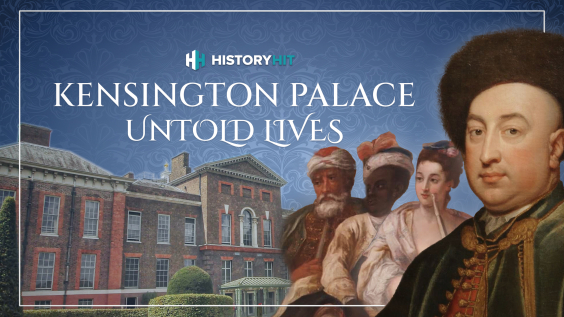
Mac and Cheese in 1736? The Stories of Kensington Palace’s Servants
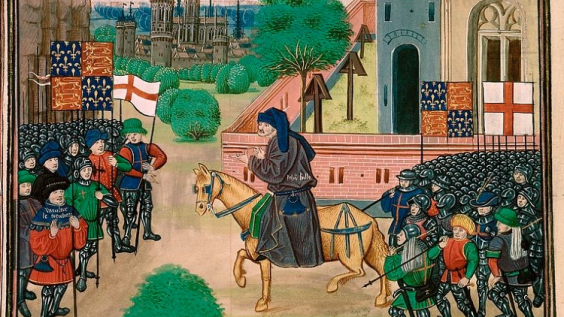
The Peasants’ Revolt: Rise of the Rebels
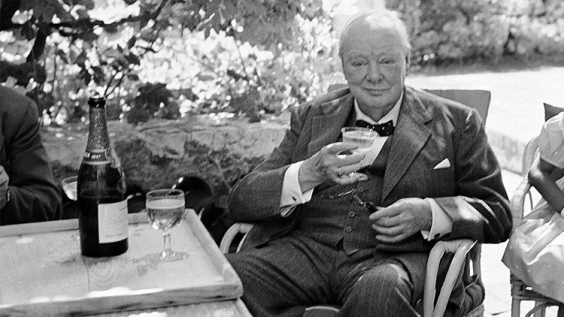
10 Myths About Winston Churchill
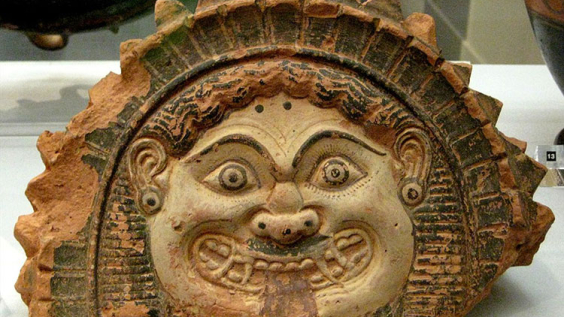
Medusa: What Was a Gorgon?
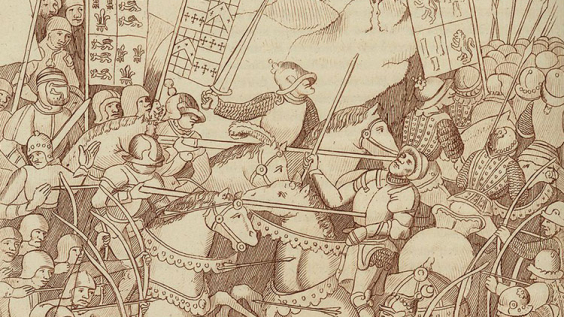
10 Facts About the Battle of Shrewsbury
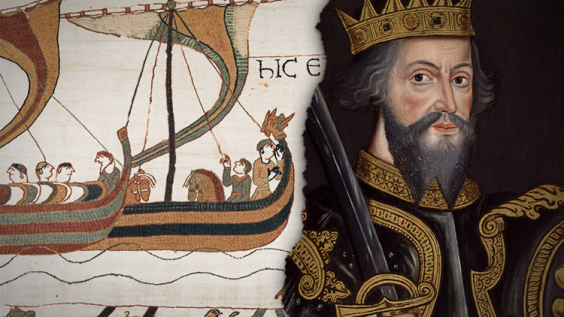
5 of Our Top Podcasts About the Norman Conquest of 1066
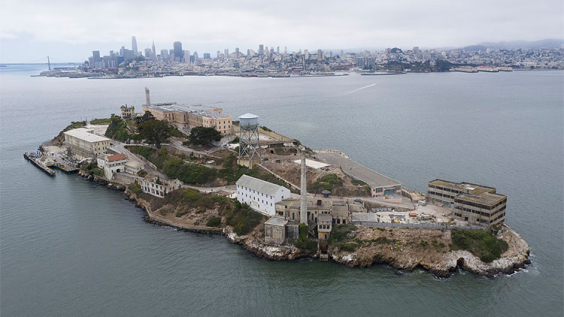
How Did 3 People Seemingly Escape From Alcatraz?
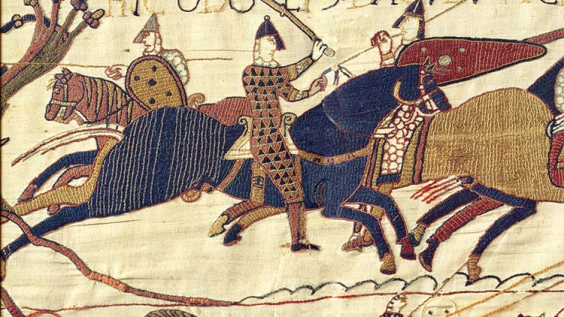
5 of Our Top Documentaries About the Norman Conquest of 1066
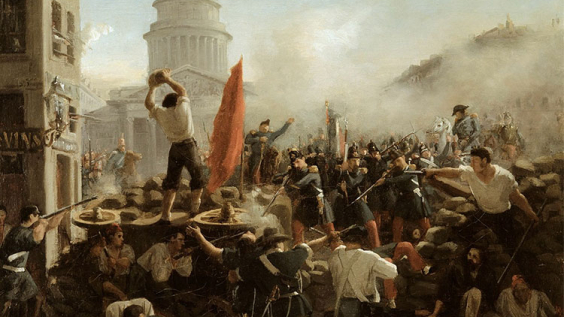
1848: The Year of Revolutions
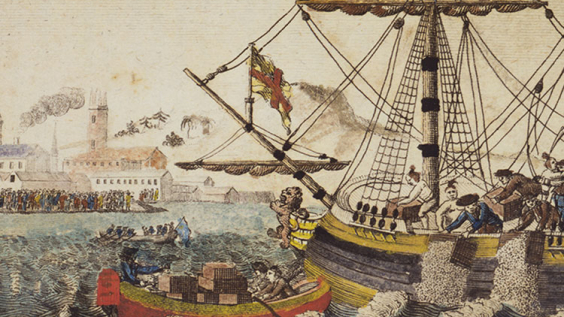
What Prompted the Boston Tea Party?

15 Quotes by Nelson Mandela
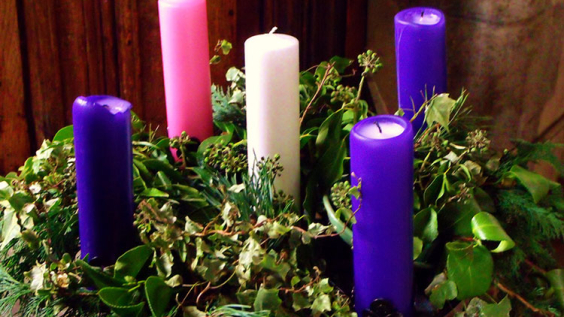
The History of Advent
14 must-do things on your trip to Istanbul
Nov 1, 2021 • 8 min read
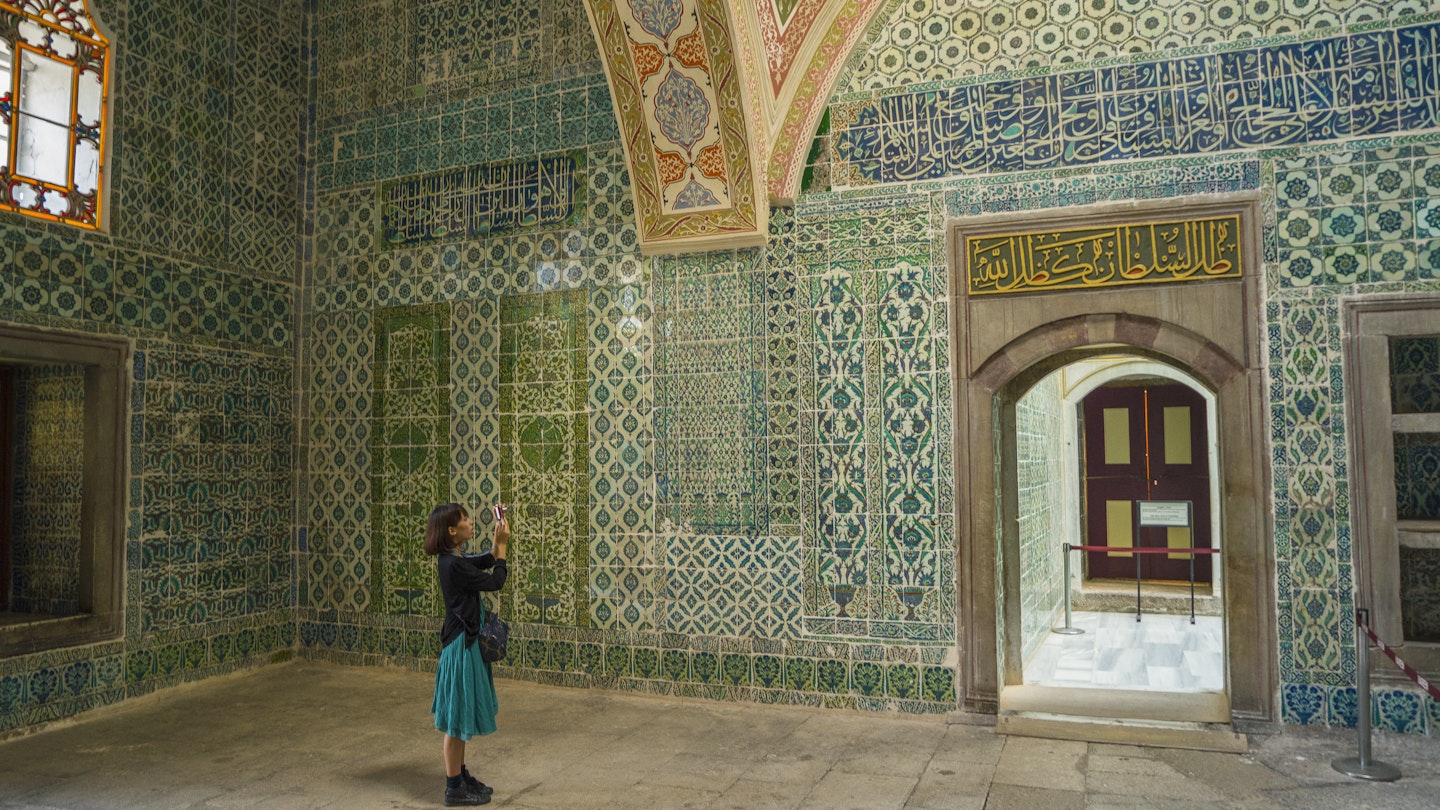
Get ready to add even more to your Istanbul itinerary: here are the top things to do in the city © Atlantide Phototravel / Getty Images
We’ve all heard the descriptions of Istanbul being a bridge between Europe and Asia, a place where East meets West and where cultures have coexisted for centuries. But not everyone is aware of its endlessly fascinating contradictions.
Here are the top things to do in Istanbul to experience the city’s different stories and faces.

Marvel at the Aya Sofya
History resonates when you visit the majestic Byzantine basilica of Aya Sofya . Built by order of the Emperor Justinian in the 6th century, its soaring dome, huge nave and glittering gold mosaics contribute to its reputation as one of the world's most beautiful buildings, and its fascinating history as church, mosque and museum make it the city's most revealing time capsule. Looted by marauding Crusaders in the 13th century, stormed by Ottoman invaders during the Conquest in 1453 and visited by millions of tourists after being converted into a museum in 1935, it is one of Turkey's greatest treasures.
Since its reconsecration as a mosque in summer 2020 , the Aya Sofya is closed to non-worshippers during the five daily prayer times, women must cover their heads and all visitors must take off their shoes to enter the inner narthex. Most of the building’s ancient marble floor has been covered by carpets, some of its mosaics are shielded by retractable screens and the upper gallery is inaccessible, but its historic grandeur remains breathtaking.

Experience the extravagance of Topkapı Palace
The secrets of the seraglio will be revealed during your visit to the opulent Ottoman Topkapı Palace complex occupying the promontory of Istanbul's Old City. A series of mad, sad and downright bad sultans lived here with their concubines and courtiers between 1465 and 1830, and extravagant relics of their centuries of folly, intrigue, excess, patronage, diplomacy and war are everywhere you look. Highlights include the huge Harem, impressive Imperial Council Chamber, object-laden Imperial Treasury and picturesque Marble Terrace.
Uncover the secrets of Topkapı Palace

Lose yourself in Istanbul's Bazaar District
The chaotic and colorful Grand Bazaar is the best-known shopping destination on Istanbul's historic peninsula, but it certainly isn't the only one. After exploring its labyrinthine lanes and hidden caravanserais, follow the steady stream of local shoppers heading downhill into the busy shopping precinct of Tahtakale, which has at its hub the seductively scented Spice Bazaar . From there, head back up toward the Blue Mosque and its attached arasta (an arcade-style Ottoman bazaar that typically featured practitioners of a single trade), where you may well find a lasting memento of your trip.
Ride Istanbul’s ferries
Climbing aboard one of the city's famous flotilla of ferries is the quintessential Istanbul experience. The trip between Asia and Europe on a commuter ferry is hard to beat, but the Bosphorus tourist ferries that travel the great strait from Eminönü toward the mouth of the Black Sea are even better, offering passengers views of palaces, parks and ornate timber mansions on both the Asian and European shores. It doesn't matter whether you opt for a long or short cruise: either is sure to be memorable.
Istanbul ferries will now run during the night at weekends

Revel in Istanbul's nightlife
Though Istanbul’s nightlife scene has suffered some setbacks, you can’t keep a good party town down. For a traditional night out, head to one of the Beyoğlu district’s meyhanes, tavern-like restaurants serving meze and fish where sing-alongs of classic songs flow with each new round of rakı, an anise-flavored liquor. Lively crowds of young beer-drinkers fill the pubs of the Beşiktaş Çarşı and central Kadıköy, while a swankier set sips cocktails near the Bosphorus in the bars and cafes of Bebek and Arnavutköy. For the full Istanbul experience, top off the evening by joining your fellow revelers in lining up for some late-night street food.
Get acquainted with Turkish contemporary art
Anchored by high-profile cultural institutions like Istanbul Modern , Pera Museum , SALT Beyoğlu and Yapı Kredi Kültür Sanat , the Beyoğlu district has long been a hub for art-lovers, with galleries and museums scattered on and around İstiklal Caddesi , and increasingly in the adjacent Karaköy, Tophane and Dolapdere neighborhoods as well. Well-established commercial galleries in stately apartment buildings also cluster among the chic boutiques of the Nişantaşı neighborhood, while hip Kadıköy has an up-and-coming independent art scene of its own.
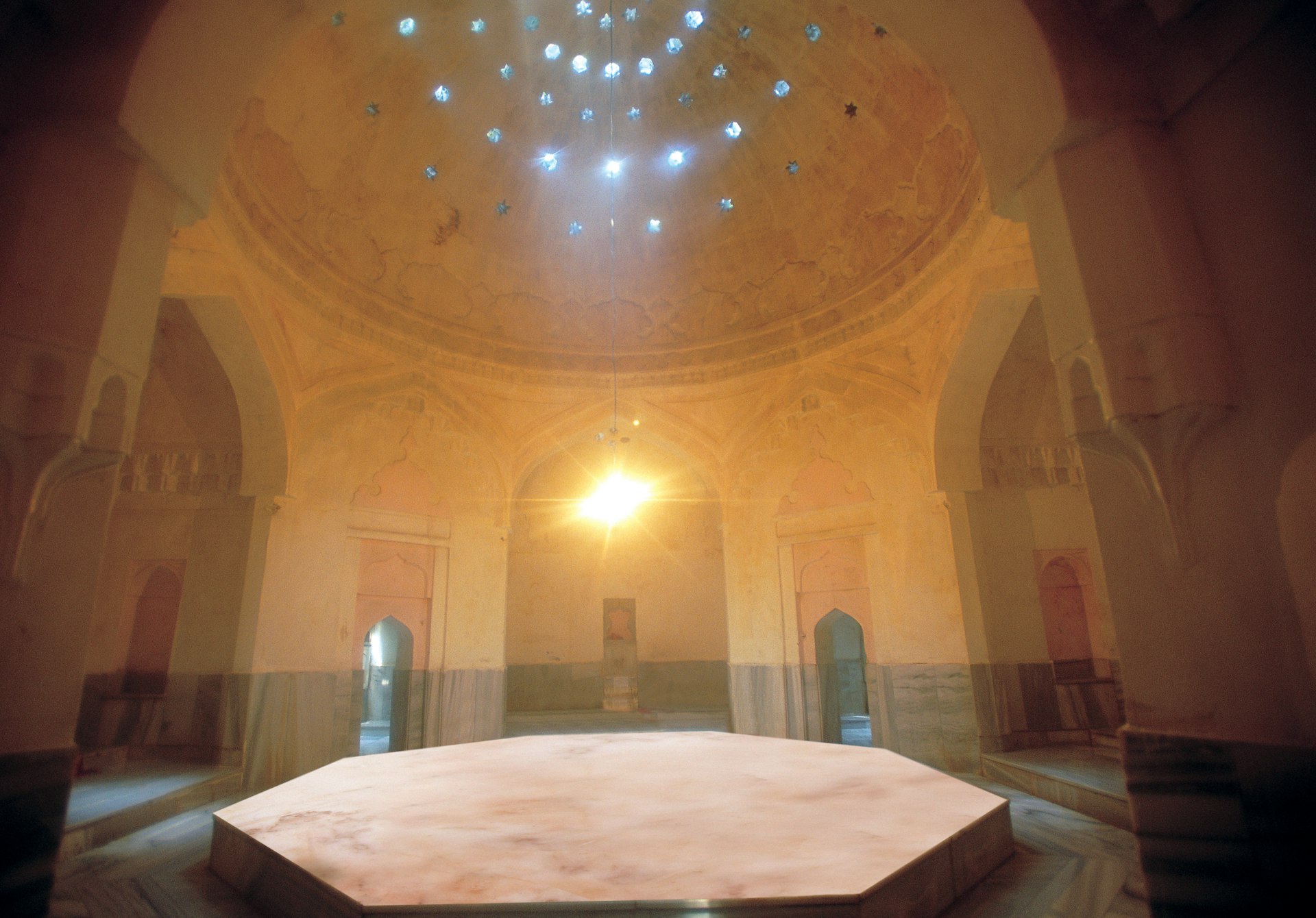
Surrender to the steam in a bath house
In life, there aren't too many opportunities to wander seminaked through a 16th-century Ottoman monument. But Istanbul's world-famous hamams offer just that: the chance to immerse yourself in history, architecture, warm water and soap suds all at the same time. A hamam treatment makes for a relaxing finale to a day spent pounding the city's pavements and gives a fascinating insight into the life and customs of Ottoman society. You can surrender to the steam at baths on both sides of the Galata Bridge: the Kılıç Ali Paşa Hamamı in Tophane and the Ayasofya Hürrem Sultan Hamamı in Sultanahmet are particularly stunning and luxurious.
Istanbul's bathhouses: a step-by-step guide
Hang out with the cool kids in Kadıköy
Riding a ferry across the Bosphorus is one of Istanbul’s great pleasures and the Asian-side neighborhood of Kadıköy is becoming a destination in itself, with hip cafes, bars, restaurants and boutiques frequented by a lively young crowd. Peruse the colorful produce market , hunt for street-art murals in the backstreets, visit the museum-home of Turkish rock giant Barış Manço or stroll the waterfront with an ice cream in hand. The sunset views from the shoreline are among the most spectacular in the city.

Sample the flavors of Istanbul
More than anything else, Istanbullus love to eat, and food is much more than mere fuel. Instead, it’s a celebration of community. Meals unfurl with great ceremony – they are joyful, boisterous and almost inevitably communal. The national cuisine has been refined over centuries and is treated more reverently than any museum collection in the country. That’s not to say it’s fussy, because what differentiates Turkish food from other national noshes is its rustic and honest base. The small meze dishes you’ll eat will be simple, the kebaps austere, the salads unstructured and the seafood unsauced. Flavors will explode in your mouth because ingredients are used in season.
Top 5 Istanbul cooking courses and food tours
Admire the architecture of Süleymaniye Mosque
Commissioned by the Ottoman sultan Süleyman I, known as “the Magnificent,” this 16th-century mosque has a fittingly grand perch atop one of the old city’s seven hills. The view from here is one of the finest in Istanbul, looking out over domes and rooftops to the confluence of the Bosphorus and Golden Horn waterways and beyond. With its elegant symmetry and soaring interior, the mosque itself is considered among the masterpieces of the great architect Mimar Sinan. The complex around it is inviting and serene, with tall trees, a grassy lawn and a rose-studded cemetery.
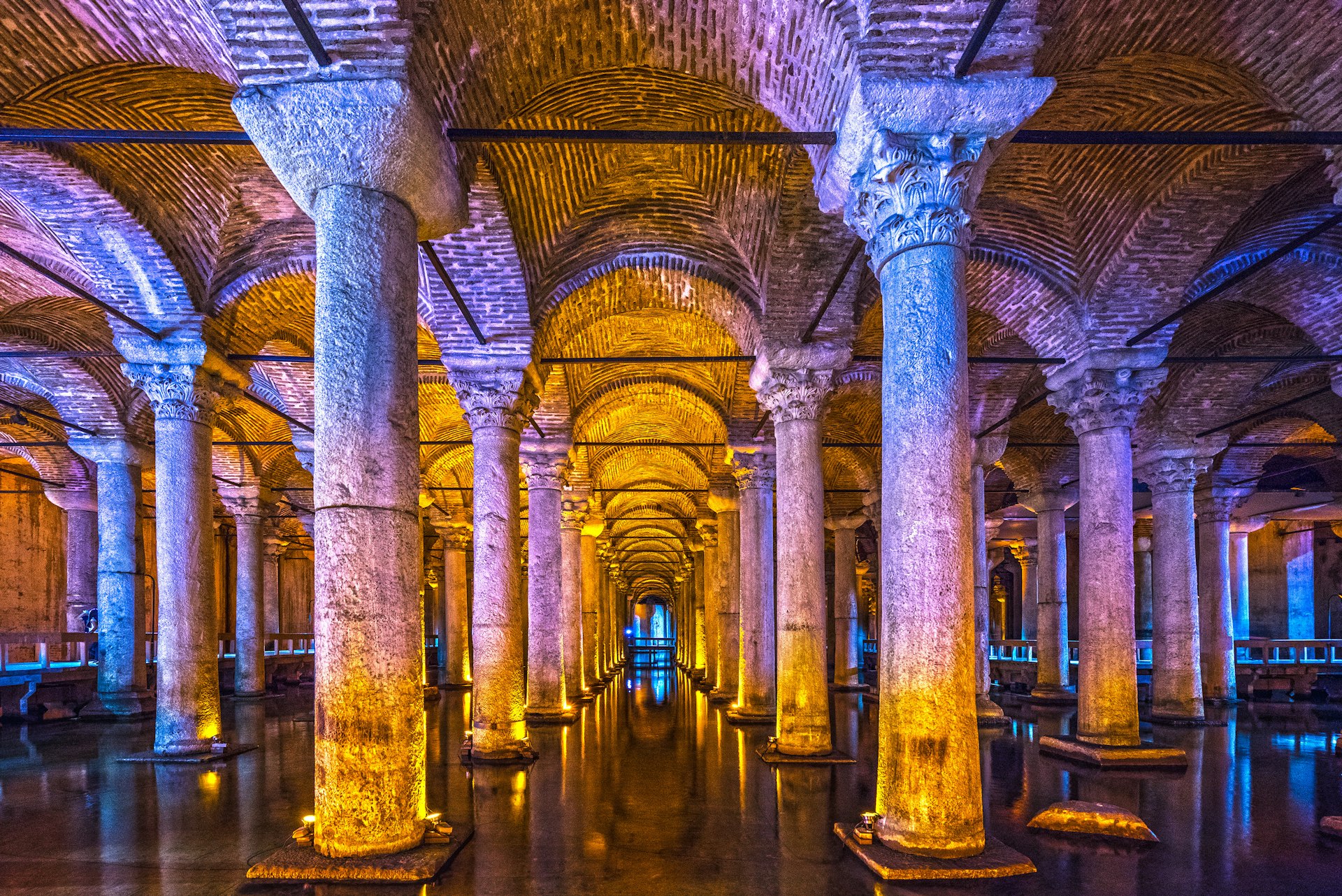
Go underground at the Basilica Cistern
When the Byzantine emperors decided to build something, they certainly didn't cut corners. The extraordinary subterranean Basilica Cistern , located opposite Aya Sofya, features a wildly atmospheric forest of columns (336 to be exact), vaulted brick ceilings, mysterious carved Medusa-head capitals and ghostly patrols of carp. A testament to the ambitious town planning and engineering expertise of the Byzantines, the cistern has played a starring role in innumerable motion pictures (remember From Russia with Love ?) and is now one of the city's best-loved tourist attractions.
Go tile-mad at the Blue Mosque
Officially named the Sultan Ahmed Mosque, after the early 17th-century Ottoman ruler Ahmed I, the Blue Mosque gets its better-known moniker from the color of the tens of thousands of İznik tiles that adorn its interior. With its enormous courtyard, grand prayer hall and six minarets (an unprecedented number for a mosque when it was constructed) this is a building made to impress – and to rival the Aya Sofya, which sits directly opposite across a landscaped square.

Ogle the opulence of Dolmabahçe Palace
Weighing in at nearly 10,000 pounds, the crystal chandelier hanging over the Ceremonial Hall of Dolmabahçe Palace exemplifies the opulence of this royal residence commissioned in the mid-19th century by Sultan Abdül Mecit I. It’s a glorious mishmash of styles and materials, with ceilings gilded with thousands of pounds of gold, marble floors, crystal bannisters and bearskin rugs. The Bosphorus views are just as dazzling as the decor.
Let your feet be your guide
Istanbul’s marvelous sights could keep a visitor busy for months, but it’s worth taking some time to explore its myriad neighborhoods as well. Though the city is sprawling, its central districts are walkable and reward wandering, with lively street life and distinct identities. Follow the film crews and Instagram influencers through shabby-chic Fener and Balat’s historical lanes ; sip black tea with a Golden Horn view at the Pierre Loti Café , perched above the leafy cemeteries and holy tomb complexes or Eyüp; or watch fishermen cast their lines from the Bosphorus village of Arnavutköy.
You might also like: A hotel in Istanbul has the world's first baklava butler The best shops you can only find in Istanbul Local's guide to Istanbul
This article was first published Feb 10, 2011 and updated Nov 1, 2021.
Explore related stories

Mar 20, 2022 • 7 min read
Istanbul has always lured traders and shoppers. Here's our guide to shopping in this dazzling city, from the Grand Bazaar to the boutiques of Nişantaşı.

Feb 1, 2022 • 7 min read

Jan 3, 2022 • 8 min read

Dec 13, 2021 • 6 min read
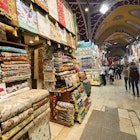
Dec 9, 2019 • 4 min read

Nov 5, 2019 • 5 min read

Feb 27, 2019 • 8 min read

Jan 2, 2019 • 7 min read

Jun 14, 2018 • 7 min read

Aug 17, 2015 • 6 min read

20 Unmissable Things To Do In Istanbul
Istanbul, the crossroads of Europe and Asia, is one of the world’s most vibrant and dynamic cities. With a rich history, stunning architecture, and a thriving cultural scene, Istanbul offers an unparalleled travel experience.
As the former capital of both the Byzantine and Ottoman empires, Istanbul is a treasure trove of incredible architecture, fascinating history, and unique experiences that must be on your Turkey bucket list.
Whether you’re a first-time visitor or a seasoned traveler, there are a plethora of experiences that you simply can’t miss in Istanbul. As the starting location for Silk Road Tours, I’ve been lucky enough to visit Istanbul multiple times and I always find something new to do with every visit.
In this article, we’ll take a look at some of the must-have experiences in Istanbul, Turkey.
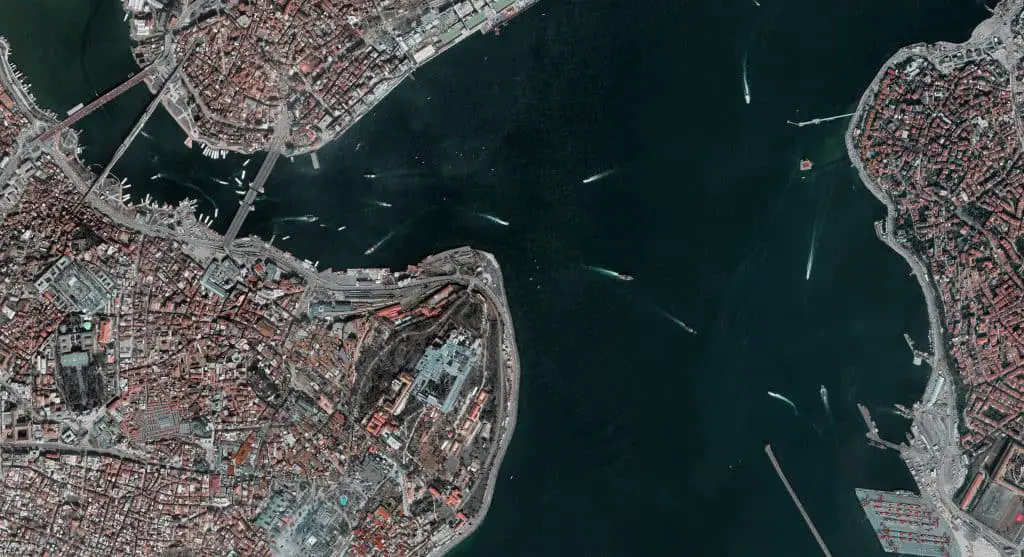
Disclaimer: Some links in this article are affiliate links, which means that if you purchase through them I receive a small commission, at no extra cost to you. This helps cover the cost of running this blog. Thanks for your support!
The Best Sights To See In Istanbul
1. the hagia sofia (aya sofya).
One of the most iconic landmarks in Istanbul, the Hagia Sophia offers a unique blend of Christian and Islamic architecture and is a must-visit for any traveler.
Often considered one of the most beautiful buildings in the world, the Hagia Sophia is a stunning piece of architecture that dates back to the 6th century. This former cathedral, mosque, museum, and now mosque once again, is a fabulous attraction in Istanbul. The magnificent dome, the intricate mosaics, and the stunning views of the city from its terrace make it one of the most popular tourist destinations in Istanbul.
As the Hagia Sofia is now a working Mosque, there is no entrance fee required. All visitors are welcome outside of prayer times which take place 5 times every day. On Friday, visitors are welcome after 1:30pm.
Read Next: The most beautiful places to visit in Turkey
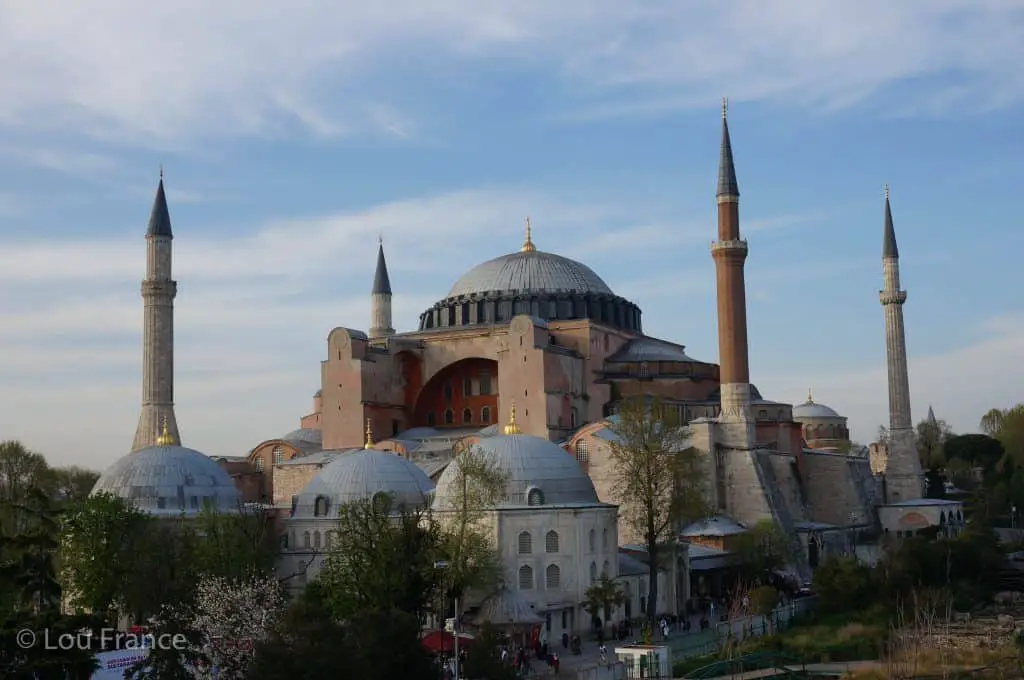
2. The Blue Mosque (Sultanahmet Camii)
The Sultanahmet Camii, also known as the Blue Mosque, is one of the most stunning examples of Ottoman architecture. Its beautiful blue tiles, elegant minarets, and ornate interiors make it a must-see for any visitor to Istanbul.
The Blue Mosque is built on top of the Great Palace of the Byzantine emperors and gets its name from the blue tiles that decorate the domed ceiling.
The mosque is still an active place of worship, so as always be respectful of the dress code and visiting hours (the mosque closes for 90 minutes during prayer times).
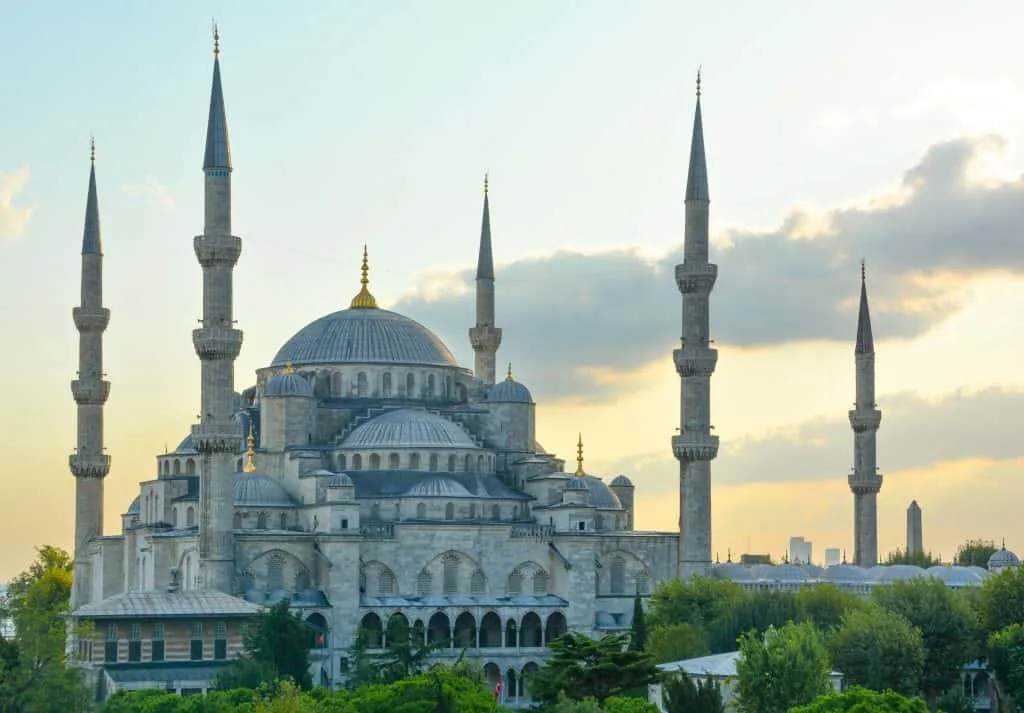
3. The Grand Bazaar
The Grand Bazaar is one of the largest covered markets in the world, with more than 5000 stores it’s a true shopping paradise. This historic market has been in operation since the 15th century and offers a wide range of goods, from spices and textiles to jewellery and souvenirs.
The Grand bazaar is not as authentic as bazaars in Eastern Turkey such as Sanliurfa or Mardin, however it is a real sensory overload and no trip to Istanbul would be complete without a visit to this labyrinth of narrow alleyways.
Haggling is expected and welcomed, so be ready to barter for a good deal.
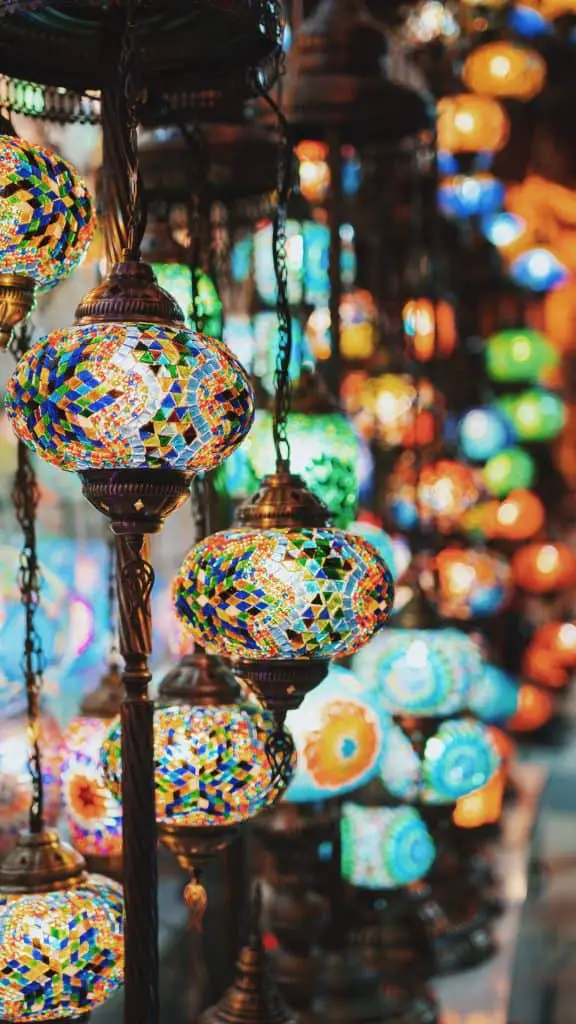
4. The Basilica Cistern
The Basilica Cistern is one of Istanbul’s (not so) hidden gems. This ancient underground cistern was built in the 6th century to hold the city’s water supply and is now a fascinating and unique attraction in the city.
Visitors can walk through the eerie chambers and admire the stunning columns that support the cistern. At the base of the columns are large, carved medusa faces which are curiously stacked side-ways or up-side-down, and only add to the spooky atmosphere.
No tripods are permitted in the Basilica or many of the other sites in Istanbul so it’s best to leave them in the hotel room. Most phones do a decent job at capturing images in this dark space.
Read Next: Discover the top hidden gems of Turkey
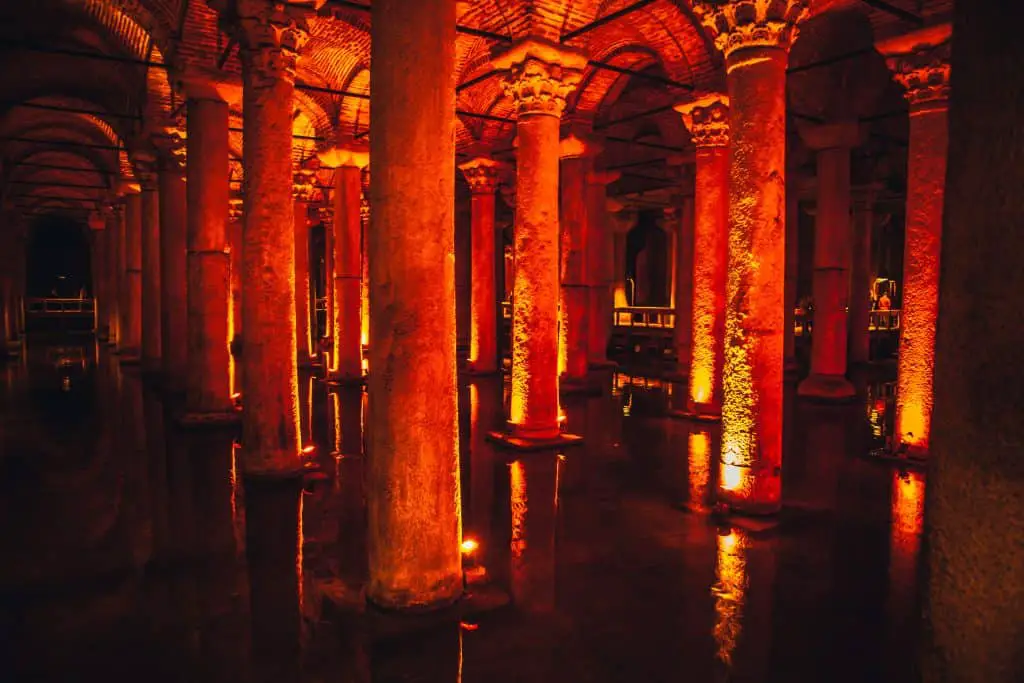
5. The Topkapi Palace
Once the residence of the Ottoman Sultans, the Topkapi Palace is now a museum that showcases the opulence and grandeur of the Ottoman Empire. From the ornate throne room to the harem quarters, the palace is filled with fascinating exhibits and intricate details.
Be sure to visit the Treasury section to see the magnificent collections of jewellery and artefacts. Topkapi Palace is another iconic site in Istanbul and one that’s not to be missed.

6. Galata Tower
Galata Tower is a medieval stone tower that offers panoramic views over Istanbul and the Bosphorus Strait. Located on the North Bank of the Golden Horn, up until the 1960’s it acted as a watchtower for city fires, however today it operates as a tourist attraction.
Visitors can climb to the top of the tower for a breathtaking view of the city, or simply enjoy a meal or drink at one of the tower’s many cafes and restaurants.
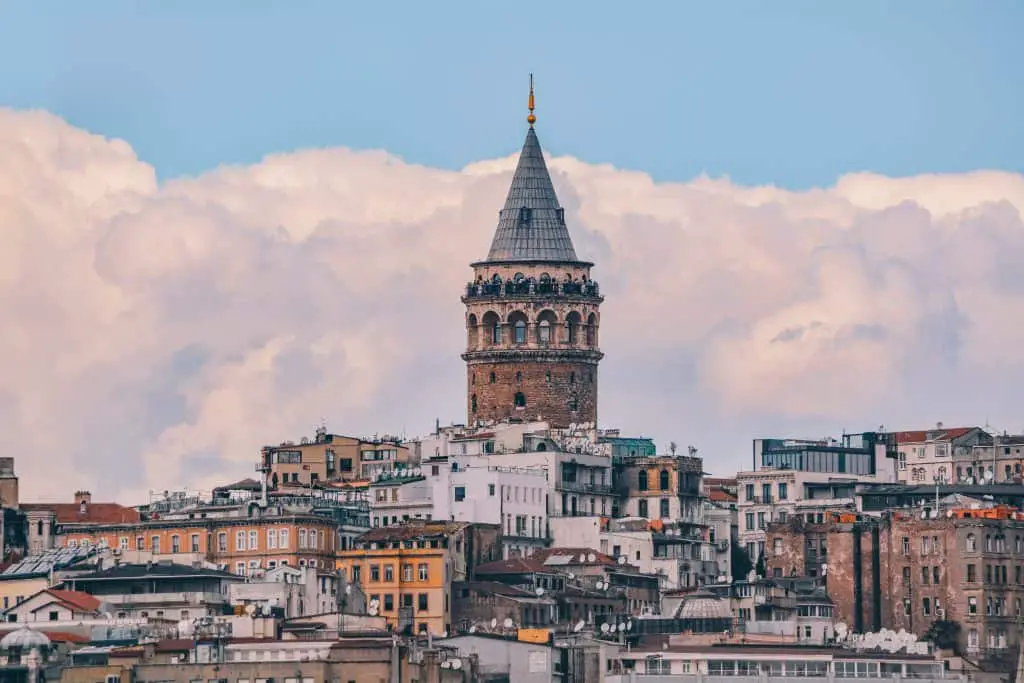
7. Sultanahmet
The Sultanahmet neighbourhood is the heart of Istanbul’s Old City and is a must-visit destination for anyone interested in the city’s rich history. This area is home to some of Istanbul’s most iconic landmarks, such as the Blue Mosque, the Hagia Sophia, and Topkapi Palace.
Take a leisurely stroll through the narrow streets, dine on delicious Turkish cuisine and soak in the atmosphere of this historic neighbourhood.
Top Istanbul Tours
- Luxury Yacht Bosphorus Sunset Cruise $
- Full day Classic Istanbul Tour $$
- Taste of Two Continents Food Tour $$$
8. Istikal Street (Istikal Caddesi)
Istiklal Street is the main shopping street in Istanbul, and it’s a must-visit for anyone looking for some serious hustle and bustle. This street is lined with elegant boutiques, vintage shops, and quaint cafes, making it the perfect place to people-watch and take in the city’s vibrant energy.
At the end of this 1.4km long pedestrian walkway is Taksim Square. Situated in the district of Beyoglu, Taksim Square is the meeting point for protests, demonstrations and celebrations. Here, you can view the monument of the republic, Taksim Mosque and dine at a vast selection of restaurants.
With multiple nightclubs in its arsenal, Istikal Street and Taksim are great areas to enjoy Istanbul at night.
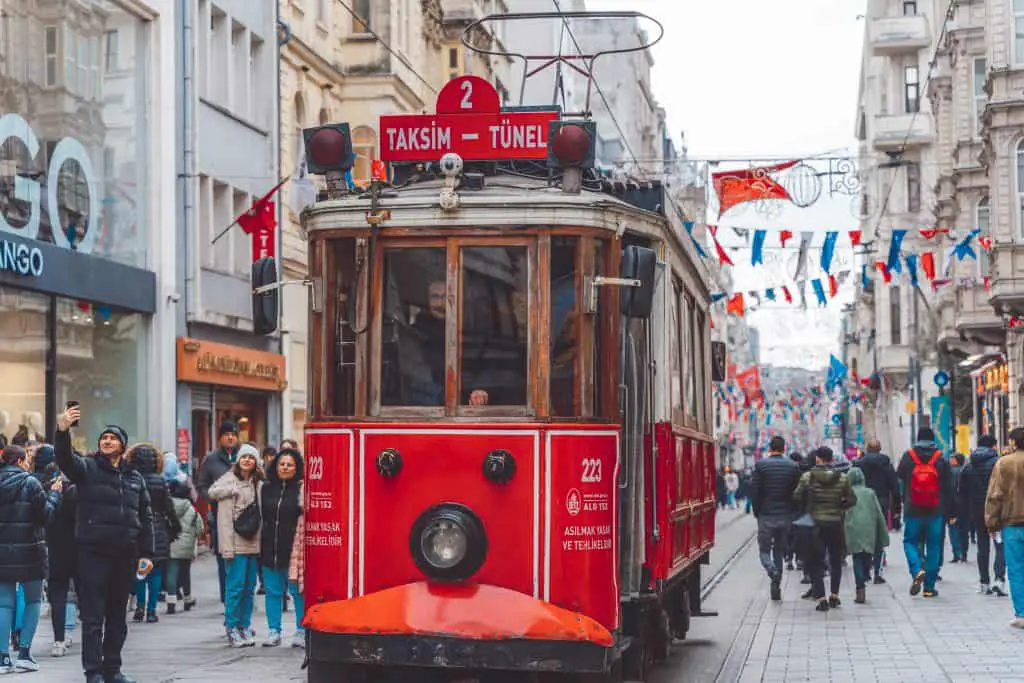
9. Walk the Galata Bridge
The Galata Bridge is an iron bridge that spans the Golden Horn Bay. It has long acted as a link between the old town of Istanbul and the more modern neighbourhoods of Beyoglu. The current bridge is the fifth incarnation of the bridge and it’s usually lined with fisherman looking for their daily catch.
Walking towards the old city, the bridge offers great views over Sultanahmet.
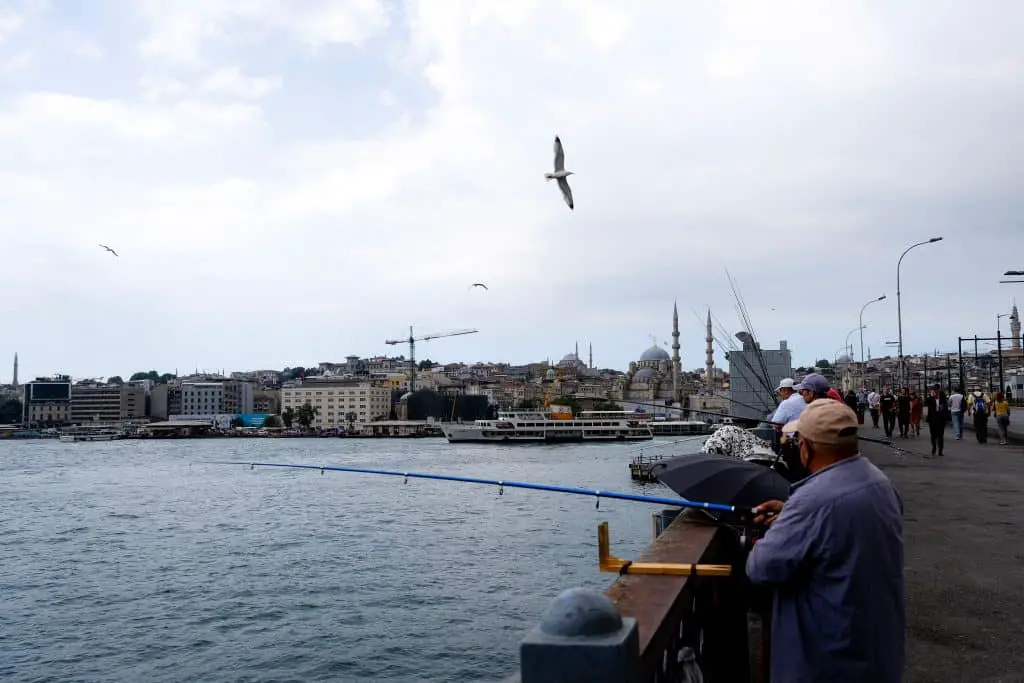
10. Cruise the Bosphorus
The Bosphorus is a stretch of water that separates Europe from Asia, and a cruise on this waterway is one of the most memorable experiences you can have in Istanbul. Take a leisurely boat tour and admire the stunning views of the city, including the impressive Ottoman palaces and modern skyscrapers.
There are multiple ways to enjoy a boat trip on the Bosphorus, from a basic ferry ride to a luxury yacht cruise. Here are some of the best Bosphorus boat trips available.

11. Suleymaniye Mosque
The Suleymaniye Mosque is Istanbul’s largest and arguably most impressive mosque, and is considered one of the finest examples of Ottoman mosque architecture. Visitors can admire the mosque’s stunning interior, with its ornate tiles, intricate carvings, and towering domes.
Located on the Third Hill of Istanbul, Suleymaniye Mosque offers fabulous views over the city. The mosque’s surrounding gardens and courtyards are also well worth a visit, offering visitors a peaceful and serene escape from the hustle and bustle of the city.
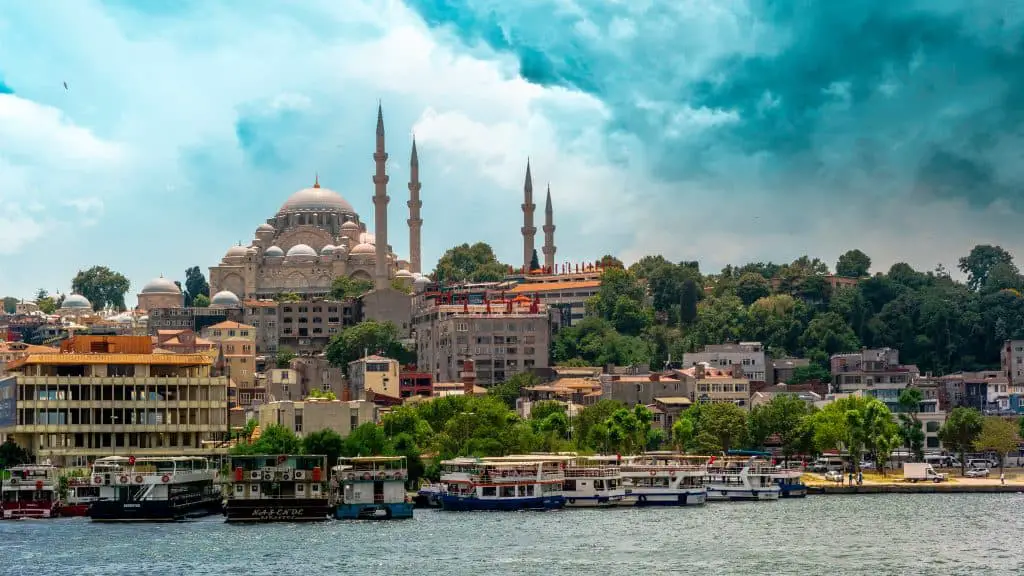
12. Archaeological Museums
The Istanbul Archaeological Museums are a complex of museums that showcase the complex history and culture of the city and its surrounding regions. Visitors can see collections of Ottoman ceramics, Byzantine mosaics, and Roman sculptures, as well as learn about the city’s ancient civilizations and civilizations of Anatolia.
13. The Dolmabahçe Palace
The Dolmabahçe Palace is a stunning palace that served as the primary residence of the Ottoman sultans in the 19th century. With its ornate interiors, magnificent chandeliers, and beautiful gardens, the palace is a true masterpiece of Ottoman architecture and design.
The Palace is divided into two areas, the Selamik and Harem, each charging an entrance fee. Visitors can tour the palace’s many grand halls and salons, and get a glimpse into the lives of the Ottoman sultans.
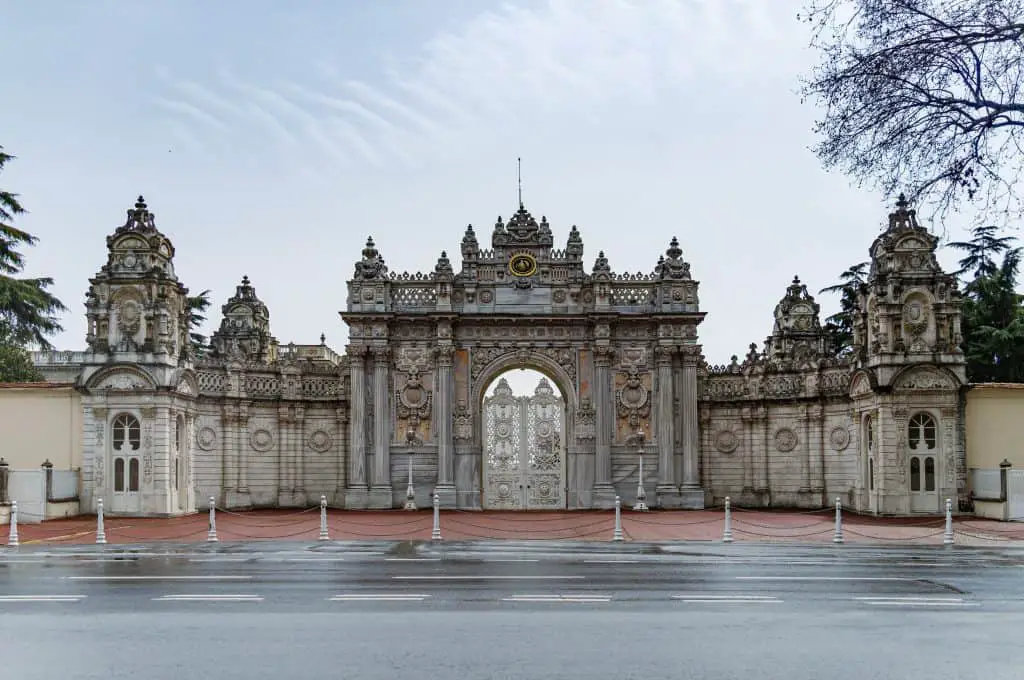
14. Enjoy a Turkish Bath
A traditional Turkish bath, or hammam, is a unique experience that should not be missed. These steam baths are a great way to relax and rejuvenate after a long day of exploring the city. Many of the hammams in Istanbul date back to the Ottoman Empire and are adorned with intricate details and stunning mosaics.
This traditional bathhouse is a place where you can relax, rejuvenate, and experience the city’s culture in a unique way. Try a traditional hammam experience, complete with a massage, scrub, and steam room.
15. Walk the Rainbow Steps
In Sali Pazari Yokusu, between the districts of Findikli and Cihangir you can find the Rainbow Steps of Istanbul. This colourful stairway was painted by Huseyin Cetinel, not in an act of demonstration or activism, but for no other reason than to make people smile.
Huseyin spent $800 and four days painting the steps, which inspired people all over Turkey to paint staircases and walkways in vibrant rainbow colours. You’ll also find more colourful steps like these in the quirky Istanbul neighbourhood of Balat .
The original rainbow steps fell into disrepair after a few years, so in 2015 they were replaced by new stairs with permanent rainbow tiles. There are in fact, several sets of rainbow steps in this area on adjacent streets which get repainted periodically.
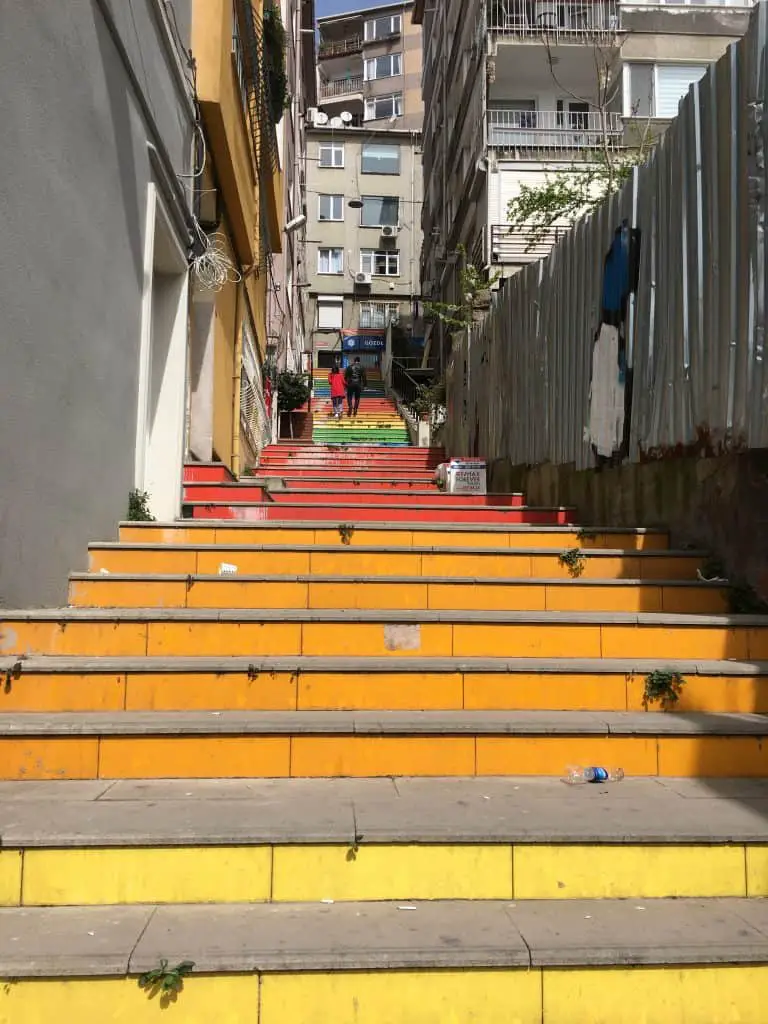
16. Indulge in Turkish Cuisine
Turkish cuisine is a unique blend of flavours and ingredients, and is a must-try for anyone visiting Istanbul. From kebabs to baklava, there is no shortage of delicious food to sample in the city. Some of the most popular dishes to try include doner kebab, manti (Turkish dumplings), and pide (Turkish pizza).
Turkish Delights are a must-try when in Turkey. These sweet treats, which originate in the Gastronomy city of Gaziantep , come in a variety of flavours and are typically made with a mixture of sugar, nuts, and rosewater. The perfect way to end a meal, or just as a sweet snack, Turkish Delights are a staple in Turkish cuisine and should not be missed.
Also make sure to try Turkish tea which a staple beverage in the country. Or for the coffee lovers, there is of course, plenty of Turkish coffee too.
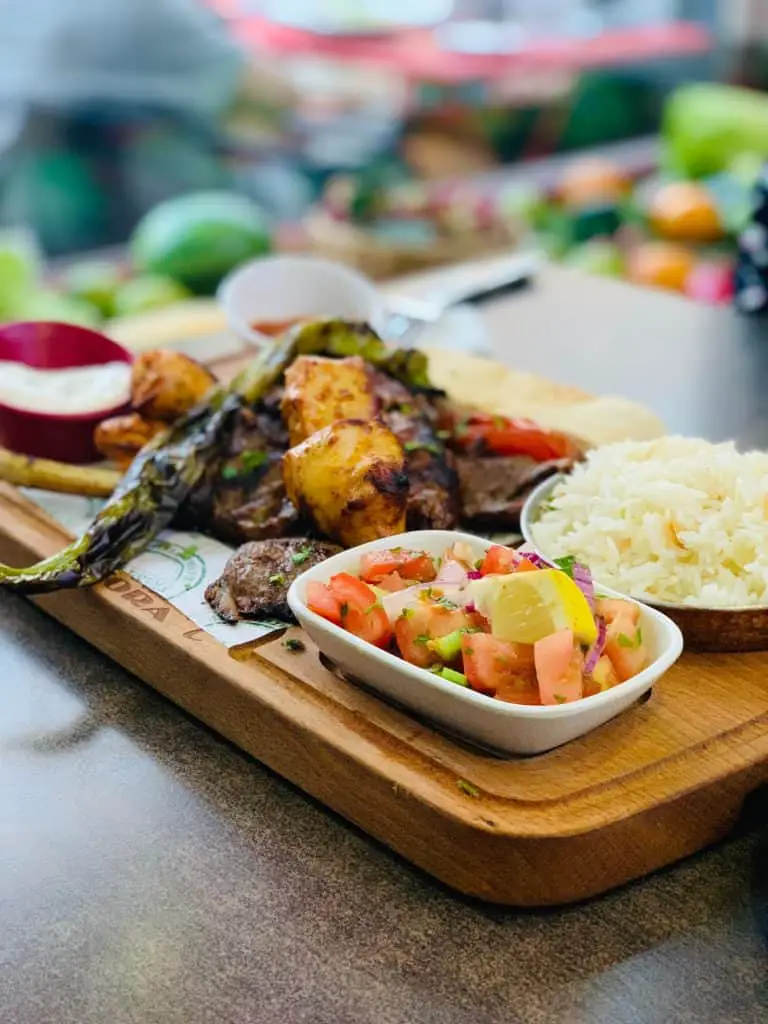
17. Istanbul Modern Art Museum
The Istanbul Modern Art Museum is a contemporary art museum that showcases the best of Turkish and international art. Visitors can see exhibitions of modern and contemporary art, as well as attend workshops, lectures, and cultural events.
The museum is housed in a stunning building on the banks of the Bosphorus, offering visitors breathtaking views of the city and its surroundings.
18. View a Whirling Dervish Ceremony
Another cultural must-do whilst in Istanbul is to witness a Whirling Dervish Ceremony. The Whirling Dervishes are a branch of Sufi Muslims known for their trance-like spinning dances. These are performed during worshipping ceremonies known as Sema.
The lesser-known Turkish city of Konya is the Turkish home of the Whirling Dervish however a Sema can be watched at the Galati Mevlevi Museum in Istanbul. Performances take place every Sunday and be sure to book your tickets in advance as numbers are limited.
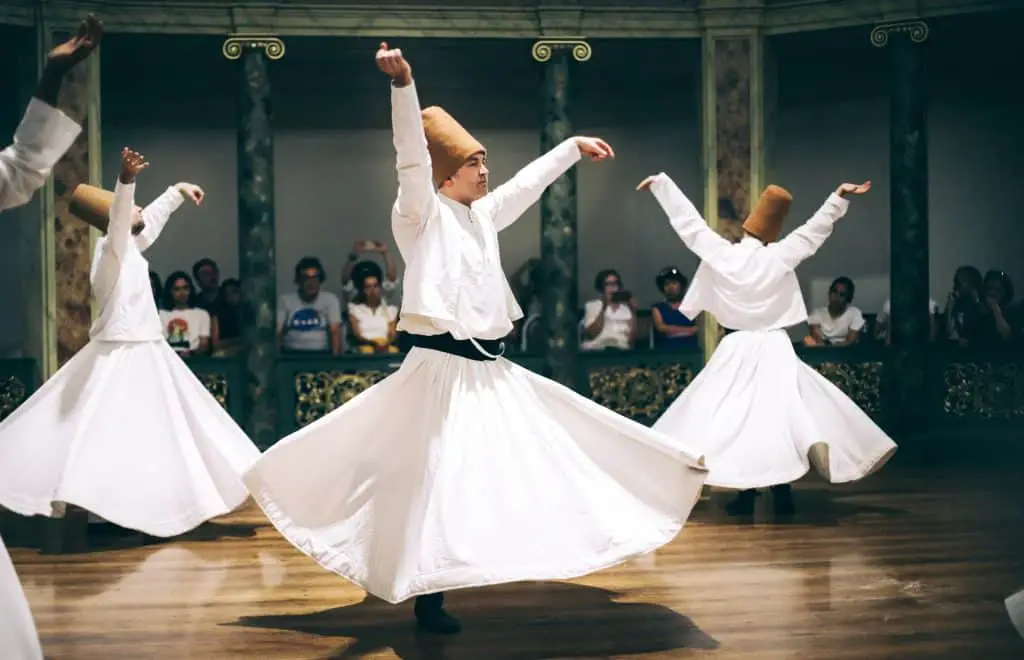
19. Chora Church (Kariye Mosque)
The Chora Church is one of the best-preserved examples of Byzantine architecture in Istanbul, and its stunning frescoes and mosaics are not to be missed. Built in the 11th century, the church was converted into a mosque in the 16th century, then to a museum and in 2022 it was re-established as a mosque.
2023 Update : Renovations are currently taking place at the mosque and its hoped these will be finished by the end of 2023.
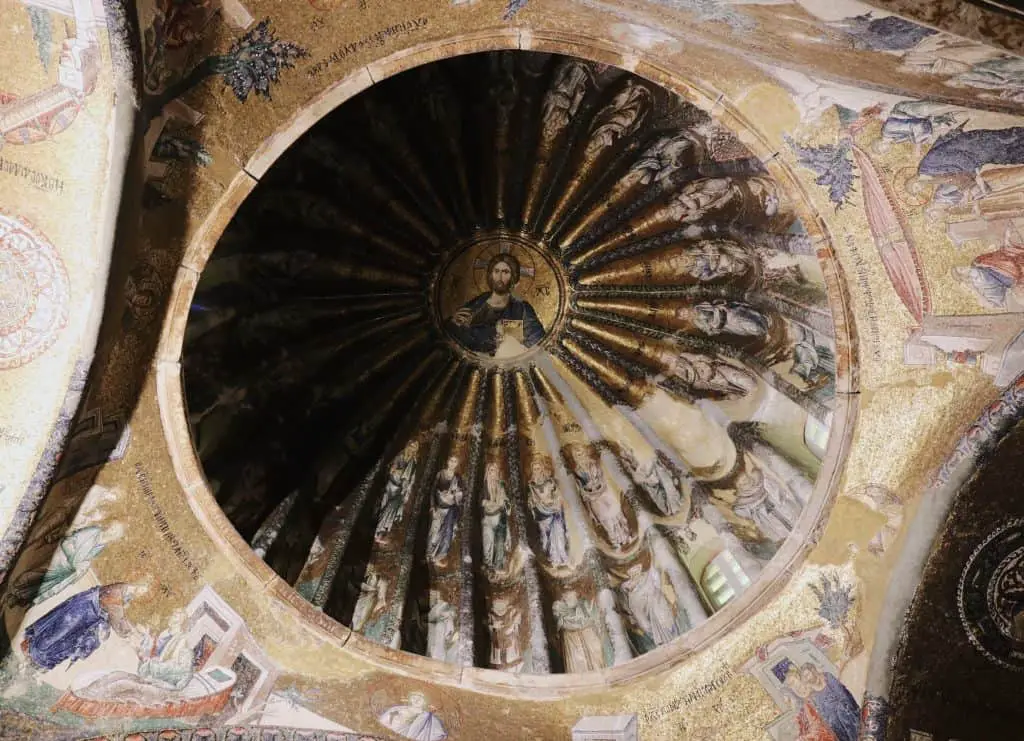
20. Enjoy Sunset at a Rooftop Restaurant
There are several restaurants and bars around Istanbul that take full advance of their rooftop terraces. These restaurants are some of the best places to enjoy sunset over the city. I like the Severn Hills Hotel which has the best views over the Hagia Sofia along with views over the Bosphorus. You’ll need to book your table far in advance if you wish to be seated in the prime position.
A more budget friendly alternative is Snog Roof Bar which offers rooftop drinks with views of the Galata Tower.

How To Get To Istanbul
Istanbul is a world transport hub, so getting to Istanbul is very easy by air. Most international airlines fly in and out of the newly built, Istanbul Airport (IST).
Domestic flights to Istanbul from popular tourist cities around Turkey, such as Antalya , Izmir, Goreme ( Cappadocia ) and Fethiye, are readily available.
Airport transfers are usually offered by your hotel, but if not you can book an airport transfer here .
Places To Stay in Istanbul
Sultanahmet.
If you want to stay in the heart of Istanbul with the major sites situated right on your doorstep, then Sultanahmet district is the place for you.
A good budget option is the Antique Hostel . The hostel has a great terrace for enjoying views of the Bosphorus and is in a perfect central location in Sultanahmet.
For something more luxurious try the White House Hotel . The rooms are exceptional and the terrace views overlooking Sultanahmet are amazing.
If you’d prefer to be at the heart of Istanbul’s nightlife, then base yourself near Taksim.
For a modern, boutique hotel near Taksim Square try the Trinity Hotel Taksim, which is offers good value for money and has a delightful rooftop terrace bar.
Getting Around Istanbul
Getting around Istanbul is very easy thanks mainly to the tramway lines and metro system, but since sites are located so close to each other, often the best way to get around is by foot.
There really is no need to have a car in Istanbul and driving (and parking), especially in Sultanahmet, can be challenging. If you plan on starting a Turkey road trip from Istanbul , be sure not to pick your car up until the day you leave the city. Also, check out my top tips for driving in Turkey before you set off.
If you are looking for the best car rental service, check out LocalRent . They provide the best deals for your trip to Turkey.
Istanbul Museum Pass
The Istanbul Museum Pass allows holders to skip the lines and can potentially save some money. It provides access to 12 museums, which is where the saving comes in. If you only plan to visit a few of the museums in Istanbul then it doesn’t provide much of a discount. The card is valid for 5 days.
Don’t Forget Your Travel Insurance!
For the best deals on travel insurance, check out Safety Wing.
Final Thoughts On The Best Things To Do In Istanbul
Istanbul is a city that is steeped in history and culture, and there is never a shortage of things to do. From visiting ancient landmarks to exploring vibrant bazaars, there is something for everyone in this incredible city.
So, what are you waiting for? Pack your bags and head to Istanbul for an unforgettable travel adventure.
Louise is an Adventure Tour Guide & Mountain Leader from South Wales. Through working as a tour guide and snowboard instructor, she has spent the last 15 years travelling Asia, Africa and the Americas. Louise is a published photographer and is currently based in the UK.
Recent Posts
Discover All The Best Things To Do On The Turquoise Coast Of Turkey
Turkey's Turquoise Coast, also known as the Turkish Riviera (Türk Rivierası), is a gem nestled between the azure waters of the Mediterranean Sea and the rugged Taurus Mountains. Stretching 600...
The Best eFoiling Destinations For Beginners
Imagine gliding effortlessly over the water, powered by the wind and waves, but with a futuristic twist. Welcome to the world of eFoiling - a dynamic blend of traditional water sports and...

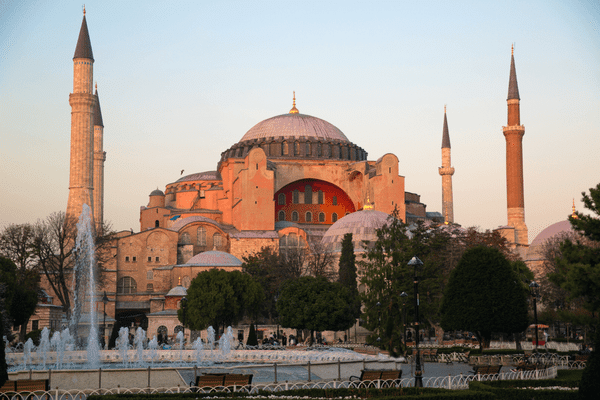
Places to Visit in Istanbul
Istanbul has a storyteller's personality, revealing its people, beauty, architecture, food, and culture one by one. The historical beauty of Hagia Sophia, the attractive architecture of the Blue Mosque, and splendid shorelines with avant-garde restaurants such as Ulus 29 and Mikla overlooking immaculate scenic vistas are just a few of Istanbul's attractions.
There are a plethora of places to see in Istanbul, some of which include the Bosphorus strait which is a perfect line of fusion because it separates the two continents. Continue going down Istiklal Avenue and into the Grand Bazaar to enjoy the local shopping experience. Climb all the way to the top of Galata and Maiden Tower to take in the city's breathtaking panorama. Explore the enchanting components of the Blue Mosque and Topkapi Palace, as well as the Basilica Cistern's splendor. With each passing day, Istanbul city will continue to fascinate you with new adventures. Istanbul will give you the fun of your life, from drinking Turkish chai and resting in the Hammam to enjoying a hot air balloon tour of the city, cruising the Bosphorus, and cycling through the Prince Islands.
Because Istanbul is topographically diversified and experiences distinct climates in different sections of the city, tourism is surely at its peak most of the year. The months of March to May and September to November are the finest times to visit Istanbul because of the pleasant weather. During the summer, temperatures are extremely hot with considerable humidity, and during the winter, temperatures can drop to - 15 degrees.
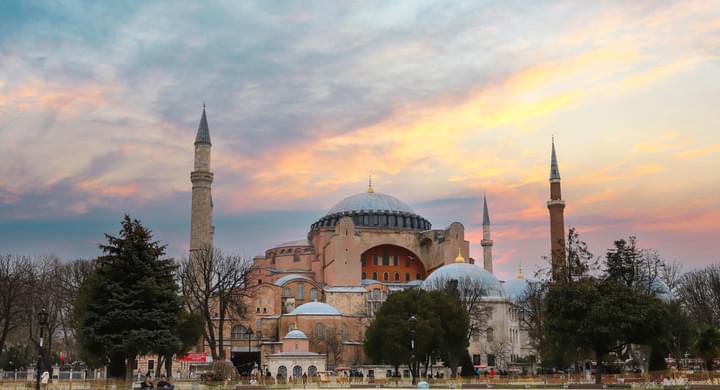
- Topping the list of places to visit in Istanbul, Hagia Sophia is a significant Byzantine construction in Istanbul and one of the world's great monuments.
- It is also known as the Church of the Holy Wisdom or the Church of the Divine Wisdom.
- The Byzantine emperor Justinian I looked after the construction of the church in the 6th century.
- It has been turned into a mosque, then a museum, and at last a mosque again over the years.
Checkout Now: Hagia Sophia Museum
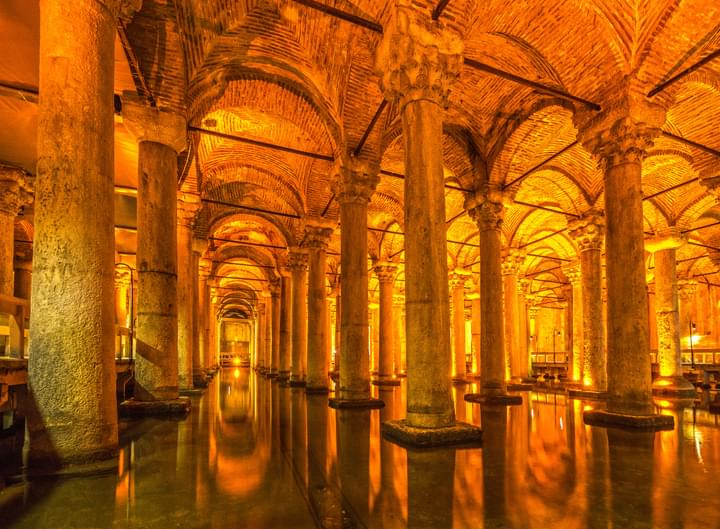
- The Basilica Cistern is one of Istanbul's largest and most visited cisterns.
- Basilica Cistern is the largest open to the public among the hundreds of cisterns.
- It is situated on a renowned peninsula, which also houses Hagia Sophia and the Blue Mosque.
- The structure was built in the year 542 by the famed Byzantine Emperor Justinian I to supply the water needs of the palaces.
- The Basilica Cistern is a well-known historical attraction that attracts millions of visitors each year. It measures about 140 meters in length and 70 meters in width, with a total surface of 9,800 square meters. The big cistern is made up of 336 columns that are 9 meters long and 4.8 meters apart.
Also Recommended: Basilica Cistern & Hagia Sophia Combo Ticket
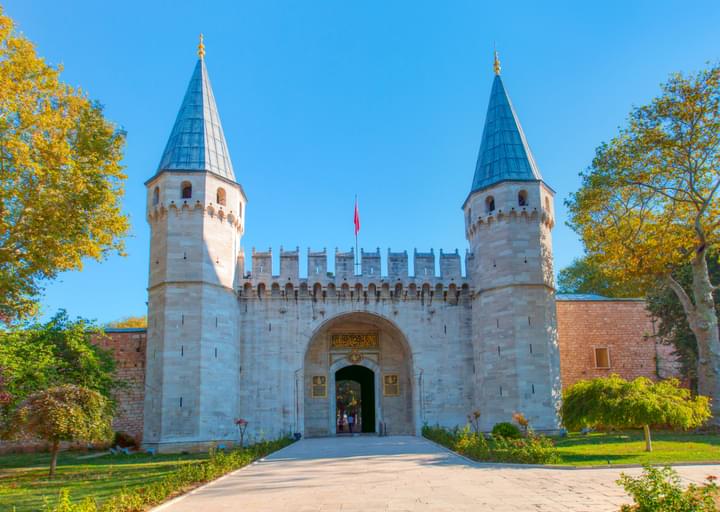
- The Topkapi Palace Museum is one of the most prominent tourist attractions in Istanbul and houses the Ottoman Empire's imperial collections as well as a huge library of books and manuscripts.
- It is housed in a palace complex that served as the imperial Ottoman court's administrative center and residence from from 1478 to 1856. It opened as a museum in 1924, one year after the Republic of Turkey was established.
- The Topkapi Palace Museum is noteworthy not just for its architecture and collections, but also for the Ottoman Empire's history and culture that it commemorates.
Also Know: Plan Your Visit To Topkapi Palace
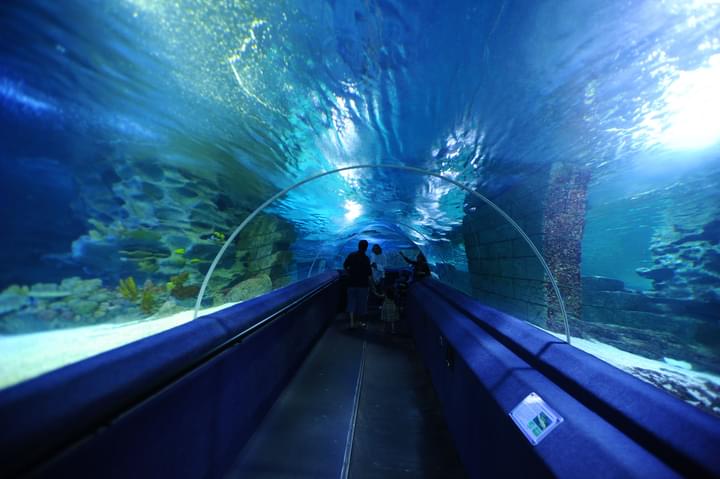
Istanbul SEA LIFE Aquarium is considered to be one of Europe's largest aquariums, with over 15,000 aquatic animals distributed in 21 zones.
A stingray display, a touchpool, a 60-strong school of sharks, and a sea turtle hospital with the world's largest turtle weighing 440 pounds are among the highlights (200 kilograms).
At Sea Life Aquarium, there's so much to see, learn, and do! Meet the world's greatest collection of sharks, as well as whales, sea turtles, and a variety of other remarkable sea creatures.
In the interactive rock pools, you may even touch starfish and crabs. You'll feel like you're under the sea as you go through the 83-meter-long underwater Ocean Tunnel and enjoy the massive Sea Bed display. Life under the water will astound you!
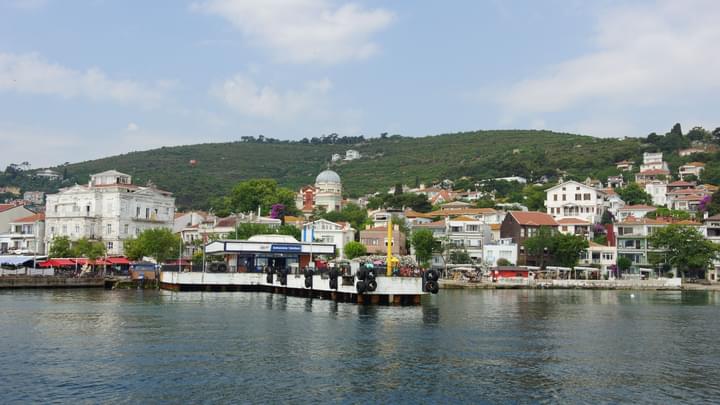
The Princes' Islands are a group of nine lovely islands off the Asian shore of Istanbul in the Marmara Sea.
Only four of the nine islands are well-known and operational, and thousands of passengers are transported there every day by fast and regular ferries from Turkey's neighboring towns.
Buyukada, Heybeliada, Burgazada, and Kinaliada are the names of the renowned four islands.
The Princes' Islands, which were once used as a place of exile, are now one of the most popular tourist destinations for a relaxing and serene break from the hustle and bustle of city life. Because vehicles are prohibited, it has become one of the most tranquil weekend resorts.

Start your visit with a factory tour to learn how LEGO bricks are created, or go to the 4D theater for a multi-sensory film experience.
Learn from experienced builders at the Creative Workshop, then put your newfound talents to the test with plenty of LEGO bricks.
Alternatively, you can dive right in and put your talents to the test with exhibitions like LEGO Racers: Build & Test and the Kingdom Quest laser ride.
MINILAND, an exhibition of sites from Istanbul and throughout the world created from more than one million LEGO bricks, is a great source of inspiration.
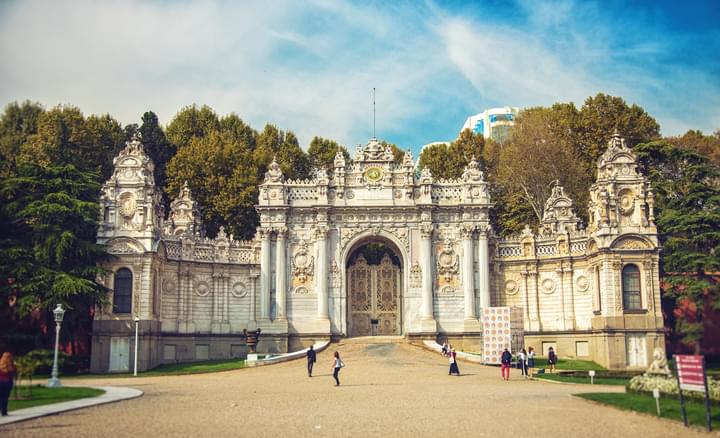
- Dolmabahce Palace is a luxurious residence and a must-see place to see in Istanbul, located on the Bosphorus Strait's scenic European shore.
- This magnificent royal estate is the epitome of Ottoman architectural intrigue and is regarded as the world's most opulent mansion.
- Dolmabahce Palace, undoubtedly one of Istanbul's most appealing tourist attractions, boldly displays its historic majesty through structural finishing embellished with a plethora of precious gemstones, gold, and everything vivid that adds attractiveness to every nook and cranny of the structure.
Recommended Read: Dolmabahce Palace Inside

Madame Tussauds, the world's most famous wax museum, has opened in Istanbul, with a 250-year history!
Mustafa Kemal Atatürk, Rumi, Suleiman the Magnificent, Messi, Rihanna, and Muhammad Ali are among the approximately 60 popular individuals from Turkey's and the world's history, culture, art, sport, science, and politics shown at Madame Tussauds Istanbul.
You may get your tickets now to participate in this unique, interactive event, which allows you to see your favorite celebrities together, touch and embrace them, and take photos with them!
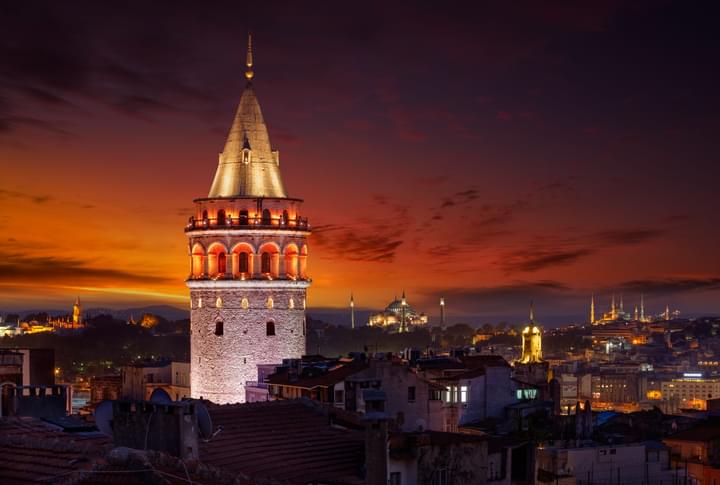
- The Galata Tower , also known as Christea Turris by the Genoese, is a 1348-built medieval tower in Istanbul's Galata Quarter. It is a cylindrical tower with a high cone crown that provides a 360-degree perspective over Istanbul's historic center.
- The skyscraper has nine storeys and is 66.90 meters tall, making it the city's highest structure at the time of its construction.
- It is the ideal site to see Istanbul's peninsula and surroundings from a different perspective, as it is close to the main intersection of the Bosphorus and the Golden Horn.
Book Now: Galata Tower Tickets

- The Blue Mosque also known as Sultan Ahmed Mosque, is a popular tourist attraction in Istanbul, recognised for its beautiful architecture.
- At night, the mosque gleams like a blue diamond, thanks to the lovely reflections created by the falling lights from the minarets.
- Hand-painted blue tiles adorn the interiors, which are a lovely mix of Turkish (Ottoman) empire, Byzantine empire, and traditional Islamic architecture.
- The foundation location of the mosque is the Byzantine emperor's palace, which is located in front of the famous museum Hagia Sophia and Sultanahmet square.
You Can Also Checkout: Blue Mosque & Hagia Sophia Small-Group Tour
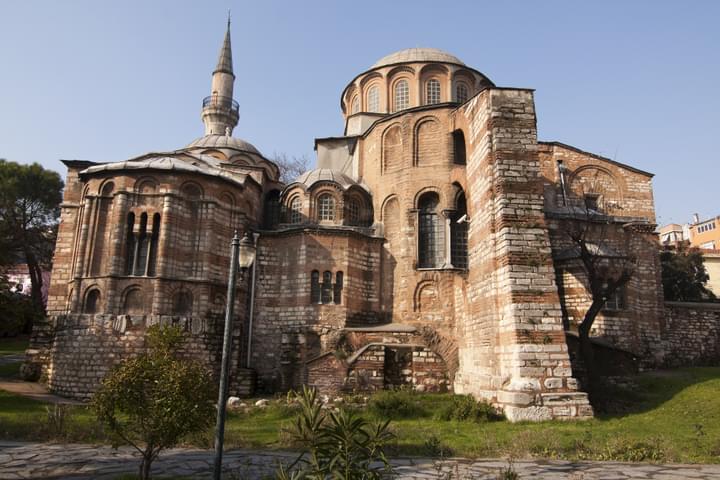
- The Kariye Mosque, also known as the Church of the Holy Saviour in Chora, was a medieval Greek Orthodox church in Istanbul's Edirnekapi neighborhood that is currently used as a mosque.
- The neighborhood is located in the western region of the Fatih district.
- The structure is a fine example of Byzantine design. It was converted into a mosque in the 16th century during the Ottoman Empire, became a museum in 1945, and was turned back into a mosque in 2020 by President Recep Tayyip Erdoan.
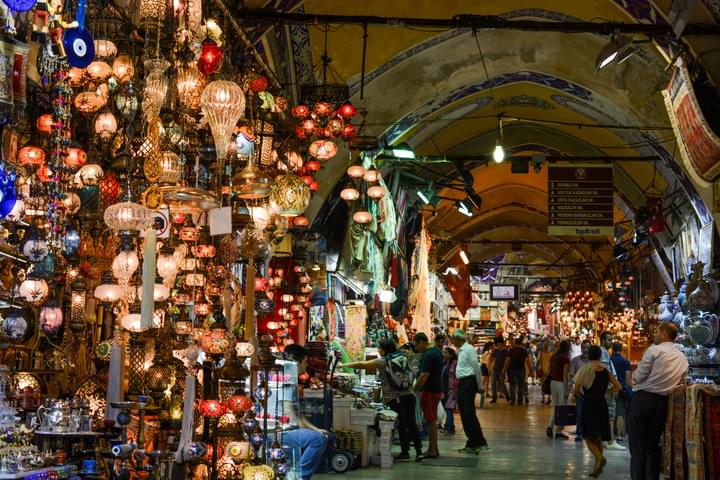
In the center of Istanbul, you'll find the world's oldest and largest covered market!
Every day, hundreds of visitors and shoppers from all over the world flock to the famed and historic Grand Bazaar.
The Grand Bazaar lives up to its name, with a market space that spans 30,700,000 square meters.
It has approximately 4,000 shops, which are set up along 62 covered lanes and sell everything from clothing to home decor to sweets and goods related to Turkish culture and cuisine.
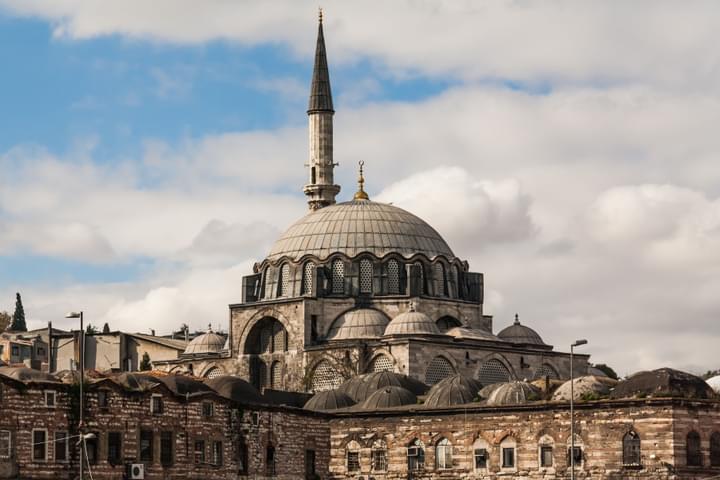
- The Rüstem Pasha Mosque is an Ottoman mosque in Istanbul, Turkey, near the Spice Bazaar.
- It is located in the Hasrclar arşs in the Tahtakale neighborhood of the Fatih district.
- It was designed by Ottoman imperial architect Mimar Sinan and completed in roughly 1563, and is named for Rüstem Pasha, who served as Grand Vizier of the Ottoman Empire under Sultan Suleiman I.
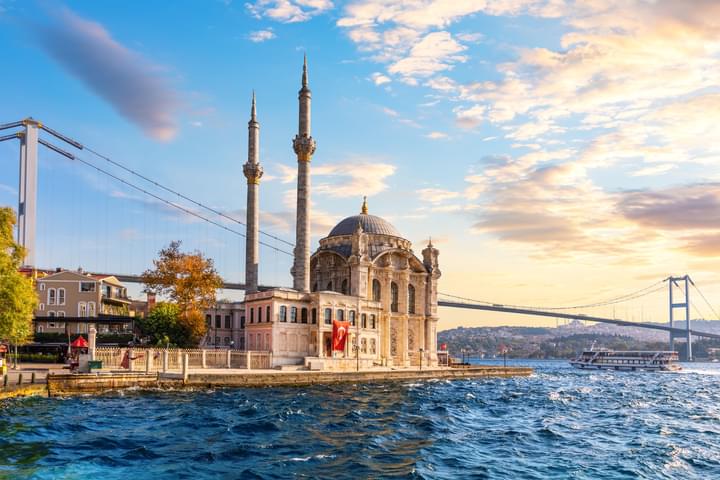
- The Ortaköy Mosque, formally the Büyük Mecidiye Camii or Sultan Abdülmecid's Grand Imperial Mosque in Beşiktaş, Istanbul, Turkey, is located on the waterside of the Ortaköy pier plaza, one of the most popular tourist destinations in Istanbul.
- This structure is representative of Ortaköy since it boasts a unique view of Istanbul's Bosphorus Strait and the Bosphorus Bridge.
- The mosque may be seen from the popular Bosphorus Cruise, which takes tourists from Istanbul's Asian side to the European side aboard a ferry boat.
Suggested Read: Mosques Walking Tour
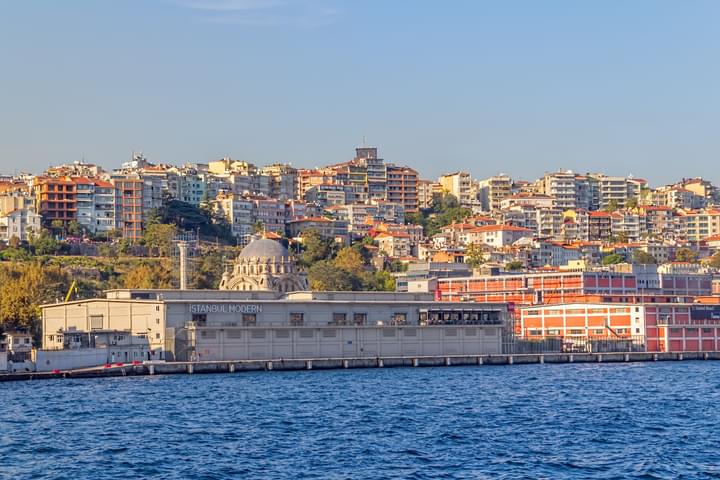
- The Istanbul Museum of Modern Art or Istanbul Modern Sanat Müzesi, which opened in 2004 as Turkey's first museum of modern and contemporary art, moved to a temporary location in the Asmalimescit neighborhood in 2018 while a new structure was being built.
- The city's premier modern-art museum presents rotating temporary exhibitions and current works by Turkish artists.
Also Checkout: Dolmabahce Palace History
FAQs of Istanbul
What is the most visited place in istanbul.
Dolmabahce Palace is the most visited place in Istanbul as it houses some of the major tourist attractions of the city.
Also Checkout: Dolmabahce Palace Red Room
Where should I visit in Istanbul?
- Dolmabahce Palace
- Hagia Sophia Mosque
- Sultanahmet District
- Suleymaniye Mosque
- Topkapi Palace
- Bosphorus Strait
- Historic Areas of Istanbul
- Gulhane Park
What should I not miss in Istanbul?
- Admire Hagia Sophia's colossal dome ...
- Inside the Topkapi Palace, have a look around.
- Inside the Blue Mosque, be mesmerized by the tiles.
- At the Basilica Cistern, you can travel back in time to Byzantium.
- The Archaeology Museum is a great place to brush up on your ancient history.
- Gülhane Park's tulips are in full bloom.
What is Istanbul famous for?
Istanbul is well recognised for being the cultural capital of various monothetic religious sects, each of which claims to have their own unique architectural signature and domes around the city. In Istanbul, there are a number of well-known structures that display a wealth of legends about the city's great ancient kings.

How many days do I need in Istanbul?
If you're visiting for the first time, allow at least three days. Three days in Istanbul will give you enough time to explore the city's most famous landmarks, but plan on a jam-packed itinerary if you want to make the most of your time there!
Which is the best month to visit Istanbul?
Mid-April to June and September to October are the best months for weather and peak season. During the off-season, you can usually find cheaper deals and fewer crowds, the weather is usually beautiful, and all of the attractions are open.
Is Istanbul tourist friendly?
Istanbul is a safe city to visit if you stay away from the areas that are considered unsafe. You should be informed that the majority of thefts and pickpocketing occur in tourist destinations, restaurants, shops, and public transit, as well as serious crime.
What is the name of the famous museum in Istanbul?
The most popular museum ideal for sightseeing in Istanbul is Topkapi Palace Museum.
Which are the best beaches in Istanbul?
Here are some of the most popular beaches in Istanbul :- Kilyos Beach- Burç Beach- Burgaz Adası- Ağva & Kilimli Cove- Büyük Ada
Attraction Tickets
Travel guide.

The content and images used on this site are copyright protected and copyrights vests with the respective owners.
© 2024 www.myistanbulpass.com All rights reserved.
- 10 Things To Do In...
Sultanahmet and Beyond: Things To Do in Istanbul Old City

Whether it’s walking ancient city walls, haggling in historic bazaars, absorbing the sanctity of Ottoman mosques, sipping beer on a rooftop bar, watching the sun go down on the Golden Horn or relaxing in a Turkish bath, there’s always something more to do in Istanbul Old City, a place aptly known as ‘the city of the world’s desire’.
Want to explore Turkey’s vibrant bazaars and rocky valleys? Book Culture Trip’s 12-day group tour where you’ll stop at key historical sites and glide across the landscape in hot-air balloon.
The heart of Istanbul remains its fascinating Old City, home to some of the most historic sites of this vibrant megapolis. Dramatically located on a peninsula pointing across the Bosphorus Strait to Asia, Sultanahmet was formerly the capital of the Byzantine and Ottoman empires.

Walk the ancient city walls from the Sea of Marmara to the Golden Horn
The mighty Walls of Theodosius kept the city safe from everybody from Attila the Hun to the all-conquering Muslim Arabs for a thousand years before falling to the Ottoman Turks in 1453. Running some 6.5 kilometres (four miles) across the spine of the peninsula from the Sea of Marmara to the Golden Horn, these late-Roman walls have survived remarkably well. Walk through neighbourhoods virtually untouched by tourism, past hole-in-the-wall restaurants, smoky tea shops and cottage gardens in the wall moat. Key sights include the Church of St Saviour in Chora (Kariye Museum), famed for its mosaics, the beautiful Ottoman Mihrimah mosque and the former palace of the Byzantine emperors, Blachernae (Tekfur Saray).
Pro-tips: For safety, avoid walking the walls at dusk. Reach the southern end of the walls by using the Marmaray metro line. At the end of your walk, catch a ferry down the scenic Golden Horn from Ayvansaray.

Steam-clean yourself in a hammam
Cleanliness is an integral part of Islam, and in the days before most homes had their own water supply, the hammam (Turkish bath) played a key role in the life of the city. Endowed by sultans, huge domed temples to hygiene arose amongst the city’s largely wooden houses. Visitors today flock to get the hammam experience , lounging on the warm marble, sluicing themselves with warm water from elegant copper bowls or surrendering to the pummelling and scrubbing of an expert masseuse. The Hürrem Sultan, Cağaloğlu and Çemberlitaş are just three gems in the Old City.
Pro-tip: The three hammams above have separate sections for men and women – for a mixed-sex session, try the Süleymaniye hammam.

Stroll the streets of Balat and Fener
The narrow, cobbled streets of these two districts, tumbling down the hillside to the Golden Horn waterfront , were once the preserve of the city’s Jewish, Armenian and Greek communities. Some of the crumbling late-19th-century European-style terraced houses are being bought up and gentrified, with a plethora of new vintage-style cafés springing up around St George Greek Orthodox Cathedral. It’s a great area to just wander, but don’t miss the recently restored and quirky cast-iron Bulgarian church of St Stephens.
Pro-tip: Ferries run from the pier at Karaköy (easy to reach from Sultanahmet) and stop at both Fener and Balat.

Get lost in Istanbul’s biggest bazaars
The Grand Bazaar with its 4,000-plus shops and the more intimate Spice Bazaar may be touristy, but these domed temples to late-Medieval consumerism still draw plenty of visitors. Dive into the maze of the Grand Bazaar for everything from fake designer jeans and handmade Turkish rugs to leather jackets and traditional gold jewellery. The Spice Bazaar does exactly what it says on the tin – in addition to dried fruits, nuts and the ubiquitous Turkish delight.
Pro-tip: Exit the spice bazaar via its western gate and wander up bustling Hasırcılar Sokak (‘street of the strawmakers’) to revel in hole-in-the-wall shop after shop selling everything from straw brooms to plump pistachios, all the while smelling the delicious aroma wafting from Kurukahveci Mehmet Efendi, one of Istanbul’s premier coffee roasters.

Enjoy a rooftop drink with sprawling city views
There are exceptions, but Istanbul’s Old City is not noted for its nightlife. Hotel bars, however, present some of the best options for an evening drink in the area. Try the terrace of the Hotel Arcadia Blue at sunset for breathtaking views across the domes and minarets of the Old City, or check out the rooftop of the nearby Pierre Loti Hotel.
Pro-tip: It’s not a hotel, and it serves tea, Turkish coffee and traditional fruit sherbet drinks rather than alcohol, but the views across the Galata Bridge and up the Bosphorus from the multiple terraces of the Ağa Kapısı café, hidden on a narrow street beneath the Süleymaniye Mosque, are sublime.

Explore the Galata waterfront at sunset
Head down to the busy market area spanning Galata Bridge at sunset to see how the Golden Horn gets its name. Look up to the silhouette of the cascading domes and slender minarets of the Süleymaniye Mosque atop the city’s third hill, and grab a cold beer in one of the myriad café-bars built into the bridge itself.
Pro-tip: Take care walking along the parapet of the bridge for photos – it’s lined with local anglers casting their fishing hooks into the inlet below.

Discover the iconic Hagia Sophia and Blue Mosque
Over a thousand years of history separates these two monumental and iconic buildings, rising proudly some 500 metres (1,640 feet) apart in the heart of Sultanahmet. Start with the Hagia Sophia , or Church of the Holy Wisdom, built in 527 at the behest of Justinian (an important emperor of the Byzantine Empire). Today a museum, it is one of the world’s truly great buildings, with its awe-inspiring central dome and gold mosaic-covered interior. A short stroll across a green and fountain-adorned square brings you to the domed Blue Mosque (Sultanahmet Camii), built deliberately opposite the Hagia Sophia to emulate the wonders of the earlier structure. It gets its name from the largely blue Iznik tiles, over 20,000 of them, that adorn its interior.
Pro-tips: Make sure you visit the square between the two buildings at night to see their architectural beauty enhanced by subtle lighting.

Buy vegetables for the week at Çarşamba (Wednesday) market
The city’s oldest, largest and most vibrant street market has given its name to an entire district: Çarşamba (‘Wednesday’ in Turkish). Sprawling for what seems like miles along the streets radiating out from the imperial Fatih Mosque, there’s stall after stall heaped with fruit, vegetables, household utensils and clothes. Çarşamba is noted for its conservatism, so expect to see plenty of shoppers dressed in traditional clothes, and come dressed modestly yourself.

Visit Topkapı Palace, the nerve centre of an empire
The Topkapı Palace is a whole series of buildings set amongst gardens, rather than a Versailles-style edifice, and a half-day visit is barely sufficient to do it justice. From here, assorted Ottoman sultans ruled an empire stretching from the Balkans to Arabia and from North Africa to Crimea. There are tiled kiosks, pleasure gardens, armouries and vast kitchens to explore – and the views across the Bosphorus to Asia are second to none.
Pro-tip: For a discounted, fast-track entry to the palace (and many other museums, including the Hagia Sophia), get a five-day Museum Pass Istanbul (this can be purchased online, from many hotels or at the museums themselves).
Culture Trips launched in 2011 with a simple yet passionate mission: to inspire people to go beyond their boundaries and experience what makes a place, its people and its culture special and meaningful. We are proud that, for more than a decade, millions like you have trusted our award-winning recommendations by people who deeply understand what makes places and communities so special.
Our immersive trips , led by Local Insiders, are once-in-a-lifetime experiences and an invitation to travel the world with like-minded explorers. Our Travel Experts are on hand to help you make perfect memories. All our Trips are suitable for both solo travelers, couples and friends who want to explore the world together.?>
All our travel guides are curated by the Culture Trip team working in tandem with local experts. From unique experiences to essential tips on how to make the most of your future travels, we’ve got you covered.

Reigniting Turkey's Art Scene With Contemporary Istanbul

Guides & Tips
The noise of istanbul is replaced by the sound of silence.

Architecture
How french urbanist henri prost shaped modern istanbul and marrakech.

Stay Curious: Experience Istanbul From Your Living Room

Returning to Istanbul Seven Years Later Only Confirmed What I’d Known All Along

On the Trail of Turkish Literature's Greats in Istanbul

See & Do
The oldest and grandest market in the world.

Places to Stay
Hip apartments in istanbul you'll want to call home.

Photo Journal: The Fishermen of Istanbul’s Galata Bridge

A Solo Traveller's Guide to Istanbul

Where to Book Your Stay in Istanbul for a Local Experience

A Guide to Visiting the Asian Side of Istanbul
Culture trip spring sale, save up to $1,100 on our unique small-group trips limited spots..

- Post ID: 417548
- Sponsored? No
- View Payload
Istanbul Travel Guide
Courtesy of Leonardo Patrizi | Getty Images

19 Best Things to Do in Istanbul, Turkey
The world's only city that sits on the two continents of Europe and Asia, separated by the Bosphorus strait, Istanbul possesses so many layers that make it absolutely unique. A megacity that has seen the rise and fall of two empires, the former
- All Things To Do

Blue Mosque (Sultanahmet Camii) Blue Mosque (Sultanahmet Camii) free
Sultan Ahmed I was determined to build a mosque that rivaled the nearby Hagia Sophia , and most would agree that he accomplished this task or, at least, came close. Since the early 1600s, the Blue Mosque has been quite the sight to behold, with an array of domes, semidomes and minarets (or narrow towers). It's also one of the biggest tourist draws in Istanbul.
Visitors say this mosque offers stunning architecture inside and out. It can, however, get busy, so consider arriving early. And remember, the Blue Mosque is an active religious site, so dress conservatively. Women should wear headscarves, as is custom. If you forgot to bring one, you can borrow one from the mosque.

Hagia Sophia Mosque (Ayasofya Cami) Hagia Sophia Mosque (Ayasofya Cami) free
Tourists flock en masse to the Hagia Sophia for its stunning architecture, glorious interior views and historical significance. Built between 532 and 537, the building was a church for nearly a thousand years. It then served as a mosque from 1453 until 1935, before becoming a secular museum. In 2020, the building once again became a working mosque.
Once the biggest cathedral in the world, the Hagia Sophia is considered the magnum opus of Byzantine architecture. Visitors say it is a must-see when in Istanbul and recommend taking a guided tour for more information about the history of the site.

Basilica Cistern (Yerebatan Sarnici) Basilica Cistern (Yerebatan Sarnici)
The Basilica Cistern is Istanbul's largest surviving Byzantine cistern and one of its most unique historic sites. Constructed in 532 for Justinian I, this sprawling underground water reservoir –which is roughly the size of two football fields – once supplied water to the Great Palace of Constantinople, a large palace that served as the main residence for local emperors for centuries. Though the palace no longer exists, the cistern was renovated in 1985 to welcome visitors. In 2022, it reopened to the public after a five-year restoration effort. Its most noteworthy feature is a pair of Medusa heads that sit upside down at the base of two columns.
According to past travelers, the Basilica Cistern is easy to miss but worth checking out, despite its lack of interior attractions. Many said the site is beautifully preserved, but queues to buy tickets and enter can get quite long, so several recommended visiting with a tour group. Multiple half- and full-day tours that include stops at the cistern are offered on Viator ; tour prices range from $39 to $686 per person.

Popular Tours

Best of Istanbul: 1, 2 or 3-Day Private Guided Istanbul Tour
(4979 reviews)
from $ 200.00

ISTANBUL BEST : Iconic Landmarks FullDay Private Guided City Tour
(407 reviews)
from $ 160.00

Taste of Two Continents: Istanbul Food Tour
(2038 reviews)
from $ 125.00

Grand Bazaar (Kapaliçarsi) Grand Bazaar (Kapaliçarsi) free
Located within walking distance of must-visit sights like the Blue Mosque , the Basilica Cistern and Süleymaniye Mosque , the Grand Bazaar is one of the biggest and oldest covered shopping markets in the world. It regularly overwhelms visitors with its more than 60 streets of 3,000-plus shops, each accompanied by an overzealous vendor. Products range from hand-loomed carpets to antiques, traditional textiles to copper and silver artisan objects, artisan jewelry and ceramics to clothing and much more.
Despite the size and chaos of this bazaar, shoppers say you'll find yourself strangely at ease with the rhythm of the market, thanks in part to the friendliness of the vendors, who are far from pushy. Remember, though, that Westerners are often quoted higher rates for items here, so come prepared to bargain. Most merchants will drop their rates by as much as 50% when a customer refuses to pay full price. What's more, additional discounts are often given to those who pay with cash, although most vendors do accept credit cards.

Spice Bazaar (Misir Çarsisi) Spice Bazaar (Misir Çarsisi)
U.S. News Insider Tip: Take a lunch break at Pandeli Restaurant inside the bazaar, which has been around since the 1950s serving classic Turkish dishes in a refined ambiance. Make reservations in advance and don't miss the stairs that lead up to the restaurant on the left side of the bazaar's Eminönü entrance. – Feride Yalav-Heckeroth
Built in the 17th century from the revenue of the Ottoman administrative district in Egypt (and therefore also known as the Egyptian Bazaar) this historic bazaar is the second most famous covered market in Istanbul. A must-visit for gourmets who love to shop for traditional ingredients, the more than 80 shops inside the market have a wide and fragrant spectrum of spices, nuts, dried fruits, Turkish coffee and traditional sweets.

Süleymaniye Mosque (Süleymaniye Camii) Süleymaniye Mosque (Süleymaniye Camii) free
Nestled within Istanbul's historic Fatih district by the Golden Horn, Istanbul University and the Grand Bazaar , Süleymaniye Mosque is considered one of the city's most impressive Ottoman mosques. Built between 1550 and 1557 after being commissioned by its namesake, Süleyman I, this grand structure features multiple gardens and a large dome, plus high-end finishes like mother-of-pearl window shutters, painted corbels, traditional ceramic tiles and stained-glass windows.
Recent travelers described their time at this mosque as "amazing" and "peaceful," adding that it is just as stunning as the Blue Mosque and cannot be missed. What's more, this attraction is not as central and popular as others like the Hagia Sophia , meaning you won't have to rub elbows with lots of tourists while visiting. But remember, like other religious sites in the area, Süleymaniye Mosque hosts six prayer services every day, so expect occasional closures and dress conservatively. If you forget to wear long pants or pack a scarf to cover your head, the mosque offers loaner coverings at its entrance.

Rüstem Pasha Mosque (Rüstem Pasa Camii) Rüstem Pasha Mosque (Rüstem Pasa Camii)
One of Sultanahmet's lesser-known mosques is also one of its most beautiful. Designed by the famous Ottoman imperial architect Mimar Sinan (who also designed the Süleymaniye Mosque ) and completed in 1563, the structure was dedicated to the Grand Vizier Rüstem Pasha. The mosque's most important trait are the large quantities of Iznik tiles that decorate its interior in a wide variety of floral and geometric patterns. It's a definite deviation from Mimar Sinan's usual style, which favored the structure rather than its internal decoration.
Previous travelers commented that this more hidden sight is a definite stop for anyone interested in Islamic art and Ottoman architecture. They add the design impresses deeply with its hand-painted tilework as well as its majestic dome. Travelers have also commented that the mosque is a welcome respite from Istanbul's busy streets.

Topkapi Palace Museum (Topkapi Sarayi Müzesi) Topkapi Palace Museum (Topkapi Sarayi Müzesi)
Topkapi Palace served as the home of the Ottoman Sultans from 1478 to 1856 and is one of Istanbul's most popular attractions. It officially became a museum in 1924, shortly after the end of the Ottoman era, and features brilliant architecture, manicured courtyards and extensive weaponry, porcelain, cutlery, art and fabric collections.
Previous visitors loved admiring the palace's architecture and perusing its exhibits, saying you'll need several hours to take in everything there is to see. Popular exhibits include the kitchens, the calligraphy area and the armaments room. Many also recommend strolling through the property's gardens and refueling at the on-site coffee shop, where picturesque views of the Golden Horn await you.

Best of Istanbul private tour pick up and drop off included
(334 reviews)
from $ 48.12

Bosphorus Night Cruise with Dinner, Show and Private Table
(592 reviews)
from $ 35.00

2 Day All Inclusive Cappadocia Tour from Istanbul with Optional Balloon Flight
(258 reviews)
from $ 577.69

Istanbul Archaeological Museums (Istanbul Arkeoloji Müzeleri) Istanbul Archaeological Museums (Istanbul Arkeoloji Müzeleri)
At the Istanbul Archaeological Museums, which opened near the Topkapi Palace Museum in 1869, you'll find more than a million antiquities displayed throughout three buildings: the Archaeological Museum, the Ancient Orient Museum and the Tiled Kiosk Museum. Exhibitions offer a wealth of artifacts from the Assyrian, Hittite, Egyptian, Greek, Roman, Byzantine and Ottoman civilizations.
Travelers have commented on the beauty of the museum structures themselves and appreciated the vast collection at this underrated museum. Others recommended seeing the Sarcophagus of Alexander, a highlight in the collection.

The Beyoglu Neighborhood The Beyoglu Neighborhood
The heart of Istanbul's local life, Beyoglu, once known as Pera, was the center of European aristocratic settlement during the Ottoman era. The neoclassical architecture of its structures all speak of this past. Starting with the new Ataturk Cultural Center in the famous Taksim Square, the equally famous Istiklal Avenue stretches all the way to Tünel Square, where the historic Tünel funicular station is located as one of the world's oldest subterranean urban railways.
When walking down Istiklal, make sure to stop and explore the many historic shopping arcades, restaurants, art galleries and churches hidden in the side streets. Standouts include the Church of St. Anthony of Padua, the city's largest Catholic Church; the Istanbul Cinema Museum , exhibiting the history of Turkish cinema inside a stunning former mansion from the 19th century; and the art gallery Casa Botter inside a renovated and repurposed art nouveau apartment building from the 1900s.

Galata Tower (Galata Kulesi) Galata Tower (Galata Kulesi)
Certainly one of Istanbul's most iconic structures, the Galata Tower was first built during the Byzantine era, rebuilt by the Genoese, who gave it the stone mesh exterior it still possesses today, and later used as a prison during the Ottoman period. Today, the tower welcomes visitors who can climb to the top to enjoy a gorgeous 360-degree view of Istanbul.
Travelers have remarked that the tower is located in the city's "coolest" neighborhood and noted that the view from the top is especially amazing at night. Others commented that the tower itself is beautiful, though they felt the steep entry fee wasn't worth the experience.

Dolmabahce Palace Dolmabahce Palace
Sitting along the Bosphorus near the Kabatas tram stop and the Besiktas ferry port, Dolmabahçe Palace's jaw-dropping beauty and historical importance impresses visitors. Built in the 19th century, the palace was used by the final Ottoman sultans as their primary residence and administrative seat. The interior and exterior architecture showcase a mix of European and Ottoman designs that can only be found at this global crossroad. Make sure to also visit the National Painting Museum next door (included in the ticket), which showcases around 200 paintings from the palace's collection that spans Turkish and international artists from the 19th century.
Past travelers were wowed by the palace's extravagant interior, although some wished photography was permitted and felt tours were rushed and lacked information. Several visitors also reported long ticket lines, and the property's website cautions that the ticket office closes early once all passes have been distributed for the day, so plan on arriving early.

The Besiktas Neighborhood The Besiktas Neighborhood
After exploring the Dolmabahçe Palace , a stroll in the Besiktas neighborhood at large is a great way to delve into local life, away from the tourist highlights. Walk up Süleyman Seba Avenue to reach Akaretler, the 19th-century row houses originally built for those who worked at Dolmabahçe Palace. They're now filled with modern shops, art galleries, cafes and restaurants. Stroll down Çiragan Avenue to reach Yildiz Park, one of the city's largest public parks with two Ottoman-era pavilions that now serve as cafes and enjoy some time away from the crowds. Right across the park, gaze at one of Istanbul's most iconic hotels with its ornate gates, the Çiragan Palace Kempinski, inside a former Ottoman palace. If you still have the energy, continue on Çiragan Avenue to Ortaköy Square to enjoy a waterfront view of the famous Bosphorus Bridge with the Ortaköy Mosque built in the 1850s right before it.
The best way to reach Besiktas is via bus, however, the neighborhood also has its own ferry port with transfers available from Eminönü (Old City).

Bosphorus Sunset Cruise on Luxury Yacht
(1327 reviews)
from $ 66.40

Private Guided Istanbul Day Tour
(148 reviews)
from $ 95.00

Bosphorus Yacht Cruise with Stopover on the Asian Side - (Morning or Afternoon)
(969 reviews)
from $ 55.33

The Nisantasi Neighborhood The Nisantasi Neighborhood
U.S. News Insider Tip: Make sure to visit Kalyon Kültür , an art and culture space inside a beautifully renovated Ottoman mansion built in 1889. – Feride Yalav-Heckeroth
It's in this neighborhood that you'll find the city's residents shopping for the latest collections from Turkish and international designers. Apart from Beymen , Turkey's most exclusive department store, you'll also find brands such as Gucci, Louis Vuitton and Chanel plus the atelier and showrooms of some of Istanbul's most important fashion designers. The neighborhood is, however, also home to brands such as Gap, Massimo Dutti, Zara and Marks & Spencer, pleasing shopping crowds of all budgets in one go.

Galataport Galataport
Much more than the world's first underground cruise ship terminal, Galataport is filled with restaurants, cafes, shops and a wide boardwalk that all face the Bosphorus. Apart from Istanbul Modern , Galataport's other cultural offering is the Istanbul Museum of Painting and Sculpture , designed by the famed Turkish architect Emre Arolat's firm. It has a vast collection that presents Turkish art from the late 19th-century Ottoman period to the end of the 20th century. The port is also home to the luxurious Peninsula Hotel; three of its four buildings are renovated heritage structures overlooking the Old City.
Travelers have remarked that the port is modern and has lots of branded storefronts and restaurants and that the views are incredible. They add that the modern design of Galataport and the historic architecture of nearby structures gives visitors the best of both worlds.

Istanbul Modern Istanbul Modern
Inside a stunning waterfront structure by the Renzo Piano Building Workshop, Istanbul Modern is the city's most important hub for contemporary art with its permanent and temporary exhibitions. The collection focuses mainly on pioneering Turkish artists and also includes a photography collection. Make sure to visit the museum's rooftop that faces the Bosphorus and the Old City and features shallow pools that reflect the horizon.
Previous visitors have commended the large variety of artworks, including all types of art, media, sculpture and interactive exhibits. Other guests recommended the rooftop and its fantastic view of the historic city center.

The Kadiköy Neighborhood The Kadiköy Neighborhood
U.S. News Insider Tip: Heading to Kadiköy Market? Start your journey on Günesli Bahçe Street and then get lost among the offerings, especially the many little eateries selling street food. – Feride Yalav-Heckeroth
Istanbul's Asian side (or Anatolian side as the locals like to say) is often completely overlooked by tourists, but it's the perfect locale for those who want to have a genuine local experience. Kadiköy is very down-to-earth and still very Turkish, largely untouched by the cosmopolitan air that is prevalent on the European side. After arriving at the Kadiköy ferry station, the first stop should be the vast Kadiköy Market, a network of interconnected streets that are filled with vendors selling everything from fresh fish to produce, cheeses to pickled vegetables, coffee to nuts, offal to honey and so much more.

Beylerybeyi Palace Beylerybeyi Palace
Another hidden gem Istanbul's Anatolian (Asian) side, the breathtakingly ornate Beylerbeyi Palace was built between 1863 and 1865 under the order of Ottoman Sultan Abdülaziz. It served as a summer residence and state guesthouse. The waterfront palace was designed by Sarkis Balyan, who, along with other members of the Armenian Balyan family, designed such other icons as the Dolmabahçe and Çiragan Palaces. A confluence of Western and Eastern architectural styles, the interior of the lavish palace is filled with Turkish Hereke carpets; French Baccarat crystal chandeliers; and Chinese, Japanese, French and German ceramics, to name a few.
Previous travelers were astounded by the beauty and design of the palace, which exhibited wonderful craftsmanship. The palace's coffee shop was also recommended due to the stunning Bosphorus view.

Cappadocia Dream - 2 Days Cappadocia Travel with Balloon Ride from / to Istanbul
(164 reviews)
from $ 474.77

Istanbul Bosphorus Sunset Cruise on Luxury Yacht
(1276 reviews)
from $ 49.80

Istanbul 7-8 Hours Private Guided Tour. Depart from Cruise Port
(68 reviews)
from $ 149.00

Büyükada Büyükada
U.S. News Insider Tip: This island is very popular on the weekends, so if you'd rather avoid the crowds, visit on a weekday. – Feride Yalav-Heckeroth
The largest of Istanbul's Princes' Islands is certainly its most popular and is the best way to really take a break from the city's endearingly chaotic energy. Büyükada (which literally translates to 'large island') was a popular getaway for Istanbul's prosperous Greeks, Jews and Armenians who had lavish summer mansions built to accommodate their vacationing needs. Nowadays, these Ottoman-era mansions are some of the most important attractions on the island, and locals and visitors alike arrive in droves to stroll along the streets to gaze up at the historic architecture. Some of the most notable houses are located on Çankaya Avenue.

Things to Do in Istanbul FAQs
Explore more of istanbul.

Best Hotels

When To Visit
If you make a purchase from our site, we may earn a commission. This does not affect the quality or independence of our editorial content.
Recommended
The 28 Best Water Parks in the U.S. for 2024
Holly Johnson|Timothy J. Forster May 8, 2024

The 18 Best Napa Valley Wineries to Visit in 2024
Lyn Mettler|Sharael Kolberg April 23, 2024

The 25 Best Beaches on the East Coast for 2024
Timothy J. Forster|Sharael Kolberg April 19, 2024

The 50 Best Hotels in the USA 2024
Christina Maggitas February 6, 2024

The 32 Most Famous Landmarks in the World
Gwen Pratesi|Timothy J. Forster February 1, 2024

9 Top All-Inclusive Resorts in Florida for 2024
Gwen Pratesi|Amanda Norcross January 5, 2024

24 Top All-Inclusive Resorts in the U.S. for 2024
Erin Evans January 4, 2024

26 Top Adults-Only All-Inclusive Resorts for 2024
Zach Watson December 28, 2023

Solo Vacations: The 36 Best Places to Travel Alone in 2024
Lyn Mettler|Erin Vasta December 22, 2023

26 Cheap Beach Vacations for Travelers on a Budget
Kyle McCarthy|Sharael Kolberg December 4, 2023

Istanbul.tips
The Best of Istanbul in One Place
Topkapi Palace in Istanbul: Entry Fee, Opening Hours & Things to See 2024
Welcome to Topkapi Palace, a must-visit museum in Istanbul ! As one of the most iconic landmarks in the city, Topkapi Palace is a perfect example of Ottoman architecture and a symbol of Istanbul’s rich history. In this article, we’ll explore the fascinating facts about Topkapi Palace in Istanbul, its collections, tickets, entry fee, opening hours, and some tips to make your visit a memorable one.
Page Contents
🚗 First Time in Istanbul? Be Prepared & Carefree!
Istanbul: Private Airport Transfer with Meet and Greet 🌟 4.4 / 5 (318 reviews)
Istanbul: Turkey and Europe eSIM Roaming Mobile Data 🌟 4.1 / 5 (216 reviews)
Istanbul: Full-Day Highlights Tour with Guide and Lunch 🌟 4.5 / 5 (1101 reviews)
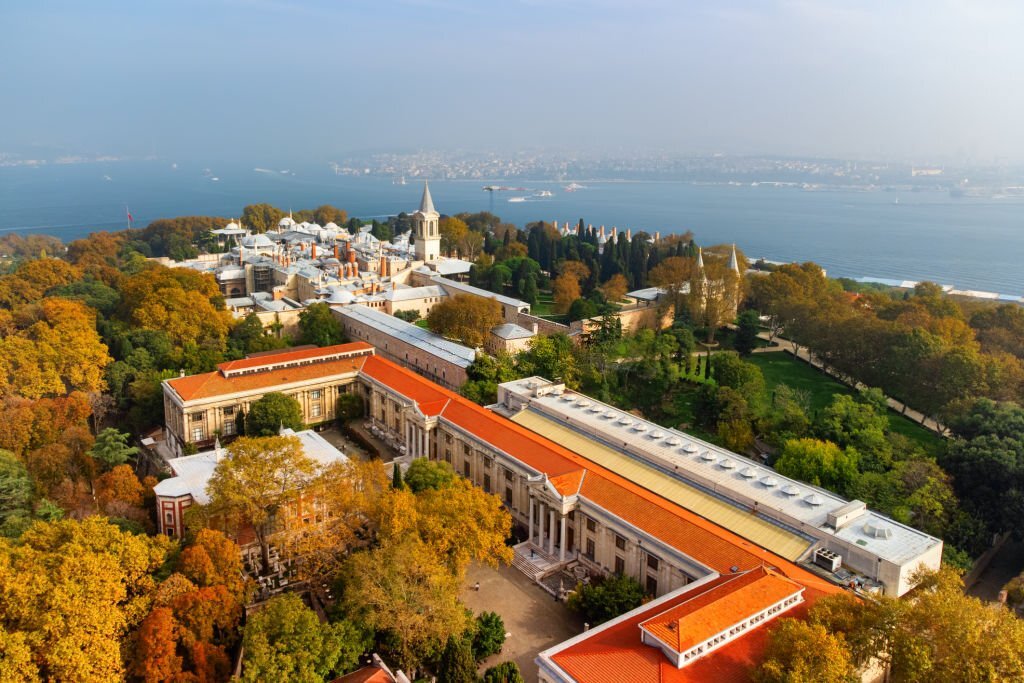
🕌 Discover Famous Landmarks of Istanbul
Istanbul: Topkapi Palace & Harem Museum Ticket & Audio Guide 🌟 4.2 / 5 (205 reviews)
Istanbul: Basilica Cistern Skip-the-Line Entry & Audio Guide 🌟 4.4 / 5 (318 reviews)
Istanbul: Blue Mosque & Hagia Sophia Small-Group Tour 🌟 4.4 / 5 (318 reviews)
Facts about Topkapi Palace in Istanbul
Topkapi Palace was the main residence of the Ottoman sultans for almost 400 years, from 1465 to 1856. The palace has a total of 700,000 square meters, and its architecture reflects the luxurious lifestyle of the Ottoman Empire’s ruling elite. The palace was also a center for state affairs, as well as for art, science, and culture.
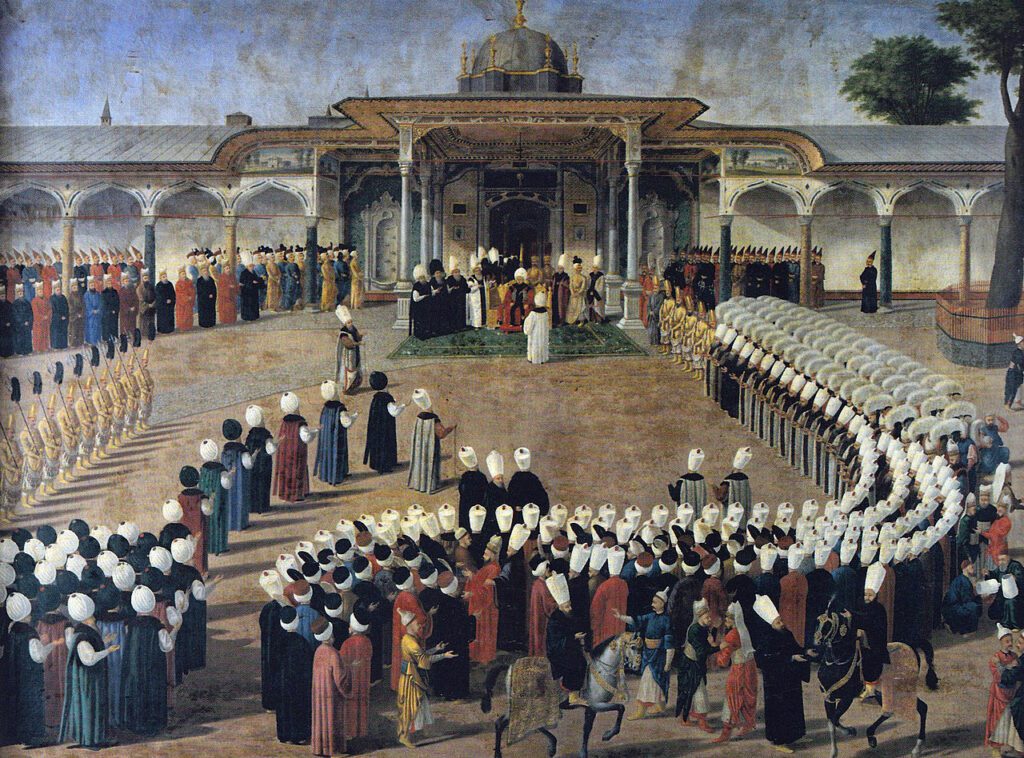
History of Topkapi Palace in Istanbul
Topkapi Palace was commissioned by Sultan Mehmed II after the Ottoman conquest of Istanbul in 1453. Initially, the palace was used as a military training ground and a royal hunting lodge. Later, it was expanded by succeeding sultans, and it became the center of Ottoman power and culture. Today, Topkapi Palace stands as one of the most remarkable examples of Ottoman architecture and design.
Where is Topkapi Palace Located?
Topkapi Palace is located in the Sultanahmet district of Istanbul , just a short distance from Hagia Sophia and the Blue Mosque. Its location on the historic peninsula makes it an easily accessible destination for tourists.
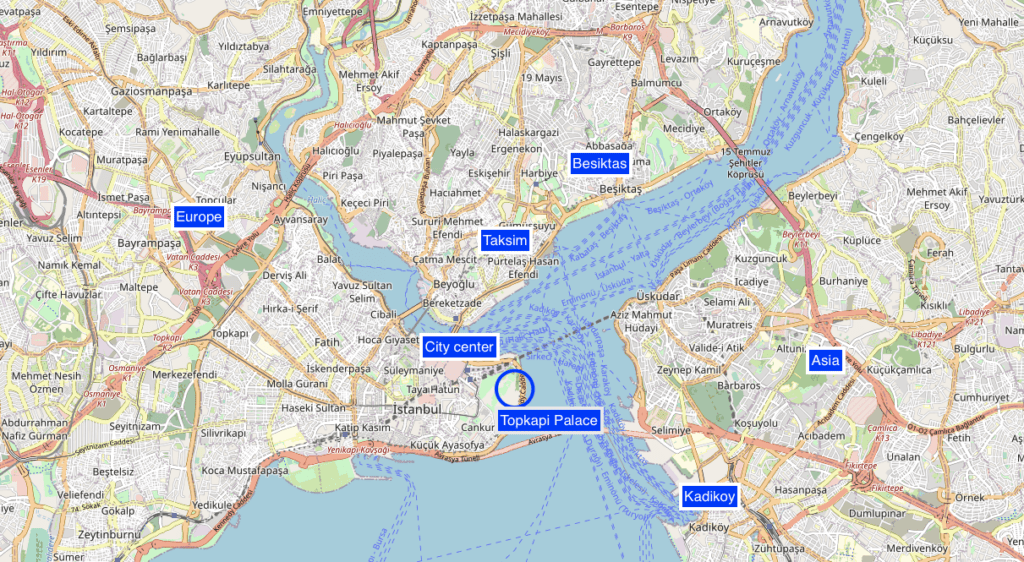
Initial Construction and Layout of Topkapi Palace
Topkapi Palace has four main courtyards, with each one leading to a different part of the palace complex. The first courtyard is the largest and houses the Imperial Gate, the Gate of Salutation, and the Gate of Felicity. The second courtyard contains the Imperial Council Chamber and the sultan’s private apartments. The third courtyard is where the Harem, the private living quarters of the sultan and his family, is located. Finally, the fourth courtyard contains several pavilions and gardens.
Entrance Fee, Tickets & Tours to Topkapi Palace
When planning your visit to Topkapi Palace, it’s best to purchase your tickets in advance to avoid long lines at the entrance. You can buy tickets online, and you have several options to choose from, including combined tickets for the Harem and Hagia Irene.
Online Skip-the-Line Tickets to Topkapi Palace
You can buy tickets online with guided tours to avoid queues to Topkapi Palace! It is also a better way not to miss the historical significance of Topkapi Palace: you will learn everything from guides.
News About Topkapi Palace Tickets in 2024: Entry Fees
From January 1, 2024, Topkapi Palace and its Harem section will be accessible with just one ticket – no more separate purchases are needed. This combined entry to Topkapi Palace costs 1500 TL per person as of January 2024.
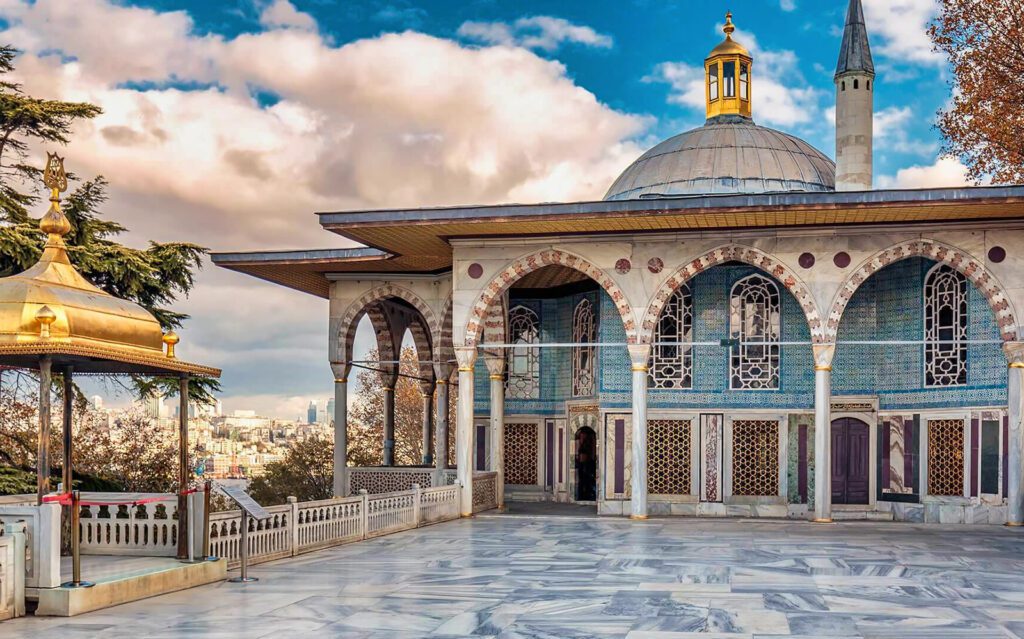
Free Admission and a Guided Tour of Topkapi Palace with Istanbul E-Pass
The Istanbul E-Pass offers a convenient and cost-effective way to explore the city and make the most of your visit to Topkapi Palace. One of the key benefits of the E-Pass is that it includes a free guided tour of Topkapi Palace, allowing you to delve deeper into its history and architectural marvels with the help of a knowledgeable guide.
In addition to the Topkapi Palace tour, the Istanbu l E-Pass grants you access to over 50 other attractions across the city!
Don’t Miss The Best Tours and Cruises in Istanbul
Working hours topkapi palace.
Topkapi Palace is open every day except Tuesdays from 9:00 AM to 6:00 PM.
What to See at Topkapi Palace?
Topkapi Palace is home to numerous impressive collections, and you could easily spend an entire day exploring them all. Here are some highlights of the palace complex:
The First Courtyard
As you walk through the first courtyard, you’ll feel like you’ve stepped back in time. This vast space was once the main entrance to Topkapi Palace and served as a venue for grand ceremonies and receptions. The area is lined with awe-inspiring Byzantine and Ottoman structures, including the Imperial Gate (Bâb-ı Hümâyûn) and the Gate of Salutation (Bâbüsselâm).
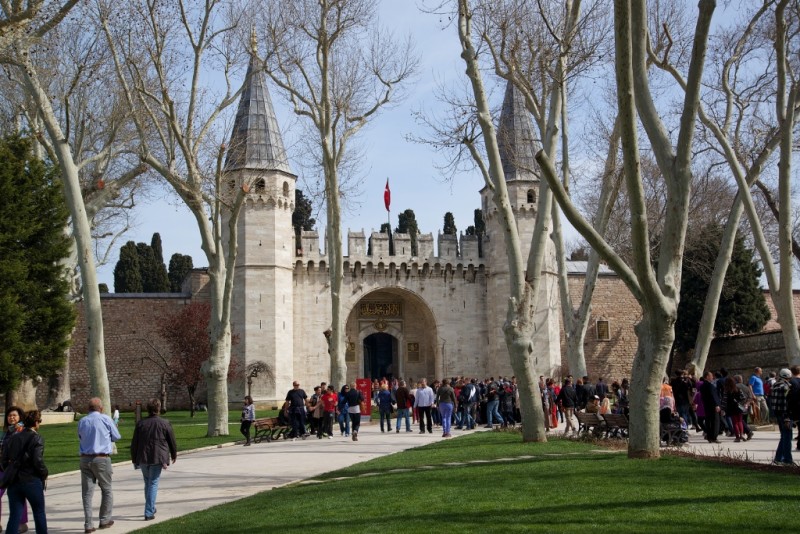
Give Attention to:
Take a moment to admire the towering marble fountain, which was built in the 15th century during the reign of Sultan Mehmed II. It stands as a testament to the Sultan’s grandeur and power, and was once used by palace inhabitants for ritual ablutions.
Stroll through the stunning gardens of the first courtyard, known as the Square Kiosk Garden. This serene space is adorned with colorful flowers and features a central kiosk, which was used as a gathering place for the sultan and his guests.
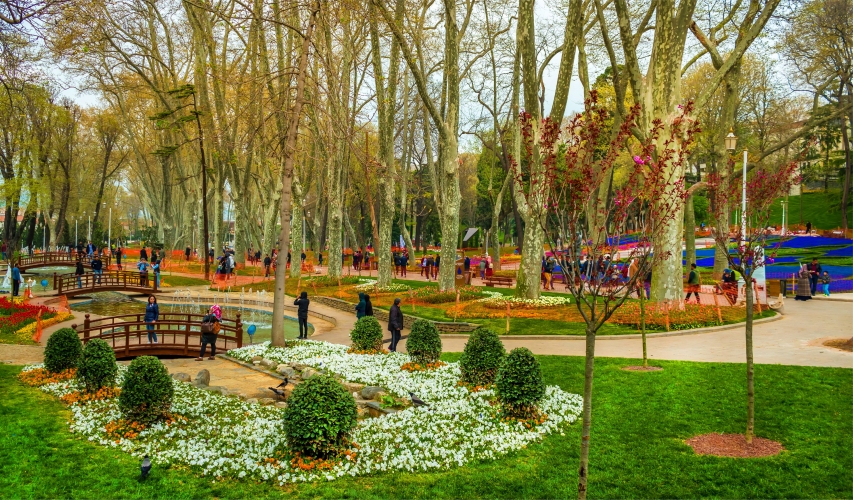
Hagia Irene
Directly opposite the Imperial Gate, you’ll see the magnificent Hagia Irene, which was once a grand Byzantine church before being converted into an arsenal during Ottoman times. Although it’s no longer used for religious purposes, the structure’s impressive architecture and rich history are sure to impress.
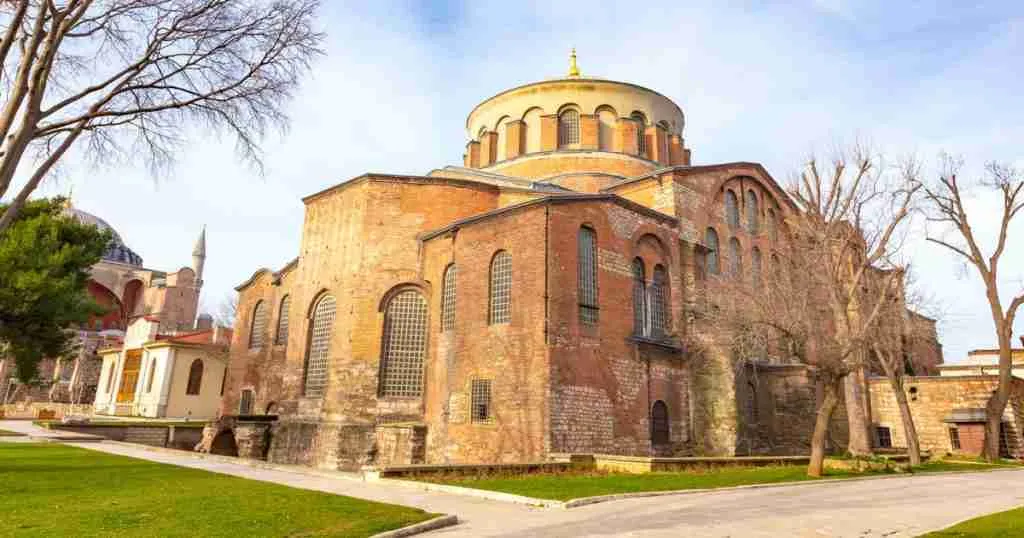
The first courtyard is also home to several stunning fountains, each of which has its own unique design and history. These intricately crafted works of art are a testament to the Ottoman’s appreciation for aesthetics and grandeur.
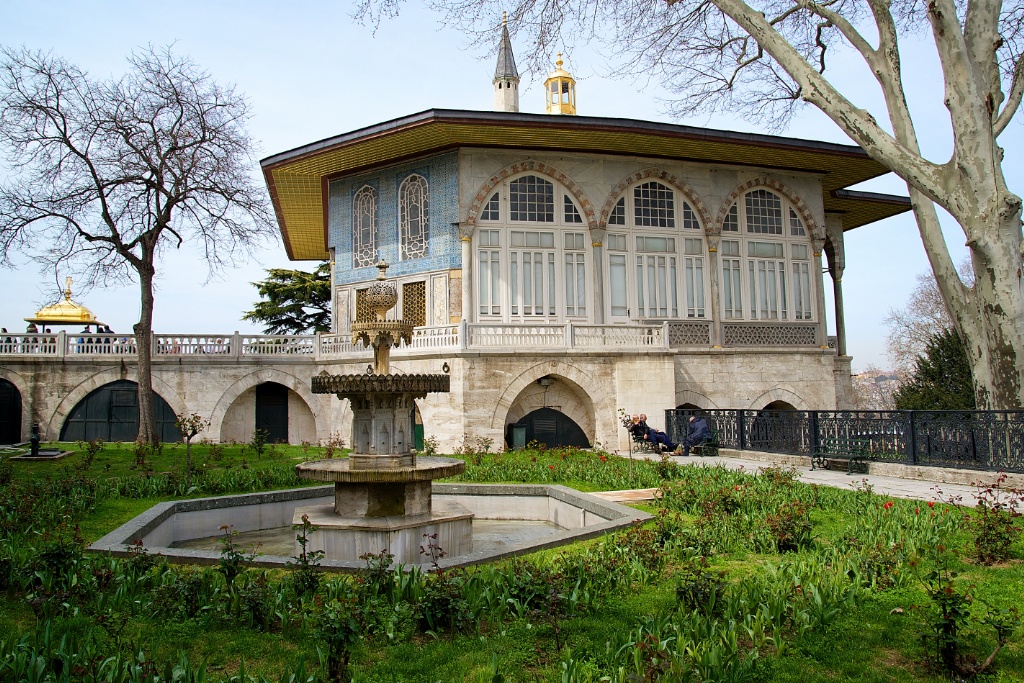
The Second Courtyard
As you move into the second courtyard, you’ll encounter a series of grand structures and exhibitions that are sure to leave a lasting impression. Here are just a few of the highlights:
Imperial Carriages
One of the most impressive displays in the second courtyard is the collection of imperial carriages. These beautifully crafted vehicles were once used by the sultans and their families, and offer a glimpse into the opulent lifestyle of Ottoman royalty.
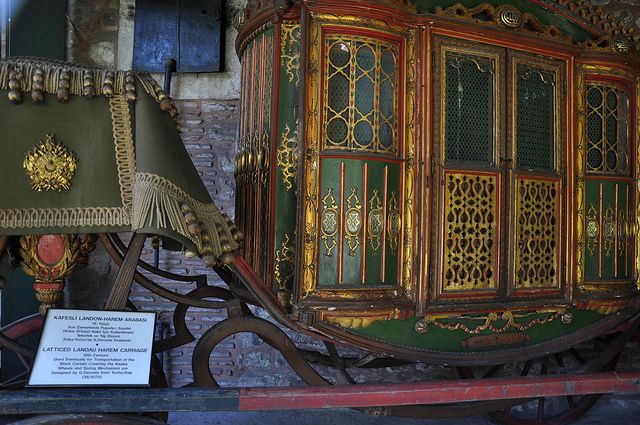
Tower of Justice
Built in the early 15th century, the Tower of Justice was once used as a place for legal proceedings and as a lookout tower. The impressive structure is one of the tallest in the palace complex and offers breathtaking views of the surrounding area.
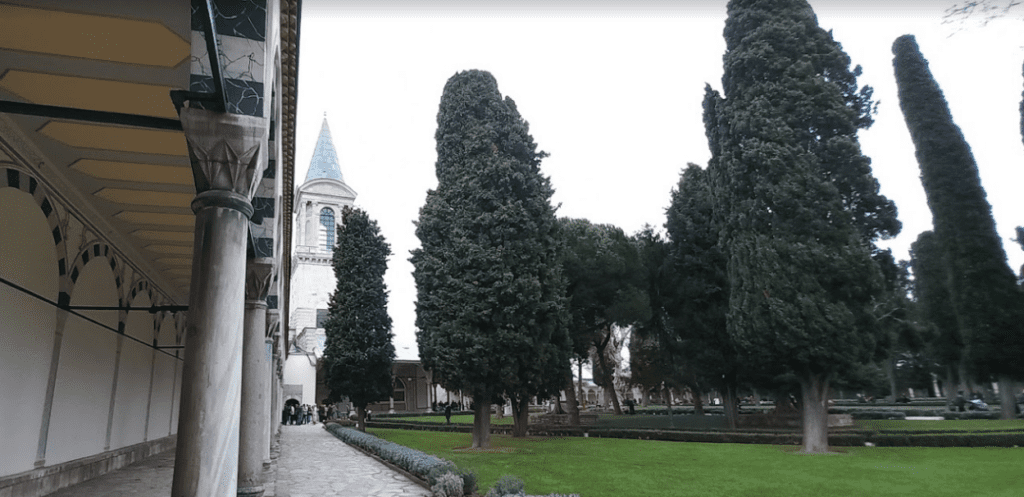
Weapons Room
The weapons room houses an impressive collection of weapons, armor, and other military equipment that was used by the Ottoman army throughout history. From swords and shields to guns and cannons, this exhibition offers a fascinating look into the weaponry of the time.
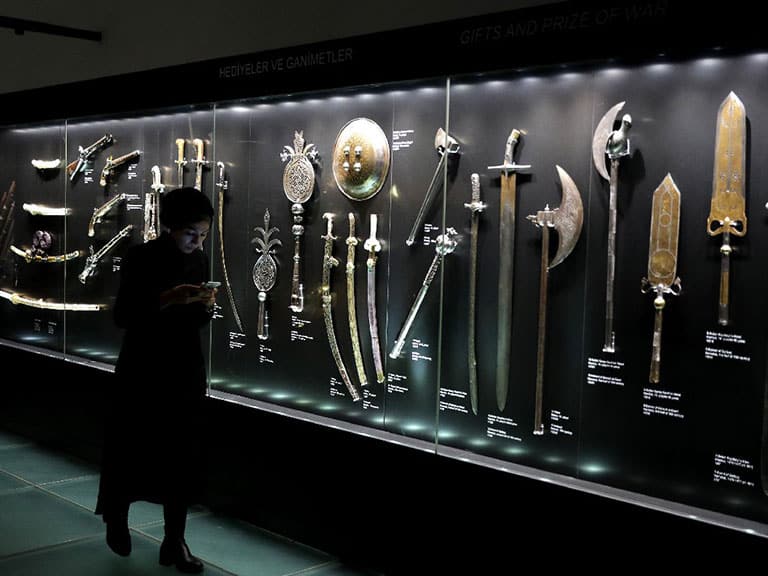
Gate of Felicity
The Gate of Felicity was the entrance to the Third Courtyard and the private apartments of the sultan. It was here that new sultans would be proclaimed and where important state ceremonies would take place.
Palace Kitchens
The palace kitchens were once a hub of activity and a testament to the opulence of the Ottoman Empire. The large complex was used to prepare meals for the sultan and his guests, and featured a variety of tools and utensils that were state-of-the-art for the time.
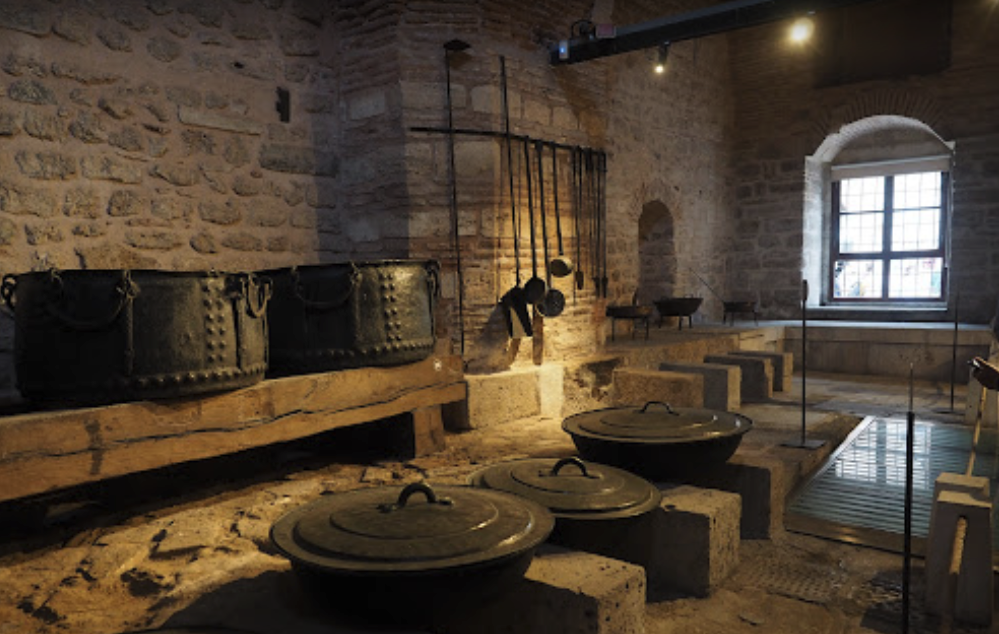
The Harem was once the private quarters of the sultan’s family and the palace’s female inhabitants. Visitors can explore the luxurious living spaces and learn about the lives of the women who lived here.

The Third Courtyard
The third courtyard was the heart of the palace and contained many of the most important structures and exhibitions. Here are just a few of the highlights:
Audience Chamber
The Audience Chamber was where the sultan would hold meetings with dignitaries and important guests. The room features stunning decorations and is sure to leave visitors in awe.
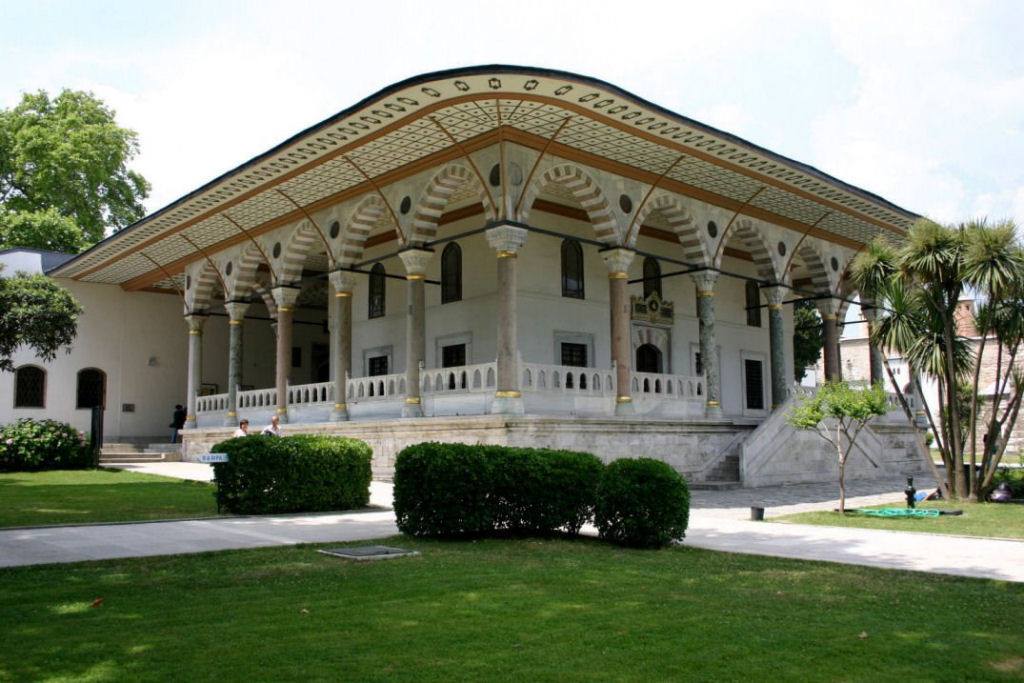
Sultan’s Costumes
The Sultan’s Costumes exhibition offers a glimpse into the sultan’s wardrobe and the lavish clothing worn by Ottoman royalty. The collection includes ceremonial robes, military uniforms, and other outfits worn by the sultans and their families.
The Treasury is a must-see for visitors to the palace. It houses an impressive collection of jewels, gold, silver, and other precious items. The collection includes gifts presented to the sultans by foreign dignitaries, as well as items acquired through conquests and trade.
Library of Ahmet III
The Library of Ahmet III is one of the most beautiful rooms in the palace. The walls are lined with books and manuscripts, and the ceiling features intricate paintings and designs.
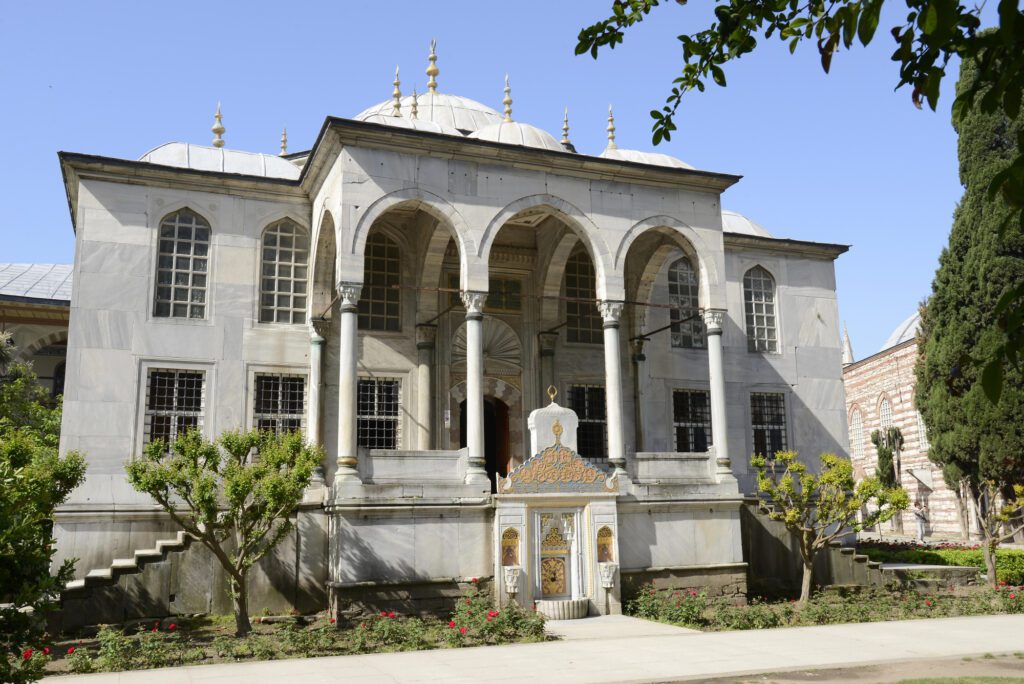
Privy Chamber
The Privy Chamber was the sultan’s private quarters and is one of the most exclusive areas of the palace. It contains several rooms, including a bedroom, bathroom, and sitting room. The decoration and furnishings are truly luxurious and offer a glimpse into the opulence enjoyed by the sultans.
The Fourth Courtyard
The fourth courtyard was the administrative center of the palace and contains a number of important buildings and exhibitions.
Circumcision Room
The Circumcision Room is where the sultan’s sons were circumcised as part of a traditional ceremony. The room is adorned with impressive decorations and features a stunning marble fountain in the center.
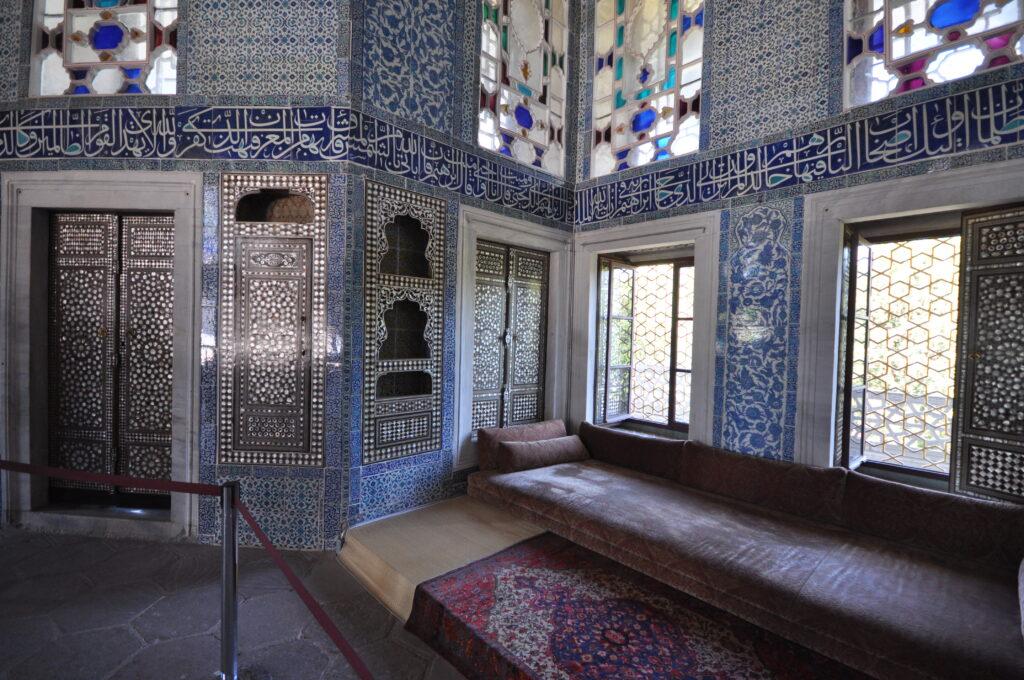
Mecidiye Pavilion
The Mecidiye Pavilion was built in the 19th century and served as the sultan’s private quarters during the summer months. The pavilion features impressive decorations and offers stunning views of the sea.
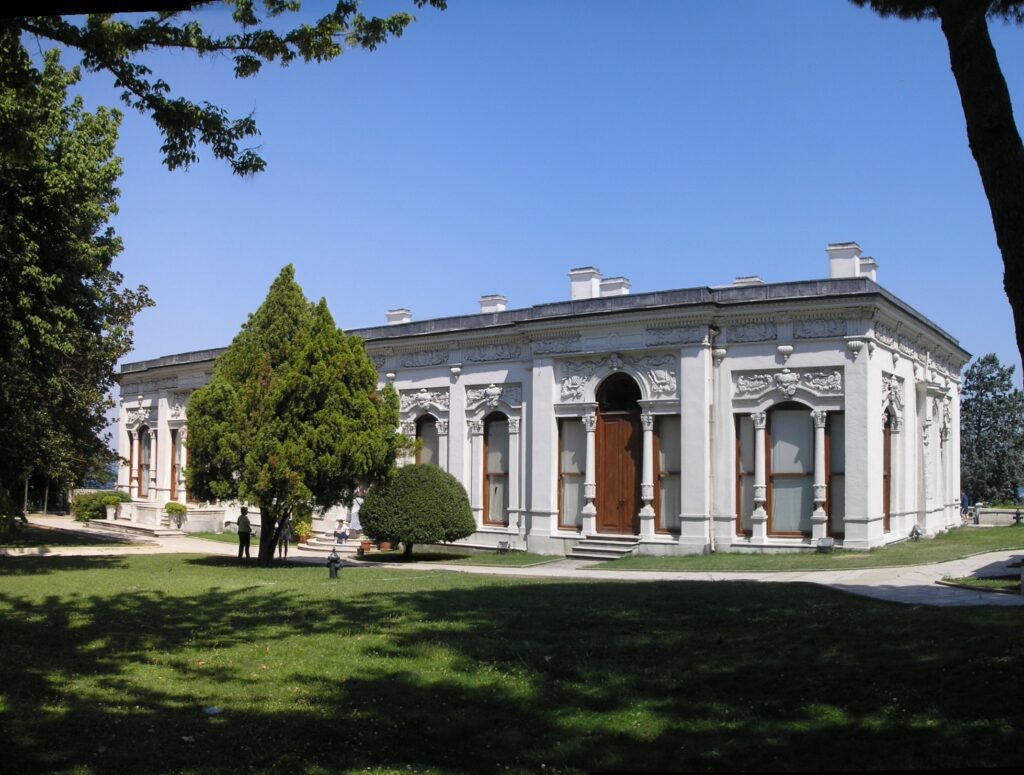
Baghdad Pavilion
The Baghdad Pavilion is a beautiful pavilion built in the 17th century. It was originally used as a reception hall and features impressive decorations, including intricate tiles and colorful stained glass windows.
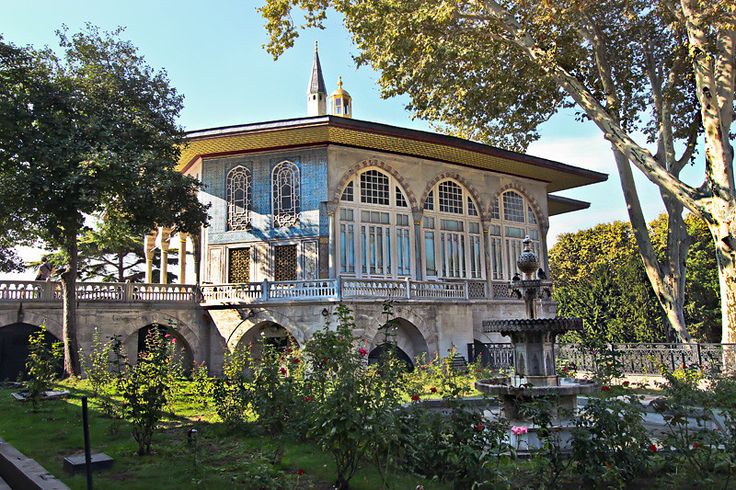
Iftar Pavilion
The Iftar Pavilion is a stunning pavilion built in the 18th century. It was used as a banquet hall during Ramadan and features impressive decorations, including intricate tile work and colorful murals.

Yerevan Kiosk
The Yerevan Kiosk is a small pavilion built in the 17th century. It was used as a private chamber by the sultan and features impressive decorations, including beautiful tiles and intricate carvings.
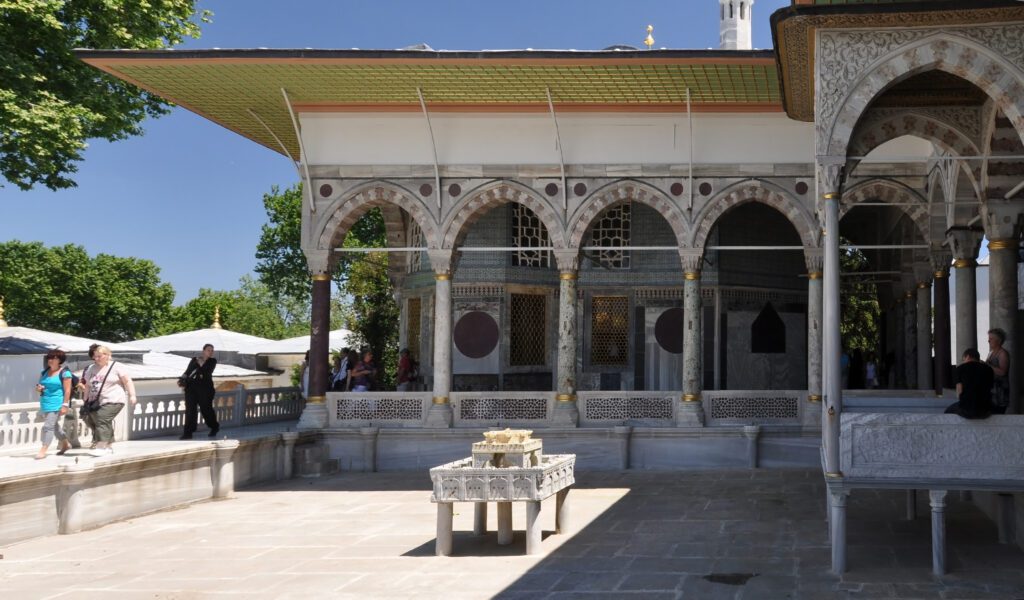
Chamber of the Chief Physician
The Chamber of the Chief Physician was used as a medical center by the sultans and their families. The chamber is home to a collection of medical instruments and other artifacts used in traditional Ottoman medicine.
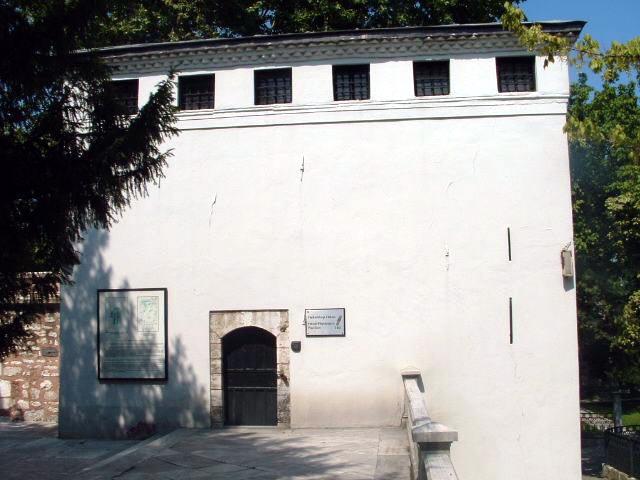
The palace’s gardens are a beautiful oasis in the heart of Istanbul. Visitors can stroll through the gardens and enjoy the many fountains, pools, and other decorative elements that make this one of the most beautiful parts of the palace.
Topkapi Palace Collections
In addition to the impressive exhibitions and collections already mentioned, the palace is also home to a number of other collections, including ceramics, arms and armor, and Islamic calligraphy.
Visiting Topkapi Palace Tips
If you’re planning a visit to Topkapi Palace, it’s important to keep a few tips in mind.
First, be prepared for large crowds, especially during peak tourist season. To avoid the crowds, consider visiting Topkapi Palace early in the morning or later in the afternoon. Additionally, if you’re interested in a specific exhibit or area of the palace, plan your visit accordingly to make sure you have enough time to explore.
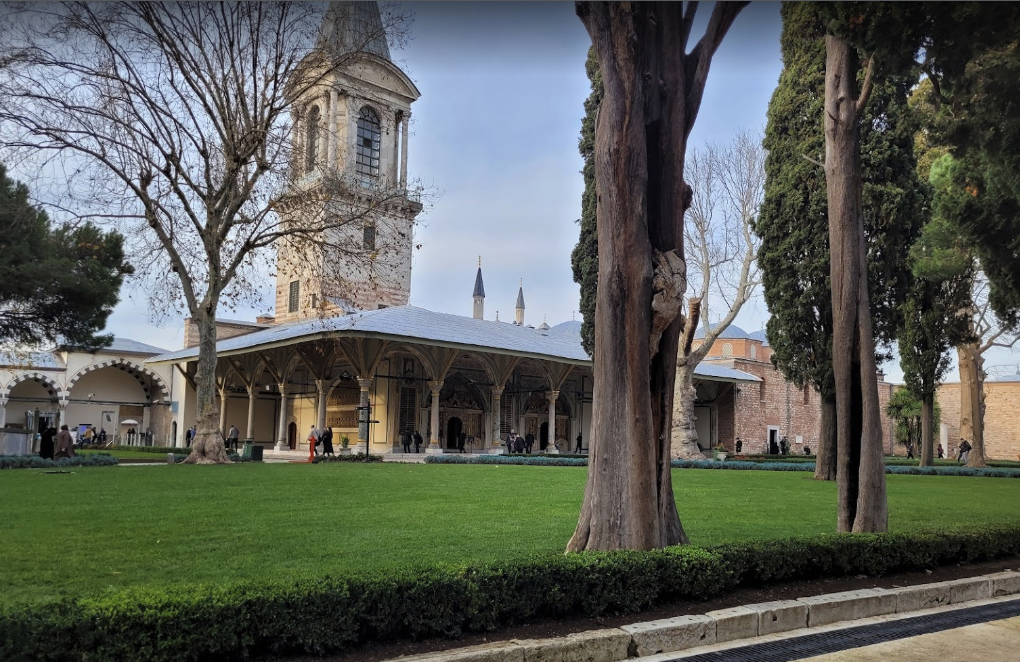
Second, wear comfortable shoes, as there is a lot of walking involved in touring the palace.
It’s also worth noting that there are specific rules and regulations visitors must follow when visiting Topkapi Palace. For example, visitors must dress modestly, covering their shoulders and legs. Photography is allowed in most areas of the palace, but flash photography is prohibited.
How to Get to Topkapi Palace?
Topkapi Palace is located in the heart of Istanbul’s historic peninsula and is easily accessible by public transportation. Here are some of the ways to get there:
- By Tram : Take the T1 tram line and get off at the Sultanahmet stop. From there, it’s just a short walk to the palace.
- By Marmaray : Take the Marmaray line and get off at the Sirkeci station. From there, it’s about a 10-minute walk to the palace.
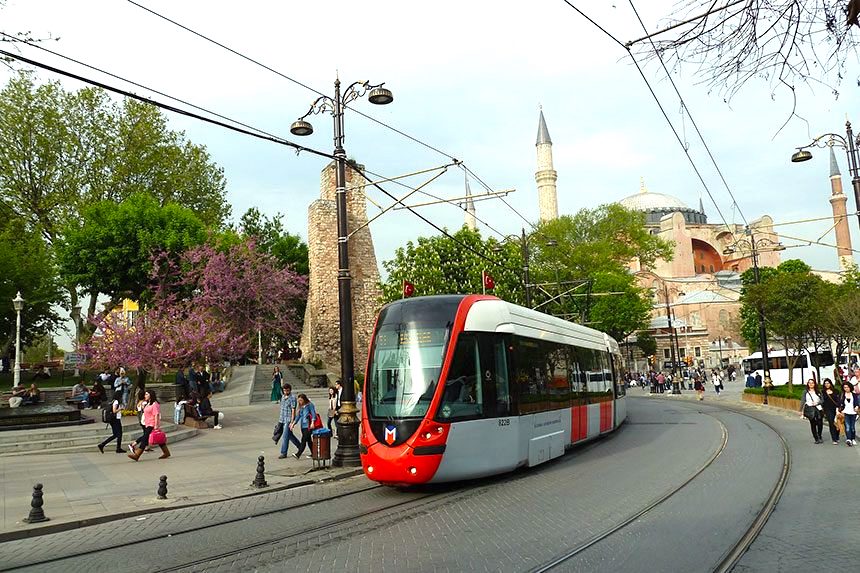
Overall, a visit to Topkapi Palace is a must-see for anyone interested in Ottoman history and architecture. With its stunning courtyards, intricate decorations, and fascinating exhibitions, it’s a truly unforgettable experience.
You Might be Interested in:
- The Supermarkets in Istanbul: Where Better Go for Groceries?
- A Guide to Dog-Friendly Istanbul: Parks, Hotels, Transport (2024)
- Best Turkish Street Food in Istanbul: Doner, Simit,
- Basic Turkish Phrases for Tourists: Speak Turkish Language on Your Trip
- The Best 5 Parks in Istanbul: Famous Beautiful Gardens & Green Spaces
Related Post
Istanbul ruines and constantinopol sites: a journey through byzantine history, galata tower in istanbul: entrance fee, opening hours, history & what to see (2024), istanbul archaeological museums: museums, tickets, opening hours (2024), leave a reply cancel reply.
Your email address will not be published. Required fields are marked *
Save my name, email, and website in this browser for the next time I comment.
Best Food Delivery Apps in Istanbul: How to Order Food In
Istanbul in may: weather & things to do, events in 2024, april weather in istanbul: the ultimate guide for travelers (2024), how to make turkish coffee: step-by-step recipe.
Ultimate Guide to Sultanahmet: 10 Best Things to Do & More
This district was creatively named after Sultan Ahmet I, after he commissioned the Blue Mosque. Interestingly, Sultan Ahmet I was the first of the Ottoman sultans to break the fratricide rule. This district is also known as the Old City in Istanbul. Most tourists find the majority of their time spent in this district or in Beyoğlu , which is also by the Bosphorus. If you cross the Golden Horn, you’ll find yourself in Beyoğlu.
If you want to explore Sultanahmet, we’ve compiled a list of the most important places to see, best gift shops, hotels, and restaurants.
Best things to do and see in Sultanahmet:
1. hagia sophia.

The Byzantine Emperor Justinian commissioned Hagia Sophia in 537. While the Great Palace of Constantine, built after the Hagia Sophia, has not survived, this captivating building still stands and has a rich history. Its religious importance has been emphasized by the world, particularly recently. Originally it was a church. When the Ottoman Empire invaded the old city, they converted the Hagia Sophia into a mosque. Since then, its Turkish name has been Aya Sofya. In the Republic era, it was known as the Aya Sofya Museum.
As it is now a mosque again, visitors are no longer charged an entrance fee. Tourists may visit outside prayer hours. If you’re curious about the Great Palace of Constantinople, you may also wish to visit the Great Palace Mosaics Museum, which is within walking distance.

2. Sultanahmet Square

Sultanahmet Square was also known as the Hippodrome of Constantinople, and it contains several architectural relics. The German Fountain, for example, was built in a neo-Byzantine style to celebrate Emperor Wilhelm II’s visit to Istanbul in 1891.
The Theodosius Obelisk was brought over from Egypt by Theodosius the Great and is currently about 3500 years old. The Serpent Column was brought from Delphi in 324AD to celebrate the victory the Byzantinians secured over the Persians. There’s also the Walled Obelisk that, although repaired in the 10th century, its date of origin is unknown.
It’s unfortunate that some of the relics have been lost to time. The seven statues of Porphyrius aren’t there anymore. However, if you want to sound like a tour guide, you can tell your friends that the hippodrome was the site of celebrations when Sultan Ahmet III’s sons were circumcised.
3. Blue Mosque (Sultanahmet Camii)

Known in Turkish as the Sultanahmet Camii, or the Sultanahmet Mosque, the Blue Mosque was commissioned by… you guessed it: Sultan Ahmet I. A student of the famous architect Sinan built this mosque. Both the Hagia Sophia and Blue Mosque were once imperial mosques.
The Hagia Sophia inspired the Sultanahmet Mosque. Therefore it has both Byzantine and Ottoman elements in its design. Its six slender minarets and cascading domes dominate the Istanbul skyline.

Sign up for our newsletter and
Get the istanbul food guide for free, 4. arasta bazaar.

If the crowds of the Grand Bazaar and Spice Bazaar are too much, we have good news for you. Hiding behind the legendary Blue Mosque is a smaller version of the Grand Bazaar. Arasta Bazaar may be the cooler part of the Sultanahmet neighborhood. The reason? The salespeople are less pushy. There are fewer tourists here. Introverted people who want a feel for that traditional Istanbul experience of exploring bazaars may prefer to find inspiration for their wardrobe in these quiet streets.
5. Topkapı Palace Museum

This magnificent one is one of the most important of all the Turkish Palaces because it was the first Ottoman palace in Istanbul. The Ottoman Sultans used this spot as the primary royal residence from 1458-1873. Hurrem Sultan became the first woman to marry a sultan and move into this palace. There is a guided tour to cover all the history, and a fast track entry means you don’t have to wait in line as this is one of the more popular Turkish museums.
If you purchase a Museum Pass Istanbul, it will be cheaper. It’ll be like using the same ticket for the Topkapı Palace, Galata Mevlevihouse, and the Istanbul Archeology Museums.
Related things to do
Taste of two continents tour, taksim evening food tour, 6. basilica cistern .

Justinian I’s may have been the most ambitious of all of the Byzantine Emperors. The Basilica Cistern and Hagia Sophia were built during his reign. Even if you’re not interested in history, you may still wish to visit to capture its beauty. It’s the perfect place for visitors to meditate. Look out for the Medusa Column.
Flavours of the Old City
Kadıköy street food tour, 7. gülhane park .

Gülhane is one of the few attractions with its own spot on the tram line. The best time to visit is during the Tulip Festival when the park is brimming with colorful tulips and roses. Once upon a time, Gülhane Park used to supply Topkapı Palace with roses.
Gülhane is one of the oldest green spaces in Istanbul, and it has a rich history. In 1839, the Edict of Gülhane took place here. This edict, among many progressive reforms, emancipated minorities. Nearby, there is the Hagia Irene Museum, which was once a Byzantine church and is now occasionally used as a concert. Also nearby is the newly opened Museum of the History of Science and Technology in Islam.
8. Soğukçeşme Street

This is one of those significant streets that both tourists and locals alike pass by or even visit without understanding its history. This street is located between Hagia Sophia and the walls of Topkapı Palace. It is also near Gülhane Park. It’s named after a fountain built in the Byzantine period.
As you walk along cobbled streets, you’ll find at least 12 Ottoman houses built against the walls of Topkapı Palace. Those 12 Ottoman houses are named after a flower that is grown beside them. Nine are part of a boutique hotel. The 6th President of Turkey was born in one of these charming houses.
You’ll also find the Sarnıç Restaurant, located in an ancient cistern, to be in these streets. Alternatively, bibliophiles may be pleased to see the “Çelik Gülersoy Vakfı İstanbul Kitaplığı”. This building is somewhere between a library, an archive, and a museum. It has over 10,000 rare books.
Soğukçeşme Street is a pedestrian-only street so there is no access by public transport or private car. If you want the whole Istanbul experience, sip some Turkish coffee in the cafe at the start of the street, and dream about this romantic city.
9. Istanbul Archeology Museum

The Istanbul Archeology Museums are three museums in one. You have the Archeological Museum in the main building, the Museum of Islamic Art in the tiled pavilion, and the Museum of the Ancient Orient, which used to be a fine arts school in the 1800s. The Istanbul Archeology Museum is considered one of the world’s largest archeological museums. This is no surprise, as they have over a million artifacts are in their collection. The museum was established in 1891 when Sultan Abdulaziz wanted an archeological museum to rival the ones he had visited abroad. The collection, therefore, includes items from every country the Ottoman Empire conquered or had diplomatic relations.
Visitors may find it cheaper and more convenient to access the collections by using the Museum Pass Istanbul.
10. Carpet Museum

Every couple of decades, this quaint museum seems to relocate to a new location in the Sultanahmet neighborhood. Recently, it was located in Hagia Sophia, but it is likely moving to the Rüstem Pasha Mosque in 2021. This may be for the best because the museum will be close to the Golden Horn. All you’ll have to do is cross the Bosphorus, allowing you to visit nearby attractions such as the Galata Bridge, the Galata Tower, or the SALT gallery.
If you’re planning on buying a Kilim (renowned Turkish carpet) at the Grand Bazaar or the Spice Bazaar, you may want to pop in here first. You’ll learn all about the symbolism of the motifs and the intricacies of carpet making.
What’s fascinating is that some carpets date back to the 13th century. The larger ones used to be proudly on display at The Blue Mosque, Süleymaniye Mosque, and other prominent mosques. You’ll even learn that a city in Anatolia, Uşak, is distinguished for its carpets. It’s a shame that there aren’t many visitors to this specialist museum, considering it holds a significant part of Turkey’s culture and history.
Best souvenir shops in Sultanahmet:
1. tuncer gift shop.

You’ll find those striking mosaic lamps here as well as smaller ceramic items like ashtrays, tiles, plates, and cups. You’ll also find lovely decanters here.

2. Jennifer’s Hamam

Located in the Arasta Bazaar and within walking distance of the Hürrem Sultan Turkish bath, you’ll find everything you need from this shop. Suppliers are hand-chosen to ensure the best quality, such as certified organic cotton towels and the many organic soaps for every dermatological need.
3. Motif Collection

You can find handmade Turkish carpets sold by a knowledgeable, helpful, and not-pushy salesman. Prices are lower than the Grand Bazaar, and you get a certificate of authenticity.
4. Tree Of Life Ceramics and Gift Shop

This bright, colorful shop has both big and small ceramics. The wine decanter maybe half your size. You can drink some tea while browsing this museum-like shop.
Best restaurants to eat at Sultanahmet:
Sultanahmet is a tourist hotspot which means that while there are some fabulous places here, there are also ‘tourist traps.’ It would be advisable to get an honest guide to the area’s restaurants to know what to avoid and where to go on your first day.
If you’re looking for restaurants, you’ll want to revisit and soak in a bit of culture and get a sense of life in Istanbul; you may want to try our Flavours of the Old City Food Tour . We’ll point out the local sights, such as the Süleymaniye Mosque, so you can know where to go.
We have the following blog entry if you’re looking for a quick guide on the local restaurants in Sultanahmet:
The 14 Best Restaurants in Sultanahmet (Istanbul Old City)
Best hotels to stay in Sultanahmet:
1. four seasons sultanahmet.
The Four Seasons is one of the biggest hotel chains, and so quality is guaranteed. The neoclassic decor with marble bathrooms is lovely. Moreover, the Four Seasons have many amenities, such as hypogenic pillows!
2. Romance Hotel

The Turkish delights at check-in and the baby bathrobe and slippers, on request, are not the only advantage of staying here. All rooms have such a lovely design that you’ll feel like an Ottoman Ruler.
3. White House Hotel
The Roman architectural facade with exquisite Ottoman furnishings will really make you feel welcome. Moreover, you can use the roof garden whenever you wish.
4. Neorion Hotel

You’ll get a complimentary Turkish breakfast in the morning. Moreover, unlike most hotels, their lobby is more like a living room. You can sip Turkish coffee while browsing the replicas of Anatolian craft.
Final words
We hope that this guide has been helpful in planning your visit to Istanbul. If you’re looking for more foodie inspiration, we offer a Turkish cuisine tasting tour where you can enjoy the best of what Turkey has to offer while meeting other travelers who share your passion. Sign up today and join us on an unforgettable trip!
You may also like:

- Skip to main content
- Skip to secondary menu
- Skip to primary sidebar
- Skip to footer
Istanbul Clues
Istanbul Tour Guide
25 Best Mosques to Visit in Istanbul (Updated 2024)
11 December 2023 by Serhat Engül
The best mosques to visit in Istanbul are mostly located in the Historic Peninsula. In addition, there are beautiful mosques on the shores of the Bosphorus. Many of these mosques are located in districts such as Beyoglu, Besiktas and Uskudar (Asian Side).
The vast majority of mosques in Istanbul are Ottoman-era structures built between the 15th and 19th centuries. These mosques also show us the transformation of the empire over time.
While the mosques of the early Ottoman Empire were built with Classical Ottoman Architecture, the late period mosques are inspired by Baroque and Neo-Classical architectures. The chief architect of the classical period was Mimar Sinan and the late period architects were the Balyan family.
In this article, you can find the most famous mosques in Istanbul ‘s Old City (near Sultanahmet), Beyoglu (near Taksim Square), Besiktas (European shores of the Bosphorus) and Uskudar (Asian shores of the Bosphorus).
Table of Contents
Best Mosques to Visit in Istanbul 2024
The Best Mosques to Visit in Istanbul list includes the most popular mosques in Istanbul. As a local tour guide , I tried to give you the basic information you will need when visiting these beautiful mosques.
1. Hagia Sophia
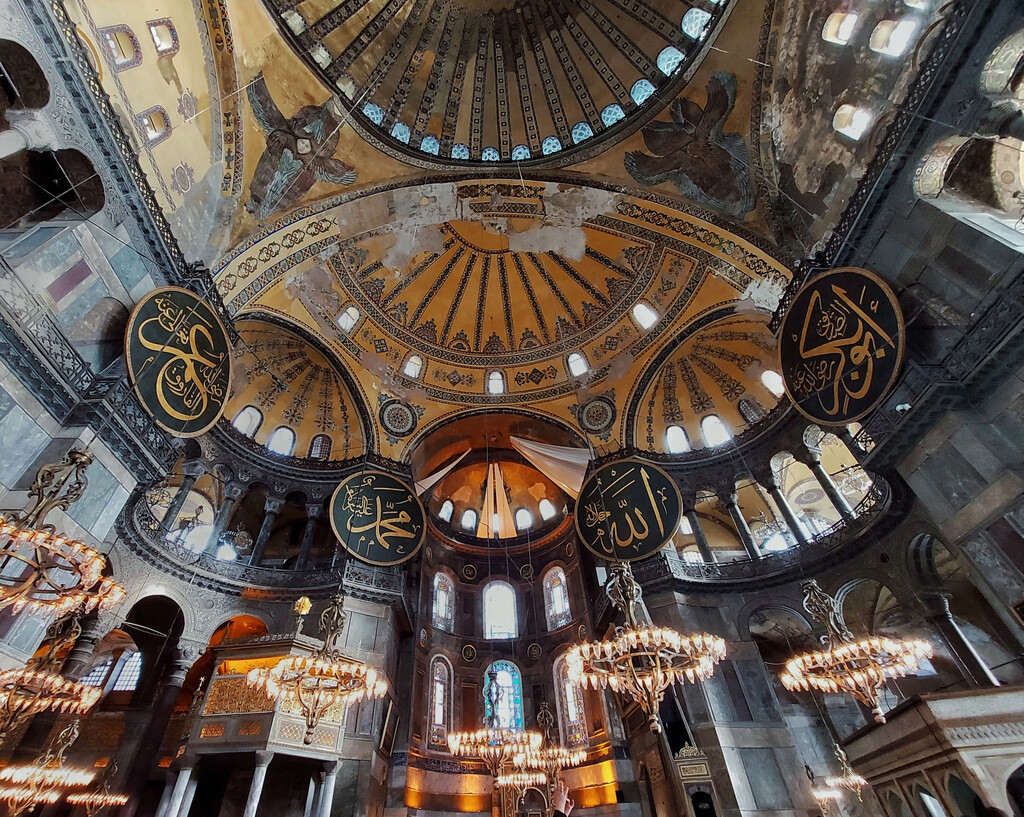
Hagia Sophia is the most important historical monument in Istanbul with its 1500-year history. Hagia Sophia was built as a church during the Byzantine period. The building, which remained a church for 900 years, was converted into a mosque in the 15th century.
Hagia Sophia has been the most respected place of worship in Istanbul throughout history. It existed as the head church during the Byzantine period and as the head mosque during the Ottoman period.
Hagia Sophia, which served as a museum for a long time during the Republican era, was converted back into a mosque again as of 2020. Hagia Sophia ranks first in our list of the best mosques in Istanbul, both with its architectural features and its spiritual significance.
2. Blue Mosque
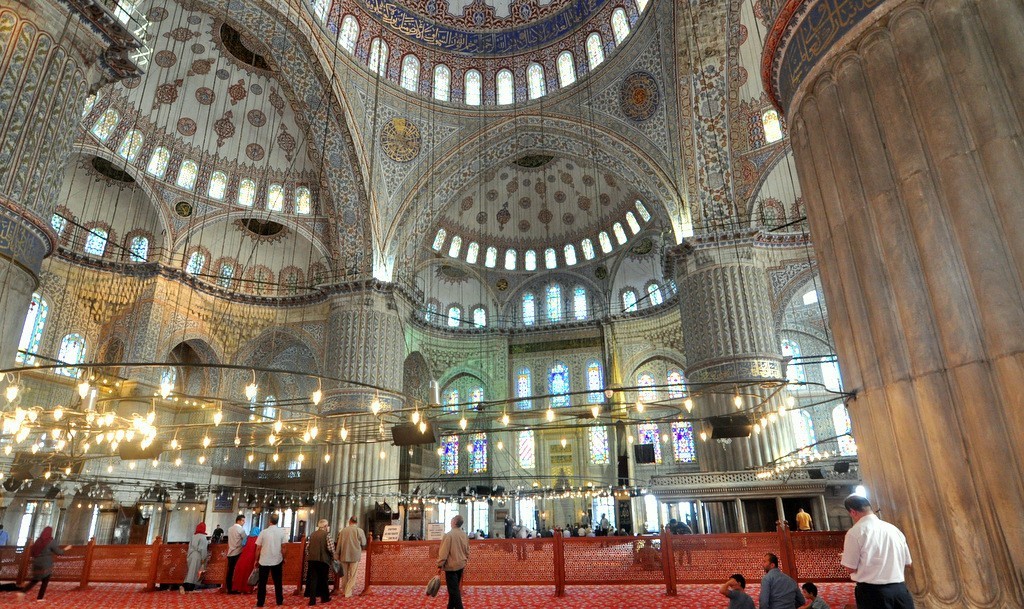
Blue Mosque is located in Istanbul’s Sultanahmet district and is also known as the Sultan Ahmed Mosque. Dating to the 17th century, the mosque is one of the most famous historical monuments in Istanbul.
The Blue Mosque doesn’t give any clue about its name when you look at it from the outside. However, when you go inside, you see the blue colored Iznik tiles on the walls. Iznik tiles represented the pinnacle of Ottoman pottery.
3. Suleymaniye Mosque
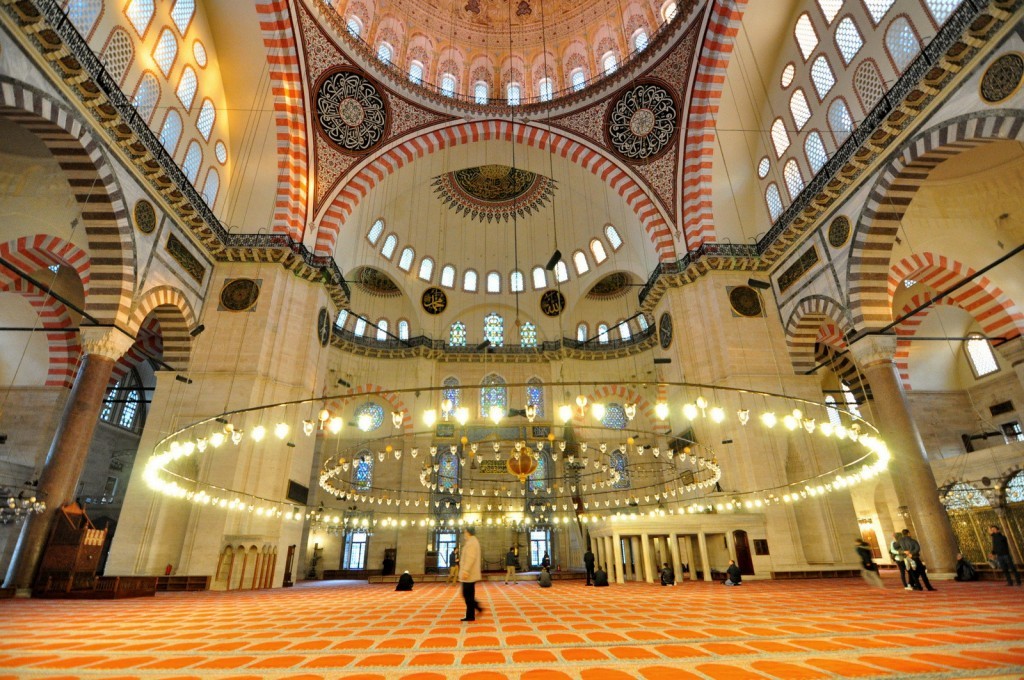
Suleymaniye Mosque is located on a hill in the middle of the Historical Peninsula and overlooks the city. The mosque, which has a wonderful Bosphorus and Golden Horn view, is also the largest mosque in Istanbul.
One of the things that makes Suleymaniye Mosque important is that it was built for the most famous ruler of the Ottoman Empire, Suleiman the Magnificent . The person who built the mosque was Mimar Sinan , the master architect of the Ottoman Empire.
4. Fatih Mosque
Fatih Mosque is located in the heart of the Historical Peninsula. Dedicated to Mehmed the Conqueror , the first Ottoman sultan in Istanbul, the history of the mosque dates back to the 15th century.
Fatih Mosque rises on the foundations of the Church of the Holy Apostles , which was the second largest church in the city during the Byzantine period. The recently restored mosque has a very stylish interior decoration.
5. Bayezid Mosque
Bayezid Mosque is located in Beyazit Square, one of the most crowded squares in Istanbul. Neighboring the Grand Bazaar and Istanbul University, the mosque is dedicated to Bayezid II, son of Mehmed the Conqueror.
Beyazit Mosque was built next to the Old Palace, the first palace built by the Ottomans in Istanbul. It is the most magnificent mosque built before the Classical Period, the peak years of Ottoman architecture.
6. Yavuz Selim Mosque
Yavuz Selim Mosque is one of the buildings that shape the silhouette of old Istanbul. The mosque is located close to Balat, the rising touristic district of recent years. Rising on one of the 7 hills of Istanbul, the mosque overlooks the Golden Horn.
Although Selim I reigned only eight years, he had tripled the borders of the Ottoman Empire. During this period, he took the holy cities of Mecca, Medina and Jerusalem. Sultan Selim, the predecessor of Suleiman the Magnificent, left a great legacy to his son.
7. Mihrimah Sultan Mosque
Mihrimah Sultan Mosque is located very close to the famous land walls of Istanbul. Built in the 16th century, the mosque was dedicated to Mihrimah, the daughter of Suleiman the Magnificent.
Mihrimah Sultan’s mosque next to the Theodosian Walls is quite impressive with its dimensions. Built by Mimar Sinan, the most prolific architect of the Ottoman era, the mosque is not the only mosque dedicated to Mihrimah.
Mihrimah Sultan had another mosque built in the Uskudar district on the Asian side. This mosque is smaller than the mosque in Edirnekapi and is located very close to the Uskudar ferry port.
8. Little Hagia Sophia Mosque
Little Hagia Sophia Mosque is a relatively little-known historical monument even though it is very close to Sultanahmet. The original name of Little Hagia Sophia, which was essentially a Byzantine church, was Church of Saints Sergius and Bacchus .
Built during the reign of Emperor Justinian , the most famous ruler of the Byzantine Empire , this building has a 1500-year history like Hagia Sophia. Anthemius, one of the architects who built Hagia Sophia, used a revolutionary architectural style in this church.
The structure, which was converted into a mosque during the Ottoman period, was named Little Hagia Sophia Mosque because of its similarity to Hagia Sophia. Byzantine engravings on the walls of the building can still be seen.
9. Kariye Mosque
Kariye Mosque is located on the western side of the Historic Peninsula, at the foot of the city walls. This structure was the church of the monastery known as Chora in the Byzantine period.
Chora Church served under the name Kariye Mosque during the Ottoman period. The building, which was a museum in the Republican era, was turned back into a mosque in 2020, just like Hagia Sophia.
The most striking feature of the Kariye Mosque is that it has the most beautiful mosaics from the Byzantine period. The mosaic collection of Kariye is much richer than Hagia Sophia.
10. Nuruosmaniye Mosque
Nuruosmaniye Mosque is located right next to the main entrance of the Grand Bazaar . This elegant mosque was built in the 18th century, when the Baroque influence began to be seen in the Ottoman Empire.
Nuruosmaniye Mosque represents the transition period when the classical period architecture left its place to modern architecture. Nuruosmaniye Street, full of luxury shops stretching from Sultanahmet to the Grand Bazaar, takes its name from this mosque.
Most people who go shopping in the Grand Bazaar pass through the courtyard of this mosque, but do not visit the inside of the building. However, Nuruosmaniye Mosque is one of the best mosques in Istanbul with its elegant interior decoration.
11. New Mosque
New Mosque is located in Eminonu, the transportation hub of the Old City of Istanbul. New Mosque (aka Yeni Cami) is also adjacent to Spice Bazaar , the famous historical shopping place of Istanbul.
The New Mosque was built in the 17th century by a Valide Sultan (mother of the sultan). In the Ottoman period, a bazaar was built right next to the mosques to cover the maintenance costs.
Thus, the New Mosque and Spice Bazaar were designed as part of the same complex. Today, the square in front of the New Mosque and Spice Bazaar is crowded with people throughout the day.
12. Sehzade Mosque
Sehzade Mosque was built in the 16th century for Prince Mehmed, son of Sultan Suleiman. Suleiman had this mosque built for his favorite son, who died of chickenpox at an early age.
According to some historians, Suleiman had designed this mosque for himself. However, when his son died suddenly, he buried him here and changed the mosque to Sehzade (meaning prince) Mosque in his memory.
The architect of the mosque, Mimar Sinan, had already done his best for the Sehzade Mosque. When it came to building another mosque for Suleiman, he would have to surpass his success in this mosque. Thus, he created his masterful Suleymaniye Mosque.
13. Rustem Pasha Mosque
Rustem Pasha Mosque is located very close to the Spice Bazaar in Eminonu. The mosque among the local markets is often overlooked by tourists. However, this mosque is exactly a hidden treasure.
During the Ottoman period, the construction of palaces, mosques and tombs gained momentum in the Classical Period. The most important decoration element in this period was tiles. Iznik Tiles represented the highest quality.
Rustem Pasha Mosque is decorated with the best examples of Iznik tiles. For this reason, it has a special place among the mosques in Istanbul. Those interested in art history are strongly recommended to see this hidden gem.
14. Eyup Sultan Mosque
Eyup Sultan Mosque is considered the holiest mosque in Istanbul. Dedicated to Abu Ayyub al-Ansari , one of the important figures of the Islamic religion, the mosque is located in the Eyup district on the shores of the Golden Horn.
Eyup Sultan Mosque is actually the first mosque built by the Ottomans in Istanbul after the conquest. However, since the original mosque was destroyed by the earthquake, it was rebuilt in the 18th century.
Although Eyup Sultan Mosque has small dimensions in its current form, it is of great importance. In addition, the mosque’s dome and the walls surrounding it are more impressive than many large mosques, thanks to their perfect proportions.
15. Laleli Mosque
Laleli Mosque is located in one of the busiest districts of the Historic Peninsula. Built in the 17th century by Sultan Mustafa III, the mosque was inspired by the Selimiye Mosque, the pinnacle of Ottoman classical architecture.
Selimiye Mosque was the masterwork of Mimar Sinan, who designed dozens of mosques in the Ottoman period. The dome on the octagonal structure, which is the trademark of Selimiye, was applied here as well.
If you do not have time to go to the city of Edirne to see the Selimiye Mosque, the pinnacle of Ottoman architecture, you can get an idea from this mosque. In addition, Laleli district is among the best places to stay in Istanbul , with large hotels opened in recent years.
16 Pertevniyal Valide Sultan Mosque
Pertevniyal Valide Sultan Mosque is located in Aksaray, one of the transportation centers of the Historical Peninsula. With its baroque structure, the mosque has a different look than in old Istanbul.
The mosque has an appearance that blends Baroque, Neo Classical and Neo Gothic architecture. The mosque, which was built in the 19th century, when the Ottomans had a Western-influenced architecture, was built by the Balyan family.
The Balyan family had made many contributions to Istanbul in the last century of the Ottoman Empire. The family, who worked as a palace architect for several generations, was decisive in the modern period architecture of the Ottoman Empire.
17. Sokullu Mehmed Pasha Mosque
Sokullu Mehmed Pasha Mosque was built by one of the most important statesmen in Ottoman history. Sokullu Mehmed Pasha had served as the Grand Vizier (Prime Minister) during the reign of Sultan Suleiman.
The mosque, which was built by Mimar Sinan, the famous architect of the period, rises on a very hilly area. The mosque complex was built in one of the most crowded settlements of the city at that time and was also a madrasah (school).
The Sokullu Mehmed Pasha mosque is a hidden gem, as is the Rustem Pasha Mosque on the top lines. The most precious Iznik Tiles in Istanbul are found in these two mosques. In addition, the mosque impresses the visitor with its magnificent proportion.
18. Gul Mosque
Gul Mosque is located in Balat, one of the most popular districts of recent years. Gul Mosque, essentially an 11th-century Byzantine church, reflects late Byzantine architecture.
This structure was dedicated to a religious woman (Theodosia) who opposed Iconoclasm during the Byzantine period. Theodosia was later honored with martyrdom by the Eastern Church. The building, named Hagia Theodosia Church, was a place believed to heal people.
This mosque is one of the stops during my Fener Balat walking tour . Cibali, Fener and Balat districts, which are out of the tourist route in Istanbul, contain a very rich cultural heritage.
19. Arap Mosque
Arap Mosque is a hidden paradise among the hardware stores in Karakoy. The building was originally a Roman Catholic church built by the Latins in the 13th century. In the 15th century, it was converted into a mosque by the Ottomans.
During both the Byzantine and Ottoman periods, there were Italian trade colonies on the northern shore of the Golden Horn. Among them, the Genoese left artifacts such as the Galata Tower and Yoros Castle in Istanbul.
This church also belonged to the Levantines operating in the Port of Constantinople during the Byzantine period. The building stands out as the only example of medieval gothic architecture in Istanbul.
The building, which was converted into a mosque at the end of the 1400s, was allocated by the Sultan to the Andalusian Arabs fleeing the Spanish Inquisition. The name of the mosque also comes from them.
20. Kilic Ali Pasha Mosque
Kilic Ali Pasha Mosque is located right next to Tophane Tram Stop. The mosque was built for Ali Pasha, one of the admirals in the peak years of the Ottoman Empire. Ali Pasha, who is of Italian origin, received the title of “Kilic” (sword) because of his boldness.
The most distinctive feature of Kilic Ali Pasha Mosque is that it has the most similar interior to a Byzantine church in Ottoman architecture. The reason for this is that the admiral who built the mosque was a fan of Hagia Sophia.
This mosque was built by the master architect Mimar Sinan, who designed all the buildings of the Ottoman Empire in the 16th century. Next to the mosque is Kilic Ali Pasa Hammam, one of the best Turkish baths in Istanbul .
As an Istanbulite, this mosque is special to me. I rank Kilic Ali Pasa Mosque in the top five among the best mosques in Istanbul in 2024. Because the magnificent proportion of the mosque amazes me every time I visit it.
21. Nusretiye Mosque
Nusretiye Mosque is located on the tram line between Karakoy and Kabatas. The mosque, which is one of the most elegant structures of late Ottoman architecture, has baroque architecture.
Nusretiye has the sharpest baroque lines among the mosques in Istanbul. The reason for this is that it was made by Mahmud II, who made great reforms in the Ottoman Empire and reorganized the army in the Western order.
Mahmud II realized that the Ottoman Empire was far behind the West in terms of technology and military in the 1700s, and he embarked on a major reorganization. The traces of this westernization can be seen in the architecture of the mosque he had built.
22. Dolmabahce Mosque
Dolmabahce Mosque is dedicated to the mother of Sultan Abdulmecid, who ruled in the 19th century. The mosque is also known as the Bezmialem Valide Sultan Mosque and is located right next to the Dolmabahce Palace.
Dolmabahce Palace consists of a single-domed mosque and an adjacent pavilion. The minarets are adjacent to the pavilion, which is also the entrance of the mosque. In addition, these minarets are the thinnest minarets compared to other mosques in Istanbul.
23. Ortakoy Mosque
Ortakoy Mosque is located in one of the most beautiful spots on the Bosphorus. The mosque has an exterior that features Neo-classical and Baroque elements and offers a wonderful view to those who take a Bosphorus cruise .
Ortakoy Mosque is also known as Buyuk Mecidiye Mosque. There is a magnificent Bosphorus view from inside the mosque. In addition, the calligraphy on the plates inside the mosque was made by the sultan himself.
A walk starting from Ortakoy district and ending in Bebek is one of the best things to do in Istanbul . Before taking a walk on this route, you can also visit Ortakoy Mosque, one of the best mosques in Istanbul.
24. Beylerbeyi Mosque
Beylerbeyi Mosque adorns the shores of the Asian side of the Bosphorus. The mosque is located next to the Beylerbeyi Palace and is a baroque Ottoman mosque from the 18th century.
There is a large Sultan lodge in the sea-facing part of Beylerbeyi Mosque. Unlike other mosques, this lodge is not right next to the mihrab. On the contrary, the lodge is in a position to watch the interior of the mosque like a theater stage.
25. Camlica Mosque
Camlica Mosque is the youngest mosque on our list. Located on Camlica, the highest hill on the Asian Side of Istanbul, the mosque was built recently. The building, which draws attention with its dimensions, can be seen from many places in Istanbul.
Although Camlica Mosque was built in modern times, it carries the architectural features of the classical period of the Ottoman Empire. The mosque, which is a blend of the most beautiful features of Ottoman architecture, is worth seeing.
Of course, there are many mosques in Istanbul that are not on this list. However, you can find almost all of the most visited mosques in the city in this article. Most of these mosques are located in the Historical Peninsula, Beyoglu, Besiktas and Bosphorus districts.
In this article, I compiled the historical and architectural features of some mosques with the information I obtained from Dogan Kuban’s book Ottoman’s Istanbul . After the article on the best mosques in Istanbul, the article on the best museums in Istanbul may also interest you.
About Serhat Engül
Hello explorer of Istanbul! This is Serhat Engul. I am a licensed TOUR GUIDE IN ISTANBUL. I offer PRIVATE HALF DAY TOUR which includes a visit to the Hagia Sophia, Blue Mosque, Hippodrome, Basilica Cistern and the Spice Bazaar. This is a fantastic option to see some of the ICONIC LANDMARKS in the whole of Istanbul and you’ll receive plenty of background information on each location to enlighten you. You may see the details of this tour on the HOMEPAGE of the blog. I wish you a wonderful trip!
Reader Interactions
18 April 2022 at 12:35
Again, I am in awe of your research and writing, this is such a beautiful and informative article. Thank you for writing this.
I have a question though, when Churches convert into Mosques, are their mosaics removed or are they covered as pictures, idols, and paintings of living beings are prohibited in mosques.?
Moreover, if they are covered then do they get uncovered for visitors during any specific timings maybe?
19 April 2022 at 12:18
Hi Moon, thanks for the feedback. Yes, two museums in Turkey have been turned into mosques again. One of them is Hagia Sophia and the other is Kariye Museum (former Chora Church).
The status of the mosaics in Hagia Sophia is not clear at the moment. Only a mosaic (Virgin and the Child) in the center of Hagia Sophia is covered with a curtain. The remaining mosaics are open.
The Chora Museum was converted into a mosque after Hagia Sophia. However, as the walls of Chora were completely covered with mosaics, it was not decided exactly what to do.
Leave a Reply Cancel reply
Your email address will not be published. Required fields are marked *
Istanbul Travel Guide
Istanbul Clues travel guide is designed to introduce you to the history, museums, restaurants and culture of istanbul.
Private Tour Guide in Istanbul
Author of this blog, Serhat Engul, is a licensed tour guide based in Istanbul.
- Hagia Theodosia Church (Gul Mosque) in Istanbul
- Best Wine Shops & Bars in Istanbul (Updated 2024)
- The Church of the Holy Apostles (Istanbul) 2024
- 8 Best NIGHTCLUBS in Istanbul (Updated 2024)
- Kadir Has University (former Cibali Tobacco Factory)
Powered by Reborn Travel Agency
You will be redirected to your dashboard shortly. We will also call you back in 24 hrs .
- Famous Landmarks In Turkey: Turkish Delights Unlocked
16 May 2024
Nestled at the crossroads of civilisations, Turkey is the land where East meets West. But what truly sets this country apart is its famous landmarks. From the majestic domes of the Blue Mosque to the ancient whispers of Hagia Sophia, these famous landmarks in Turkey stand as proud guardians of the nation’s past, offering a gateway to centuries of history and tradition. So, gear up and join us on this visual tour where we will unlock the famous secrets of Turkey.
7 Famous Landmarks In Turkey
The famous landmarks in Turkey showcase a World where past, present, and future converge. The spirit of exploration has no boundaries and travellers will find buckets full of treasure troves. Let us take a dive into a world of culture, history, and unparalleled beauty. Here are the most famous landmarks in Turkey.
1. Blue Mosque, Istanbul

Image Source: Shutterstock
The Sultanahmet Mosque, also known as the Sultan Ahmet Mosque, is one of the most famous sites in Turkey and an important historical landmark of Turkey. Known for its beautiful architecture and beautiful blue-tiled interiors, this historic site attracts visitors from all over the world. Built-in the early 17th century, the Blue Mosque is an important cultural and religious landmark as a place of worship for Muslims and a symbol of Istanbul’s rich heritage. Considered the most fantastic example of Ottoman architecture, it attracts visitors’ attention with its highest minarets, giant domes, and vast areas.
Exploring the Blue Mosque is a must for tourists who want to understand Turkey’s history. Once inside, visitors are mesmerised by the interior’s different elements, including beautiful inscriptions, stained-glass windows, and elegant chandeliers.
Location: Binbirdirek, At Meydanı Cd No:10, 34122 Fatih/İstanbul Timings: Open daily, except during prayer times (check local timings) Additional Information: Modest clothing and visitors should remove their shoes before entering.
Must Read: Things Not To Do In Turkey
2. The Hagia Sophia of Istanbul
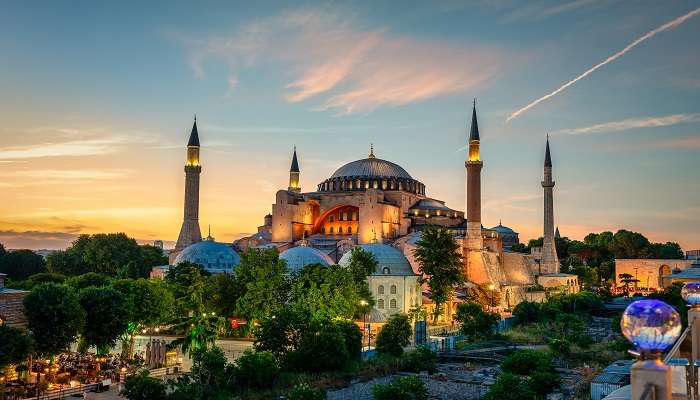
Istanbul’s Hagia Sophia is one of the most historical landmarks in Turkey, attracting tourists with its rich history and beautiful architecture. First built as a Byzantine Basilica in the sixth century, it was later used as an Ottoman Mosque and eventually converted into a museum. Its majestic domes, intricate mosaics and towering minarets reflect a blend of Byzantine and Ottoman architectural styles, symbolising Istanbul’s cultural and religious transition. Visitors admire Hagia Sophia’s timeless beauty and discover its historical past.
Hagia Sophia is a must-see place for tourists who want to explore Turkey’s historical places. Inside, visitors are greeted by beautiful mosaics depicting religious beliefs and marble columns that testify to centuries of architectural evolution. Climb to the top for panoramic views of the majestic dome and city skyline, offering a unique view of Istanbul’s rich heritage.
Location: Ayasofya Meydanı, Sultanahmet Fatih, Istanbul Timings: Open daily, except Mondays (check local timings) Additional Information: Consider purchasing tickets in advance to avoid long queues
3. Topkapi Palace
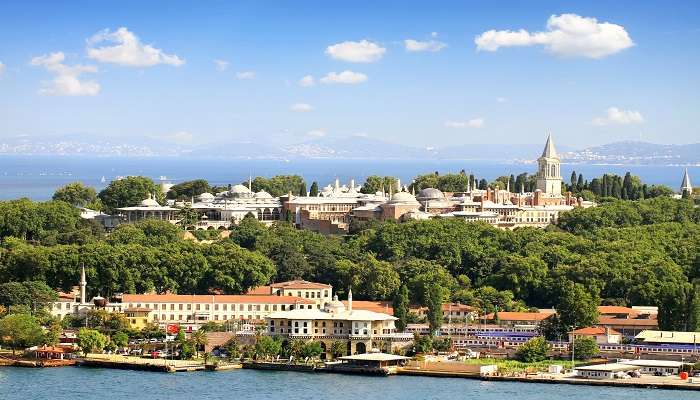
Topkapi Palace is one of most famous sites in Turkey, known for its rich history and beautiful architecture. It is one of the famous temples of Turkey and served as the residence and seat of the Ottoman sultans for centuries. Visitors come to this landmark in Turkey to explore the vast grounds, including lush gardens, beautiful palaces, and ornate rooms filled with beautiful and timeless artifacts.Visit Topkapi Palace to discover and understand Turkey’s rich heritage and witness the power of the Ottoman Empire for the first time. Visitors can admire the beautiful buildings, tour the royal palace, and marvel at the treasures in the storerooms.
Location: Cankurtaran, 34122 Fatih/İstanbul Timings: Open daily, except Tuesdays (check local timings) Additional Information: Guided tours are available for a more in-depth exploration
Suggested Read: Places For Photography In Turkey
4. The Grand Bazaar
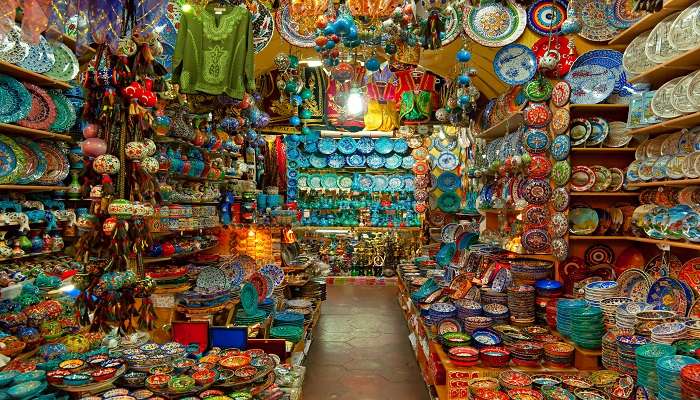
The Grand Bazaar stands as one of the most iconic and famous landmarks in Turkey, renowned for its vibrant marketplace and atmosphere. As one of the most famous sites in Turkey, it dates to the 15th century and has remained a vibrant hub of trade and commerce ever since. Visitors are captivated by the maze-like streets and alleys of the bazaar, which are lined with thousands of shops selling everything from spices and textiles to jewellery and ceramics.Visitors flock to the Grand Bazaar to experience the sights, sounds, and aromas of this bustling market and to shop for unique souvenirs and treasures. With its rich history and diverse array of goods, the Grand Bazaar offers visitors a glimpse into Turkey’s vibrant culture and heritage.
Location: Alemdar, Yerebatan Cd. 1/3, 34410 Fatih/İstanbul Timings: Monday to Friday (9 AM to 7 PM) and closed on Sundays Additional Information: Do explore the underground chambers
5. The Basilica Cistern Landmark
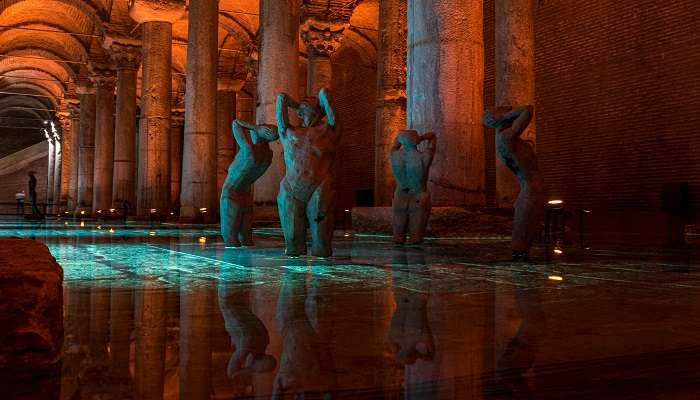
The Basilica Cistern Landmark is renowned as one of the most famous landmarks in Turkey, and it is celebrated for its historical significance and architectural marvel. As one of the most famous sites in Turkey, it dates to the Byzantine era and served as a vital water storage system for the city of Constantinople, now Istanbul. Visitors are drawn to this iconic landmark in Turkey to marvel at its impressive size and the intricate design of its columns, which are believed to have been repurposed from earlier Roman structures.
Tourists flock to the Basilica Cistern to explore its atmospheric chambers and to admire the famous Medusa heads that adorn the base of two of its columns. It is one of the most famous buildings in Turkey with its mysterious atmosphere and fascinating history; the Basilica Cistern offers visitors a unique glimpse into Turkey’s rich past.
Location: Alemdar, Yerebatan Cd. 1/3, 34410 Fatih/İstanbul Timings: Open daily Additional Information: Check impressive columns and atmospheric lighting in the underground.
Suggested Read: Temples In Turkey
6. Bosphorus Strait

The Bosphorus Strait is renowned as one of the most famous landmarks in Turkey, revered for its breathtaking natural beauty and strategic significance. As one of the landmarks in Turkey, it serves as a vital waterway that separates the European and Asian sides of Istanbul, linking the Black Sea to the Sea of Marmara.Tourists are captivated by the stunning vistas of palaces, mosques, and fortresses that line the shores of the Bosphorus, making it a must-visit destination for anyone exploring famous landmarks in Turkey. From leisurely boat tours to exhilarating ferry rides, there are countless ways for visitors to experience the beauty and grandeur of this iconic strait making it one of the most historical landmarks in Turkey.
Location: Istanbul, Turkey Timings: Cruises available throughout the day Additional Information: Enjoy panoramic views of Istanbul’s skyline, including iconic landmarks like the Maiden’s Tower and the Dolmabahçe Palace.
7. Fairy Chimneys in Cappadocia

Fairy Chimneys in Cappadocia are renowned as one of the most famous landmarks in Turkey, and they are celebrated for their unique geological formations and surreal landscapes. As one of the famous sites in Turkey, they have captivated visitors for centuries with their towering rock pillars and otherworldly appearance. Formed by volcanic eruptions millions of years ago, these remarkable structures have been sculpted by wind and water erosion over time, resulting in whimsical shapes that resemble chimneys and mushrooms.Visitors are drawn to the Fairy Chimneys in Cappadocia to witness the remarkable sight of these towering rock formations and to explore the underground cities and rock-cut churches that dot the region. As one of the famous sites in Turkey, they offer a glimpse into the area’s fascinating history, with evidence of human habitation dating back thousands of years. Tourists can participate in guided hikes, horseback riding tours, or ATV adventures to discover the hidden gems of Cappadocia’s Fairy Chimneys.
Location: Göreme, 50180 Göreme/Nevşehir Merkez/Nevşehir Timings: Accessible year-round Additional Information: Consider booking a hot air balloon ride for a bird’s-eye view
Further Read: Turkey With Kids
Hope you found this guide to famous landmarks in Turkey enlightening. However, mere words cannot capture the grandeur of these iconic sites. They must be witnessed and experienced firsthand to appreciate their magnificence truly. These landmarks demand your undivided attention, promising an unforgettable journey through history and beauty. Plan a trip to Turkey and explore these wonderful locations with your family or friends.
For our editorial codes of conduct and copyright disclaimer, please click here .
Cover Image Source: Shutterstock
Frequently Asked Questions About Famous Landmarks in Turkey
What are some famous landmarks in Turkey?
Turkey is home to many famous places, such as the Blue Mosque, Hagia Sophia in Istanbul, Topkapi Palace, Grand Bazaar, the Basilica Cistern area, the Bosphorus, and the chimneys of Cappadocia. Due to their historical importance and architectural beauty, Turkey's main symbols attract the attention of millions of tourists every year.
What makes the Blue Mosque one of the famous landmarks in Turkey?
The Sultanahmet Mosque, also known as the Sultan Ahmed Mosque, is famous for the blue tiles that form its interior walls, hence its name. Due to its beautiful architecture and historical significance, it is considered one of Turkey's iconic landmarks.
Why is the Bosphorus Strait considered a famous landmark in Turkey?
The Bosphorus is a natural waterway that separates the city of Istanbul from rural Europe and Asia. Famous for its stunning landscapes, historical waterside mansions, and iconic structures such as the Maiden's Tower, it is a must-see for tourists in Turkey.
Why is Hagia Sophia considered a must-visit among famous landmarks in Turkey?
The UNESCO World Heritage Site reflects Byzantine architecture. Once a church, then a mosque, and now a museum, this structure shows the history of Turkey and is famous for its domes and mosaics.
Are famous landmarks in Turkey crowded with tourists, and when is the best time to visit?
Crowded, especially during spring and summer travel. Consider going early in the morning or out of season to avoid crowds. Also, purchasing tickets and planning your visit can help reduce wait times.
Recent Posts

Must See Rivers in Vietnam For A Complete Vietnamese Experience

Picnic Spots In Surat: Escape From The City Noises And Pamper Yourself With Stunning Destinations

5 Must-Visit Destinations On The Delhi To Udaipur Road Trip
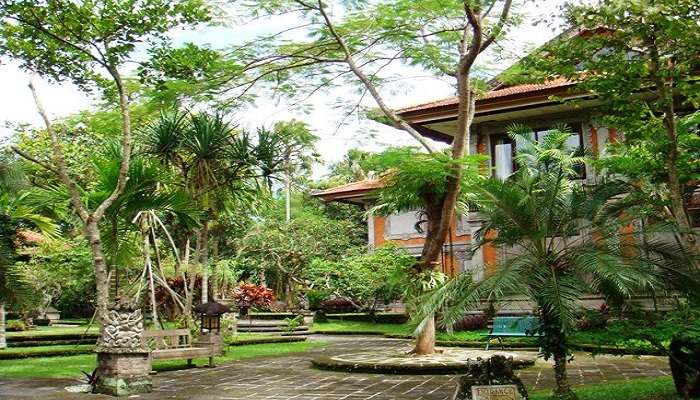
Agung Rai Museum Of Art: Immersing Into Balinese Culture
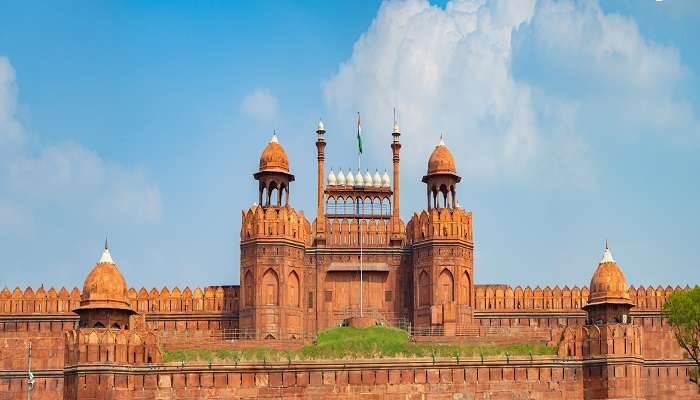
Top 10 Places To Visit Near Red Fort Delhi Within 200 Km
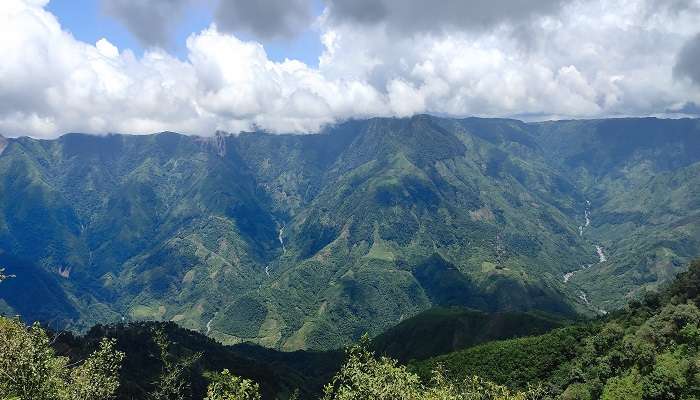
Picnic Spots In Meghalaya: Absolute Paradise For Unwinding During Weekends
Trending Blogs

20 Mysterious Places In India To Visit In 2023 More Bizarre Than The Bermuda Triangle

10 Scariest Roads In India That Are A Driver’s Nightmare

101 Places To Visit In India Before You Turn 30 in 2024

35 Exotic Places To Visit In December In India 2024 To Enjoy A Surreal Vacation

60 Best Honeymoon Destinations In India In 2024

95 Best Honeymoon Destinations In The World In 2023 For A Romantic Escape!
Best Places To Visit In India By Month
Best places to visit outside india by month.
- TravelTriangle
- International
- Turkey »
- Tour Packages
- Honeymoon Packages
- Family Packages
- Budget Tour Packages
- Luxury Tour Packages
- Adventure Tour Packages
- Group Tour Packages
- Maldives Tour Packages
- Bali Tour Packages
- Dubai Tour Packages
- Singapore Tour Packages
- Thailand Tour Packages
- Europe Tour Packages
- Sri Lanka Tour Packages
- Tour Packages From Delhi
- Tour Packages From Mumbai
- Tour Packages From Bangalore
- Tour Packages From Chennai
- Tour Packages From Kolkata
- Tour Packages From Hyderabad
- Tour Packages From Ahmedabad
- Thailand Tourism
- Bali Tourism
- Singapore Tourism
- Maldives Tourism
- Mauritius Tourism
- Dubai Tourism
- Europe Tourism
- Hotels in Thailand
- Hotels in Maldives
- Hotels in Mauritius
- Hotels in Bali
- Hotels in Dubai
- Hotels in Singapore
- Hotels in Sri Lanka

10 Things To Do On A Layover In Istanbul, Türkiye
- Indulge in Turkish cuisine by booking a food tour in Istanbul to experience the culture and traditions through food. Best Tour Companies: Secret Food Tours and Yummy Istanbul. Cost varies.
- Explore the aromatic spice market at the Egyptian Bazaar in Fatih district. Hours: 8 AM to 7:30 PM. Cost: Free.
- Take advantage of Istanbul's unique location and cross the Bosphorus to explore two continents within one city. Cost: From ~10 Turkish Lira ($0.50).
Visiting Istanbul, Türkiye, on a layover, is a great way to cross another country off the bucket list without paying for a separate flight to the destination.
Turkish Airlines is an ideal airline for transiting through Istanbul and making use of the stopover time to explore (there are also many other airlines that offer free stopovers ). Turkish Airlines even has a stopover program for connections of 20 hours or longer in Istanbul .
So, for those wondering how to spend a layover in Istanbul, here are a number of things to do in the capital of Turkey , a city that bridges continents.
Related: Traveling Turkey? Here Are The Best Modes Of Transportation
Take A Turkish Food Tour
One of the best things to do in Istanbul on a layover is to indulge in Turkish cuisine. Hopefully, travelers arrive hungry (or make room) because the food in Istanbul's best dining spots is worth indulging in.
Booking a food tour as part of a stopover in Istanbul is a great way to learn about the culture and traditions through food while getting information about the best and oldest restaurants in the city.
- Best Tour Companies: Secret Food Tours and Yummy Istanbul
- Cost: Varies
Visit A Spice Market
Spice markets are an aromatic place to explore and shop in Istanbul. The Egyptian Bazaar in the Fatih district is home to an expansive spice market that overwhelms the senses in the best possible way.
- Address: Rüstem Paşa, 34116 Fatih/İstanbul, Türkiye
- Hours: 8 AM to 7:30 PM
Related: 10 Off-The-Beaten-Path Destinations You Should Visit In Turkey
Cross The Bosphorus To Asia
The Istanbul Airport is located in the city’s Arnavutköy District, which is on the European side of the Bosphorus Strait.
This body of water divides Europe and Asia, allowing travelers to explore two continents within one city on a single layover.
- Address: Caferağa, 34710 Kadıköy/İstanbul, Türkiye
- Hours: 24 hours
- Cost: From ~10 Turkish Lira ($0.50)
Visit A Mosque
Islam is the primary religion in Turkiye, with 99% of the population identifying as Muslim . As such, there are some beautiful mosques in Istanbul that are worth visiting on a brief layover.
Both the Hagia Sophia and the Blue Mosque are impressive structures, so travelers can make time to visit at least one.
- Address: Hagia Sophia, Sultan Ahmet, Ayasofya Meydanı No:1, 34122 Fatih/İstanbul, Türkiye OR Blue Mosque, Binbirdirek, At Meydanı Cd No:10, 34122 Fatih/İstanbul, Türkiye
- Hours: Open 24 hours but visitors hours may vary (confirm before visiting)
- Cost: Free (Donations are welcome)
Remember that modest dress codes apply when visiting mosques. Out of respect for the religion, travelers should ensure they are wearing appropriate clothes .
Have A Turkish Breakfast
A traditional Turkish breakfast is something of a feast, and travelers will want to experience it if they have at least 24 hours in Istanbul.
The table is filled with many small dishes, including olives, eggs, tomatoes, fresh-baked bread, cucumbers, cured meats, cheeses, jams, honey, and pastries.
- Where To Have Turkish Breakfast: Café Privato Restaurant, Poiká Breakfast & Coffee, and Van Kahvaltı Evi
Related: Check Out These 10 Unmissable Travel Experiences In Turkey
Bathe In A Traditional Turkish Hammam
Bathing in a traditional Turkish Hamman (spa) is a once-in-a-lifetime experience that deserves to be on travelers’ bucket lists.
These steam baths and public bath experiences are found all over Istanbul, but the Hurrem Sultan Hammam is often regarded as the best in the city.
- Address: Cankurtaran, Ayasofya Meydanı No:2, 34122 Fatih/İstanbul, Türkiye
- Hours: 8 AM to 10 PM
- Cost: From 90 euros (~$94)
Shop At The Grand Bazaar In Istanbul
Shopping is a great way to pass the time on a layover and obtain some souvenirs of the trip. Travelers can head to the Grand Bazaar, one of the oldest and largest covered markets in the world, located in the heart of Istanbul.
There are more than 4,000 shops, so there is truly something for everyone here.
- Address: Beyazıt, 34126 Fatih/İstanbul, Türkiye
- Hours: 8:30 AM to 7 PM (closed Sunday)
Related: 10 Cheap Vacation Spots In Turkey You Should Visit This Summer
Walk Around The Sultanahmet District
With limited time on a layover, travelers can simply stroll around the Sultanahmet District in Istanbul to take in some of the top sights.
This historic neighborhood is home to the Blue Mosque, the Hagia Sophia mosque, and the Obelisk of Theodosius. All of these sites are among the top attractions in Istanbul to visit on a layover, as they showcase the city's beauty, architecture, and history, all in one convenient place.
- Address: Sultanahmet, Alemdar, 34110 Fatih/İstanbul, Türkiye
- Hours: Open 24 hours
Tour The Topkapı Palace
The Topkapı Palace is a must-visit stop in Istanbul on a brief layover in Istanbul. It’s conveniently located in the Fatih District and was the administrative center of the Ottoman Empire from the 1460s until the 1850s.
Today, it can be toured as a museum that paints a vivid picture of Istanbul’s storied history.
- Address: Cankurtaran, 34122 Fatih/İstanbul, Türkiye
- Hours: 10 AM to 4 PM (closed Tuesday)
- Cost: From 750 Turkish Lira (~$27)
Visit The Galata Tower
History buffs should make a stop at the Galata Tower in Istanbul when exploring the Turkish capital on a layover. This structure was initially built as a watch tower, and today, it’s a museum.
The Galata Tower is located in the BeyoÄlu district of the city, which is one of the best places for travelers to stay. Perfect for spending an overnight layover!
- Address: Bereketzade, 34421 Beyoğlu/İstanbul, Türkiye
- Hours: 8:30 AM to 10 PM
- Cost: 650 Turkish Lira (~$23.00)
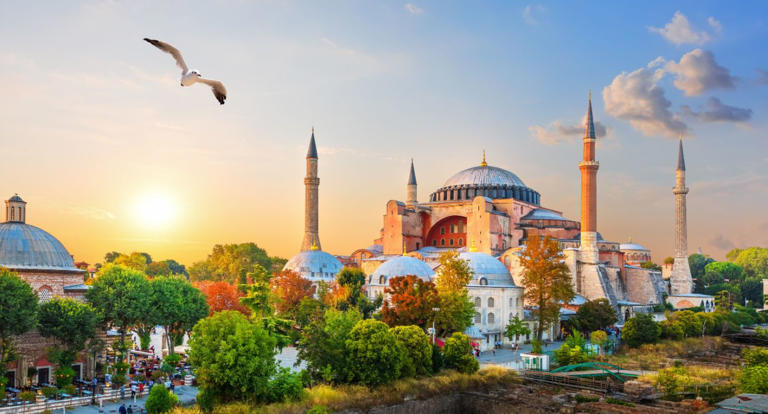
- Election 2024
- Entertainment
- Newsletters
- Photography
- Personal Finance
- AP Investigations
- AP Buyline Personal Finance
- AP Buyline Shopping
- Press Releases
- Israel-Hamas War
- Russia-Ukraine War
- Global elections
- Asia Pacific
- Latin America
- Middle East
- Election Results
- Delegate Tracker
- AP & Elections
- Auto Racing
- 2024 Paris Olympic Games
- Movie reviews
- Book reviews
- Personal finance
- Financial Markets
- Business Highlights
- Financial wellness
- Artificial Intelligence
- Social Media
Wary of wars in Gaza and Ukraine, old foes Turkey and Greece test a friendship initiative
FILE - Greece’s Prime Minister Kyriakos Mitsotakis, left, welcomes the Turkey’s President Recep Tayyip Erdogan before their meeting at Maximos Mansion in Athens, Greece, Thursday, Dec. 7, 2023. Old foes Turkey and Greece will test a five-month-old friendship initiative on Monday, May 13, 2024 when Greek Prime Minister Kyriakos Mitsotakis visits Ankara. (AP Photo/Thanassis Stavrakis, File)
FILE - Greece’s Prime Minister Kyriakos Mitsotakis, right, makes statements with Turkey’s President Recep Tayyip Erdogan after their meeting at Maximos Mansion in Athens, Greece, Thursday, Dec. 7, 2023. Old foes Turkey and Greece will test a five-month-old friendship initiative on Monday, May 13, 2024 when Greek Prime Minister Kyriakos Mitsotakis visits Ankara. (AP Photo/Michael Varaklas, File)
- Copy Link copied
ANKARA, Turkey (AP) — Old foes Turkey and Greece will test a five-month-old friendship initiative Monday when Greek Prime Minister Kyriakos Mitsotakis visits Ankara.
The two NATO members, which share decades of mutual animosity, a tense border and disputed waters, agreed to sideline disputes last December. Instead, they’re focusing on trade and energy, repairing cultural ties and a long list of other items placed on the so-called positive agenda.
Here’s a look at what the two sides hope to achieve and the disputes that have plagued ties in the past:
FOCUSING ON A POSITIVE AGENDA
Mitsotakis is to meet with Turkish President Recep Tayyip Erdogan in Ankara on Monday as part of efforts to improve ties following the solidarity Athens showed Ankara after a devastating earthquake hit southern Turkey last year.
The two leaders have sharp differences over the Israeli-Hamas war, but are keen to hold back further instability in the eastern Mediterranean as conflict also continues to rage in Ukraine.
“We always approach our discussions with Turkey with confidence and with no illusions that Turkish positions will not change from one moment to the next,” Mitsotakis said last week, commenting on the visit. “Nevertheless, I think it’s imperative that when we disagree, the channels of communication should always be open.”
“We should disagree without tension and without this always causing an escalation on the ground,” he added.
Ioannis Grigoriadis, a professor of political science at Ankara’s Bilkent University, said the two leaders would look for ways “to expand the positive agenda and look for topics where the two sides can seek win-win solutions,” such as in trade, tourism and migration.
EASY VISAS FOR TURKISH TOURISTS
Erdogan visited Athens in early December, and the two countries have since maintained regular high-level contacts to promote a variety of fence-mending initiatives, including educational exchanges and tourism.
Turkish citizens this summer are able to visit 10 Greek islands using on-the-spot visas, skipping a more cumbersome procedure needed to enter Europe’s common travel area zone, known as the Schengen area.
“This generates a great opportunity for improving the economic relations between the two sides, but also to bring the two stable societies closer — for Greeks and Turks to realize that they have more things in common than they think,” Grigoriadis said.
A HISTORY OF DISPUTES
Disagreements have brought Athens and Ankara close to war on several occasions over the past five decades, mostly over maritime borders and the rights to explore for resources in the Aegean and eastern Mediterranean seas.
The two countries are also locked in a dispute over Cyprus , which was divided in 1974 when Turkey invaded following a coup by supporters of union with Greece. Only Turkey recognizes a Turkish Cypriot declaration of independence in the island’s northern third.
The dispute over the exploration of energy resources resulted in a naval standoff in 2020 and a vow by Erdogan to halt talks with the Mitsotakis government. But the two men met three times last year following a thaw in relations and a broader effort by Erdogan to re-engage with Western countries.
The foreign ministers of the two countries, Hakan Fidan of Turkey and George Gerapetritis of Greece, are set to join the talks Monday and hold a separate meeting.
RECENT DISAGREEMENTS
Just weeks before Mitsotakis’ visit, Erdogan announced the opening of a former Byzantine-era church in Istanbul as a mosque, drawing criticism from Greece and the Greek Orthodox church. Like Istanbul’s landmark Hagia Sophia, the Chora had operated as a museum for decades before it was converted into a mosque.
Turkey, meanwhile, has criticized recently announced plans by Greece to declare areas in the Ionian and Aegean seas as “marine parks” to conserve aquatic life . Turkey objects to the one-sided declaration in the Aegean, where some areas remain under dispute, and has labelled the move as “a step that sabotages the normalization process.”
Grigoriadis said Turkey and Greece could focus on restoring derelict Ottoman monuments in Greece and Greek Orthodox monuments in Turkey. “That would be an opportunity” for improved ties, he said.
Gatopoulos reported from Athens. Robert Badendieck in Istanbul contributed.

VIDEO
COMMENTS
The Majestic Blue Mosque. Built between 1609 and 1616 by the Ottoman Empire's most favoured architect, Mimar Sinan, the Blue Mosque is often the first attraction that tourists visit. Taking its name from blue stained glass windows and exquisite Iznik tiles, its most quirky characteristic is the six minarets instead of the normal four.
3. Beylerbeyi Palace. If you step foot into this breathtaking 19th-century palace, you may end up wishing that the typical vacation homes were just like this! Beylerbeyi means lord of the lords, and the name suits considering that Beylerbeyi Palace is undoubtedly one of the many beautiful palaces in Istanbul.
The Ihlamur Pavilion is a traditional Ottoman pavilion located in Istanbul. It was initially built as a lodge and resting place for several sultans. Palace Kempinski Istanbul can be accessed by various modes of transportation, such as taxis and public transport. Jump on bus numbers 129T, 22, 30D, 42T, 57UL, DT1, or U1.
Dolmabahce Palace: After the Topkapi Palace, Dolmabahce Palace is the second most famous historical Ottoman palace in Istanbul. Built in the late Ottoman era, this place is one of the most luxurious buildings you can see. The palace has 285 rooms and 46 halls, 6 baths and 68 toilets. It was established on an area of 110,000 square meters.
It is said that the grounds are the resting site of emperors during the Byzantine era. The pavilion showcases some of the best-preserved Ottoman architecture of the present day. Hours: 9am - 5pm, Tuesday - Sunday (Closed on Mondays) Address: Keçeci Piri, Donanma Cd., 34440 Beyoğlu, İstanbul, Turkey.
20. View the Pera Museum's Ottoman-Era Art. 21. Stroll Istiklal Caddesi and Taksim. 22. Explore the District of Üsküdar. Where to Stay in Istanbul for Sightseeing. Tips and Tours: How to Make the Most of Your Visit to Istanbul. Map of Tourist Attractions & Things to Do in Istanbul.
Sultanahmet is the historical heart of Istanbul, encompassing landmarks from the Ottoman and Byzantine eras. This district is home to Haghia Sophia, the Atmeydanı (Hippodrome), Topkapı Palace ...
6 Beautiful Ottoman Palaces of Istanbul -Turkey. Istanbul's grand and beautiful Ottoman palaces are an excellent place to learn all about Turkey's colourful historical timeline. Visiting these beautiful, grand residences highlights how this royal dynasty, which once ruled nearly half the world, lived and operated.
Ottoman architecture blends various styles developed over centuries. Actually, in Istanbul, you'll find more buildings in the Ottoman style, like the Blue Mosque or Hagia Sophia. By the way, both of these spots are on my list of 14+2 Best Places to Visit in Istanbul. The very non-minimalist decor of Topkapi Palace
8. Grand Bazaar. One of the oldest and largest covered markets in the world, the Grand Bazaar is a must-see for anyone who enjoys a spot of haggling. Construction of the bazaar began in the mid 15th century, soon after the Ottomans captured the city, and today it is home to more than 4,000 shops.
Here are the top things to do in Istanbul to experience the city's different stories and faces. ... The secrets of the seraglio will be revealed during your visit to the opulent Ottoman Topkapı Palace complex occupying the promontory of Istanbul's Old City. A series of mad, sad and downright bad sultans lived here with their concubines and ...
The simply stunning Hagia Sofia is a must-visit destination in Istanbul 2. The Blue Mosque (Sultanahmet Camii) The Sultanahmet Camii, also known as the Blue Mosque, is one of the most stunning examples of Ottoman architecture. Its beautiful blue tiles, elegant minarets, and ornate interiors make it a must-see for any visitor to Istanbul.
The Topkapi Palace Museum is one of the most prominent tourist attractions in Istanbul and houses the Ottoman Empire's imperial collections as well as a huge library of books and manuscripts.; It is housed in a palace complex that served as the imperial Ottoman court's administrative center and residence from from 1478 to 1856. It opened as a museum in 1924, one year after the Republic of ...
Discover the iconic Hagia Sophia and Blue Mosque. Over a thousand years of history separates these two monumental and iconic buildings, rising proudly some 500 metres (1,640 feet) apart in the heart of Sultanahmet. Start with the Hagia Sophia, or Church of the Holy Wisdom, built in 527 at the behest of Justinian (an important emperor of the ...
Nestled within Istanbul's historic Fatih district by the Golden Horn, Istanbul University and the Grand Bazaar, Süleymaniye Mosque is considered one of the city's most impressive Ottoman mosques ...
Save up to 70% on Museums & Attractions with Istanbul E-Pass Pay Once and Have Free Attractions Entry for 2, 3, 5 or 7 days . Save up to 70%. Welcome to Topkapi Palace, a must-visit museum in Istanbul! As one of the most iconic landmarks in the city, Topkapi Palace is a perfect example of Ottoman architecture and a symbol of Istanbul's rich ...
Best things to do and see in Sultanahmet: 1. Hagia Sophia. The Byzantine Emperor Justinian commissioned Hagia Sophia in 537. While the Great Palace of Constantine, built after the Hagia Sophia, has not survived, this captivating building still stands and has a rich history.
The 20 best places to visit in Istanbul for a memorable trip ... Discover Ottoman splendors at Topkapi Palace Museum. Step into the opulent world of Ottoman sultans at Topkapi Palace Museum. This grand complex, adorned with beautifully landscaped courtyards and exquisite Iznik tiles, was the primary residence of the Ottoman sultans for over 400 ...
Before taking a walk on this route, you can also visit Ortakoy Mosque, one of the best mosques in Istanbul. 24. Beylerbeyi Mosque. Beylerbeyi Mosque adorns the shores of the Asian side of the Bosphorus. The mosque is located next to the Beylerbeyi Palace and is a baroque Ottoman mosque from the 18th century.
Explore Istanbul, Turkey. Restaurants 10. Food 6. History 6. Churches 4. Museums And Collections 4. Sacred Spaces 4. Unique Restaurants & Bars 3.
718. Bird palace. ahvenas (Atlas Obscura User) Look up while roaming the streets of Istanbul, and you may see little palaces carved into the sides of its mosques and schools. The city's birds ...
The grandeur of Dolmabahçe Palace, the main admin center of the Ottoman Empire mid 1850s to early 1900s) awaits in the Beşiktaş district—its magnificent façade only a prelude to what lies ...
Read on to learn what these experts name as the best things to do in Istanbul. Related: Travel + Leisure Readers' 3 Favorite Hotels in ... it was the last museum to open during the Ottoman Empire ...
Old City Travel back in time to ancient Byzantium. The attractive late-19th century Archaeology Museum is one of the city's finest treasures. The interior of the main building, re-opened in 2022 ...
Built-in the early 17th century, the Blue Mosque is an important cultural and religious landmark as a place of worship for Muslims and a symbol of Istanbul's rich heritage. Considered the most fantastic example of Ottoman architecture, it attracts visitors' attention with its highest minarets, giant domes, and vast areas.
The Topkapı Palace is a must-visit stop in Istanbul on a brief layover in Istanbul. It's conveniently located in the Fatih District and was the administrative center of the Ottoman Empire ...
Turkish citizens this summer are able to visit 10 Greek islands using on-the-spot visas, skipping a more cumbersome procedure needed to enter Europe's common travel area zone, known as the Schengen area. ... Erdogan announced the opening of a former Byzantine-era church in Istanbul as a mosque, drawing criticism from Greece and the Greek ...